
Home » Travel Guides » Bulgaria » 15 Best Things to Do in Sofia (Bulgaria)

15 Best Things to Do in Sofia (Bulgaria)
Bulgaria’s capital has a lot of stories to tell, and each historic attraction will give you a new perspective on Sofia’s complicated past. Take the churches here that have spent several centuries of their existence as mosques, the overbearing soviet architecture or the Roman history that is still being uncovered and blends with the modern city.
Many of the buildings you’ll see are from the Bulgarian Revival in the late-19th century, when the country reclaimed its independence from the Ottomans. And always to the southwest looms the monumental Vitosha Mountain.
Here are the best things to do in Sofia :
1. St. Alexander Nevski Cathedral

The scale of this building will blow you away. Inside St. Alexander Nevski has room for 10,000 people and it’s the second largest cathedral in the Balkan region.
As with a great deal of Sofia’s grand architecture, the city’s cathedral dates to the 1880s.
This was directly after the Ottomans were overthrown and the state of Bulgaria was re-established.
It was originally dedicated to the Russian soldiers that lost their lives in the course of this liberation.
When you’re inside, look up at ceiling of the main cupola, which has a mural of the Lord God Sabbath.
The crypt here is open to visitors and has a big collection of icons.
2. St. George Rotunda

The heart of ancient Serdica and the oldest building in modern Sofia, this red brick church was built all the way back in 300s.
It’s a wonder that this building has survived unscathed for such an amount of time, and all around are interesting little details that hit home the great age of the site and civilisations that have passed though.
Step inside to view the detailed medieval frescoes that had been painted over by the Ottomans when the church was converted to a mosque in the 1600s.
These were only rediscovered and restored in the 1990s. Outside you can see the flagstones of a Roman street and other remnants of Ancient Serdica.
3. Vitosha Boulevard

The fanciest street in the city, Vitosha Boulevard is where all the posh boutiques and fashion houses are clustered.
If you’re not an upmarket shopper then you can just console yourself with those arresting views of Vitosha Mountain which is capped with a dusting of snow for much of the year and framed by the street’s tall buildings.
It’s a thoroughly pleasant place to spend a couple of hours; the cafes along the pedestrian street have outdoor seating and in recent years the lampposts, benches and kiosks have been redesigned into an elegant art nouveau style, recalling the early years of the Bulgarian Revival.
4. St. Sofia Church

It was this church that gave the city of Sofia its name in the 1300s during the Second Bulgarian Empire.
This unassuming red brick building goes right back to Byzantine times and was founded in the 500s on top of the ancient city of Serdica’s necropolis, as well as an older church from a century before.
When you visit you can see the remnants of this ancient church and the tombs that date back more than 1500 years.
For two centuries after the Ottoman invasion this was a mosque, but was abandoned after one earthquake in the 1800s brought the minaret down and another killed the Imam’s two son’s.
5. Boyana Church

On the lower slopes of Vitosha Mountain (which we’ll come to next) is this UNESCO heritage site.
The location of this medieval church is almost dreamlike, in a grove of tall softwood trees in a quiet suburb of the city.
Boyana Church was built in three stages from the 1000s to the 1800s, but the most important additions were made during the Second Bulgarian Empire in the 1200s.
This is when the fabulous interior frescoes were painted, depicting some 240 historical and biblical figures in a realistic style 200 years before renaissance artists were doing the same.
The paintings, by an unknown artist, include contemporary portraits of two Bulgarian rulers, Tsar Konstantin Assen and Tsar Koloyan, next to their wives.
6. Vitosha Mountain

Climbing to more than 2,200 metres behind Sofia’s southwestern suburbs is Vitosha, a monumental peak in a nature park, promising more adventure than you could ever cram into one trip.
The easiest way to access Vitosha is via Aleko, the mountain’s ski resort, which is where the Simeonovo gondola lift will drop you off.
From there the walk to Vitosha’s Black Peak is surprisingly light when then weather’s good in spring or autumn, as the peak is part of a large plateau that seems to go on forever thanks to its shallow gradient.
Of course, you don’t need to go that far for an incredible, vertiginous view of Sofia.
7. National Institute of Archaeology

Ferdinand I was on hand when this museum was inaugurated back in 1905 as a way of bring all of the important archaeological finds scattered around Sofia and Bulgaria under one roof.
And the roof they chose was that of the city’s former Grand Mosque, decommissioned following the Bulgarian Revival.
The main sections here are Prehistory, Main Hall (containing items from classical civilisations), Medieval Section and Treasury.
The last on that list has the Valchitran and Lukovit Treasures, two breathtaking hoards of Thracian Gold.
Discovered in 1953, the Lukovit Treasure dates to the time of Alexander the Great’s invasion of Thrace in 400BC.
8. National Historical Museum

This museum’s home is also a piece of Bulgarian history in its own right.
The National Historical Museum is housed in the former dictator Todor Zhivkov’s residence.
It’s a hulking slab of Stalinist architecture fronted by a massive open yard.
The collection at the museum is gigantic; the 65,000 items on display is just one tenth of what is held behind the scenes in its archives.
The variety of items here is also mind boggling, going from 20th-century space research equipment to treasures belonging to the Odrysians who held sway in Bulgaria until they were conquered by the Romans in the 1st century.
9. Ivan Vazov National Theatre

The Viennese architects Helmer & Fellner, responsible for a catalogue of extravagant buildings across Central Europe, built this theatre in 1909.
True to form the Ivan Vazov National Theatre is a grand neoclassical structure that remains the last word in Bulgarian culture to this day.
The building with its towering portico is an iconic sight for Bulgaria, appearing on banknotes, and is most famous for its drama productions.
Chief Director here is Alexander Morfov, responsible for acclaimed Bulgarian and Russian language adaptations of Don Quixote and Shakespeare plays in here and in Russia.
10. Borisova gradina

Sofia’s most famous park was landscaped in the 1880s right after the Bulgarian Revival, making it the oldest one in the city.
It was developed over the next 50 years by three different designers: the Swiss Daniel Neff, the Alsatian Joseph Frei and then the Bulgarian Georgi Dutev (when the park’s Soviet monuments were installed).
But what’s impressive is that all the landscapers worked within the original plan, and the upshot is a pleasing sense of coherence for such a big project.
It all makes for a refreshing afternoon amble, and if you’re here on a summer evening there are free concerts to catch.
11. Serdica Amphitheatre

Sofia’s own Roman amphitheatre wasn’t discovered until 2004.
In its day it was one of the largest in the Roman empire, holding gladiator fights and grisly battles pitting men against wild beasts.
What’s also interesting about this arena is the way it had three lives: First it was a theatre, then an amphitheatre that was sacked by the Goths.
In the 400s the arena was rebuilt but was abandoned not long after.
After it was unearthed it became integrated into the design of the Arena di Serdica hotel, but visitors off the street are free to look down at the ruins from the hotel’s specially-designed gallery.
12. Central Mineral Baths

Sofia has a lot of spring activity, and these waters have drawn visitors since medieval times.
The Ottomans developed their own hammam at this site, and when it was destroyed following the Bulgarian Revival a new city bathing complex was built.
The Central Baths date to 1913 and were in use up until the mid-80s.
It’s one of Sofia’s most photographed buildings, constructed in the neo-byzantine style with a large dome behind an impressive vestibule.
The gardens are open to the public and the fountain at the centre is fed by the hot natural mineral water. You’re free to try it if you’re brave enough!
13. Park Vrana

These are the grounds of the stately home of the aristocrat Simeon II, who was Tsar of Bulgaria from 1943-46 before going into exile.
After returning he was prime minister from 2001-05.
The estate is only open on weekends and you can’t enter any of the buildings, but the landscaped gardens are one of the most tranquil settings in Sofia.
Multilingual guided tours take place every hour and offer fun snippets about the palace and its grounds.
For instance the estate once had an exotic menagerie, including Bulgaria’s first elephants, which were used for yardwork in the grounds!
14. The Synagogue

Sofia has the largest synagogue in the Balkan region, and the third-largest in Europe.
It was built for Sofia’s sizeable Sephardic Jewish population in 1909 and Tsar Ferdinand I of Bulgaria was here when it was inaugurated.
More than 1,000 people can fit inside this cavernous building which is in the Moorish Revival style inspired by the old Sephardic temple in Vienna, destroyed in 1938.
Step inside to see the permanent exhibition about the history of Bulgaria’s Jewish communities.
15. Banya Bashi Mosque

If you arrive outside prayer times you can drop in to tour Sofia’s only mosque.
It was designed by Mimar Sinan, the epoch-defining Turkish architect responsible for spectacular works across the Ottoman Empire during this period.
Banya Bashi is from 1576, built at the very beginning of the city’s Ottoman period.
The name comes from Sofia’s mineral baths, which had attracted visitors throughout the region during the 1500s.
The mosque can fit 700 worshippers, and if you pass on Fridays you’ll notice many stragglers outside listening via the mosque’s external loudspeaker.
15 Best Things to Do in Sofia (Bulgaria):
- St. Alexander Nevski Cathedral
- St. George Rotunda
- Vitosha Boulevard
- St. Sofia Church
- Boyana Church
- Vitosha Mountain
- National Institute of Archaeology
- National Historical Museum
- Ivan Vazov National Theatre
- Borisova gradina
- Serdica Amphitheatre
- Central Mineral Baths
- The Synagogue
- Banya Bashi Mosque
- Visas and Border Control
- Emergency numbers
- Banks and currency information
- Petrol stations
- Tour operators, tourist agencies, associations
- Communications
- About Bulgaria
- Public transport
- To and from Sofia
- Air transport
- Railway transport
- Bus transport
- Family hotels
- Guest apartments
- Guest Rooms
- Guest Houses
- Restaurants
- Coffee-shops
- Art and Culture
- Galleries and exhibition halls
- Concert halls
- Architecture
- Monasteries – Sofia Mount Athos
- Leisure and Sports
- Vitosha mountain, parks and gardens
- For family and children
- Street fitness
- Water sports
- Winter sports
- Extreme sports
- Horse riding
- Stadiums and Sports halls
- SPA & wellness
- Night life and others
- Bars and music clubs
- Dance clubs & Discos
- Sofia Routes
- Pilgrimage Routes
- Let's have a walk in Sofia
- Wine map of Sofia
- Meet the birds of Sofia
- Do not miss
- National and Official Holidays
- Religious Holidays
- Music and Dance Events
- Sports Events
- Business Events
- Exhibitions
- TIC - SOFIA
- TIC - LARGO
- TIC - CHITALNYATA
- TIC - BANKYA
- Sofia Tourism Administration
Welcome to Sofia the capital of Bulgaria
Events calendar, the wine map of sofia, sofia around me.
- 28 Apr | PalmSunday Religious Holidays
- 5 May | Easter Religious Holidays
- 6 May | StGeorge's Day, Day of BulgarianArmy Religious Holidays
- 11 May | Saints Cyril and Methodius Day Religious Holidays
- 2 May | BERND GLEMSER & MARTIN PANTELEEV Music and Dance Events
- 9 May | MISSA SOLEMNIS WITH EMIL TABAKOV Music and Dance Events
- 10 May | CINDERELLA Music and Dance Events
- All events for the day
Find out...
Accommodation. wine & dine. sights. entertainment., where to stay, where to eat, what to do.
It’s fascinating. It’s fun. It’s sure to be surprising. 400 m2 full of riveting illusions, wonderful atmosphere. The place where illusions meet scientific inventions and arts: physics and optics are displayed together with mysterious artworks and classical riddles. The exceptional educational experience is enriched by interactive entertainment — drawing with a light, creating shadows and unforgettable moments in the world upside down.
15 Fun Things to Do in Sofia, Bulgaria
Sofia isn’t a city that typically ends up on your European bucket list. But it should! Over the last four years, I’ve been to Sofia more than 10 times, and have accumulated a big list of things to do in Sofia, Bulgaria. From walking around this ancient Roman city and seeing both ruins and archaeological sites, to eating tasty traditional food or enjoying the booming craft beer scene. There is a lot to do in this city of a little under one million people.
Here are some of the best things to do in Sofia, Bulgaria based on my travels to the city over the last four years!
Some links in this post are to affiliate sites. If you purchase something through them, I may earn a small comission — which costs you nothing! I am very grateful when you use my links to make a purchase.
Best things to do in Sofia, Bulgaria
With all those travel tips out of the way, let’s take a look at some of the best things you can do in Sofia on your trip!
1. Take the free walking tour
An excellent way to start your time in Sofia is by taking one of the free 2-hour walking tours offered by Free Sofia Walking Tour . In the Summer, Free Sofia Tour operates four times per day, at 10AM, 11AM, 2PM, and 6PM. Besides the standard sightseeing tour, they also started to offer tours in Spanish as well as a tour focusing on the history of the Jewish people in Sofia.
The tour is operated by a non-profit, so it costs nothing and you are welcomed to leave a donation at the end for the tour guide.
2. Take a day trip from Sofia
Bulgaria has way more to offer than just Sofia, and is especially famous for having ancient sites and stunning nature. Here are the top three things you can do as day trips from Sofia to add some variety to your trip:
- 7 Rila Lakes and Rila Monastery Tour from Sofia Recommended – Rila Monastery is one of the TOP sights in the whole country, and this tour not only takes you to the monastery but also shows you some of the famous Bulgarian nature.
- Plovdiv and Koprivshtitsa Full-Day Tour from Sofia – Plovdiv is one of the most ancient cities in Europe, and a popular day trip (just 2 hours from Sofia). This is the top rated tour you can take that includes Plovdiv.
- Belogradchik Rocks Full-Day Trip from Sofia – These rock formations in the Balkan Mountains were nominated for the 7 new natural wonders of the world. You can spend the whole day exploring them!
3. Check out Sofia’s former bathhouse, now museum
Known as the Sofia Central Mineral Baths , this spot was once the main social spot to visit in the city. You can think of it as old-school Facebook 😉 Where all the goings-on among the locals. Some people wish the city still had a bathhouse, like the one you might know in Budapest .
Today, this historic building is home to the Sofia History Museum , which has a TON of history as Sofia is such an old city. You’ll find exhibits on pre-history, antiquity, the middle ages, all the way through modern times. If you want to appreciate the history of the city, do pop in. Even a combined ticket for both permanent and temporary exhibits will set you back just 10 lv, or 5€.
4. Enjoy the local craft beer scene
There are a number of great craft beers brewed in Bulgaria, though my favorite is probably the Stolinchno Pale Ale . You can get this beer at a number of different restaurants and bars, though I can specifically recommend two excellent spots for enjoying beerin Sofia.
- Vitamin B – This small bar located on a side street has a huge selection of beers, as well as some spots to stand outside and enjoy the sunshine.
- Kanaal – Lots of nice beers on tap, and even better it has a nice little garden where you can sit outside. Super friendly staff.
5. Taste Bulgarian wines
Bulgaria is also famous for its wine, as the grapes love to grow in the country’s sunny weather. Sofia has a number of different wine-tasting tours if you’d like to get some more information from an expert 😉
TIP – If you’re traveling outside of Sofia, definitely check out Starosel Winery , located near Plovdiv. You can drink wine underground in a room that looks like a Thracian temple! Even if you don’t stay there overnight, you can come enjoy the restaurant and winery during the day. I’ve been here and it was awesome.
6. Visit the Alexander Nevsky Cathedral
Easily the most famous sight in the entire city, the Alexander Nevsky Cathedral is a stunning example of an Eastern Orthodox church. Come inside for a dark and intimate church experience, with stunning ceilings and incredible sculptures. You can buy a photo pass for a 10 lv, or just walk around and enjoy the interior itself.
7. Walk down the main pedestrian street, Vitosha Boulevard
There are so many shops and places to eat on Vitosha Boulevard , the main pedestrian street in Sofia. You can see Vitosha Mountain, the biggest mountain that overlooks Sofia. Come here to walk up and down on the street, go window shopping, stop for a beer at a cafe, and meander past different churches.
8. Go for a hike on Vitosha Mountain
Speaking of Vitosha, you can take the ski lift up to the top and hike down. During the winter, it’s also possible to go skiing. You can also see the biggest waterfall on the mountain, Boyana Waterfall . There’s also a monastery located on the mountain, in case you can’t make it to Rila Monastery.
9. Order some traditional Bulgarian food
A lot of Bulgaria food is like a unique twist on traditional foods in neighboring countries like Greece or Turkey. Bulgaria is especially famous for its wine and tomatoes, and is a country that consumes a whole lot of meat. Here are a few foods worth trying during your trip to Sofia.
- Shopska Salad – Similar to a Greek Salad, but with Bulgarian cheese rather than feta. It’s got tomatoes, cucumber, olives, white cheese, and parsley. Seems simple but trust me, it’s addicting.
- Tarator Soup – This cold soup is yogurt-based and makes a great starter before you have your lunch.
- Meat – In general, there are a lot of options for people who enjoy eating meat. You can go to Skara Bar for a wide array of barbeque accompanied by potatoes.
- Mish mash – A vegetarian friendly option! Mish mash tastes better than it sounds and is offered in many traditional restaurants.
- Fried bread with feta and jam – A popular Bulgarian breakfast food, I could probably eat this by the kilo!
- Banitza – Another veggie-friendly food, this popular snack is commonly made with pastry dough, spinach, and/or feta cheese.
10. Or try some of the more modern restaurants
Traditional food is great, but one of the nice things about Sofia is that the prices are really affordable so you should not feel guilty to spend a ton of time eating in the city! Of course, like most places, a random restaurant on the street might not be the best representative of what the city has to offer. Here are a couple of specific recommendations:
- Made in Home – Super tasty, has indoor and outdoor seating. Cash only. If possible, make a reservation as it can be pretty popular.
- Boom Burger – A Sofia institution, you can order a burger here so spicy you have to sign a waiver. Guess who did that and then regretted it? Yep. Yours truly.
- Sasa – Fun sushi place and better than most in the city. Has multiple locations in the city.
- Rainbow Factory – Great cafe for breakfast and coffee, located in the center.
My lunch from Made in Home in the center of Sofia
11. See ruins dating back to the Roman period
Back in the day, ruler of the Holy Roman Empire, Constantine the Great, was debating between setting up the capital of the empire in two places: Constantinople (today’s Istanbul) or Sofia. Owing to the former’s superior strategic location, it was chosen over Sofia, but you can see a ton of remants of the Roman Empire all over the city. It’s not uncommon that anytime they want to build a new building in Sofia, some new ruins are discovered and it has to be evaluated whether to preserve them! That’s how densely used Sofia’s inner city was during Roman times.
12. Visit Europe’s second largest synagogue
Bulgaria used to have 50,000 jews before WWII, 80% of which were in Sofia. One of the most famous kings in Bulgaria’s history, Boris III, asked for delays to avoid deporting the jewish population. The total population of Jews in Bulgaria were saved, and many expatriated to Israel. For this reason, you can visit Europe’s second largest synagogue in Sofia, which is like the little sister of the one in Budapest .
13. See the seat of the former communist regime
Bulgaria was part of the former Soviet Union, and as such has a history of communism that lasted until the late 80’s. There’s evidence of this all over the city, especially places like these which used to be adorned with a red star and facing a statue of Lenin. For the most part, Soviet symbols have been removed but the shadow of communism remains.
14. Get a blast from the past at the ultra-kitsch Raketa Rakia
Curious what it was like to grow up in a Bulgaria positioned behind the Iron Curtain? You can get a small taste of what it looked like by trying out Raketa Rakia Bar , a retro communist-era bar and restaurant. It’s a great place to try out traditional foods like meat dishes or mish mash, or just admire the trinkets and photos plastered over the walls that’ll take you back in time.
While you’re at it, it’s time to try the national spirit of Bulgaria, Rakia. Usually served in a smaller version of a champagne flute, this liquor is about 40% ABV. It’s a brandy made from fruit, usually grapes but it can also be different kinds of fruit too. Although it’s a popular drink through the Balkans, going by different names, archaeologists do believe that Rakia originated in Bulgaria as early as the 14-16th century.
15. Walk around one of Sofia’s many public parks
Sofia has a number of public parks, especially in the city center. It’s hard to far without stumbling into one of the parks. You can go for a picnic, listen to live music, or hang out near some of the city’s famous buildings and monuments. For example, the National Theatre of Bulgaria, which is pictured below.
Tips for visiting Sofia, Bulgaria
- Do not trust just any taxi. Sofia is known for having a lot of scammer taxis who will charge tourists close to double what locals will pay. Two reputable taxi companies include Yellow! taxi or O.K. taxi. Yellow has an app you can use to order a taxi from your phone.
- Book at taxi at the desk in the airport. As soon as you get to the airport in Sofia, you can book a taxi at the O.K. taxi desk. You don’t pay there, but you’ll get a voucher with a number on it. Then be sure to look for your taxi through the exit on the right near the supermarket to find your legit taxi.
- Use the metro for just 1,60 leva. Tired of dealing with taxis? The metro in Sofia is rather new and extremely cost effective, as 1,60 leva is roughly 0,80€.
- Sofia is not very bicycle-friendly. Cars dominate the landscape of Sofia, be aware that it’s not a place for bikes and there is a fair amount of traffic, especially at certain times of the day.
- All menus tell you the weight of your dish in grams. This is a fun fact, no matter where you go, they’ll tell you how much your food weighs. If you’re not familiar with grams it doesn’t help but it’s kind of funny!
- Shaking the head means “yes”. Perhaps the number one most confusing thing about visiting Bulgaria, be aware that when a Bulgaria shakes their head, it actually means “OK” or “Yes”.
- Learn a few basics words in Bulgarian. Blagodariya means “thank you” but you can also use “merci”, which is a common substitute.
Inspired to visit Sofia, Bulgaria?
Shared your thoughts in the comments what you’d most like to do in Sofia, Bulgaria, or if you’ve been and have any tips for my next trip there!
Found this post useful? Pin it for later!

About the author
Hi there! I'm Monica, an American expat living in Germany for over six years and using every opportunity to explore the world from my homebase in Berlin. My goal is to capture my memories in photos and posts that show how easy it is to start from scratch and travel the world by working abroad.
Follow along on Instagram , Twitter , Bloglovin , & Facebook .
You might also like...
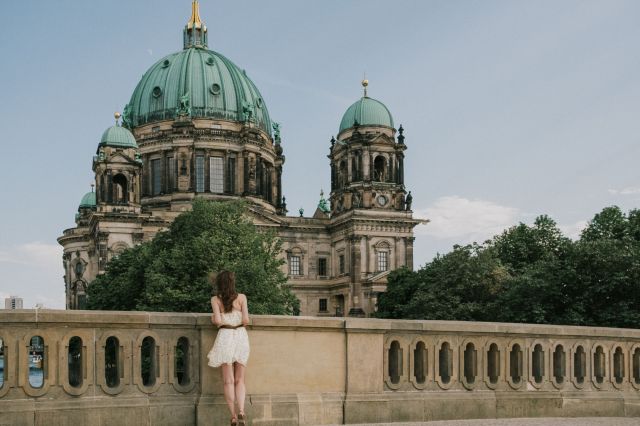
50 Awesome Things to Do in Berlin: Local Recommended!
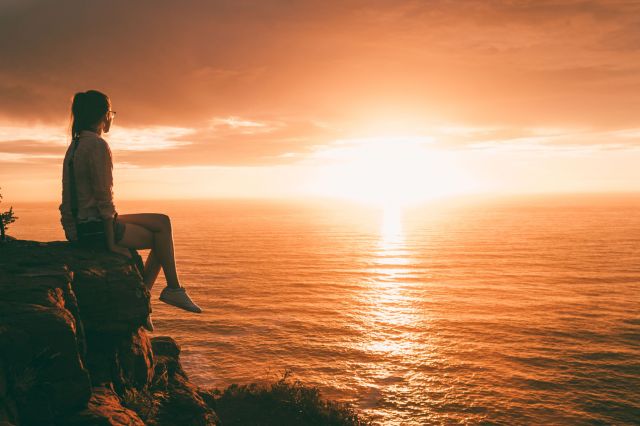
A Super Efficient 2-week South Africa Itinerary
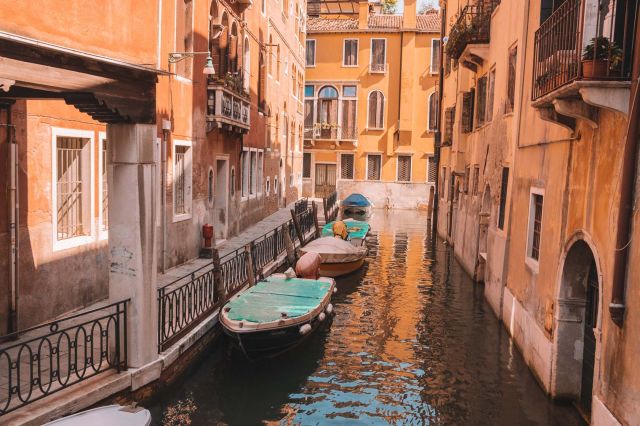
The Best Photography Locations in Venice
Must-see attractions in Sofia
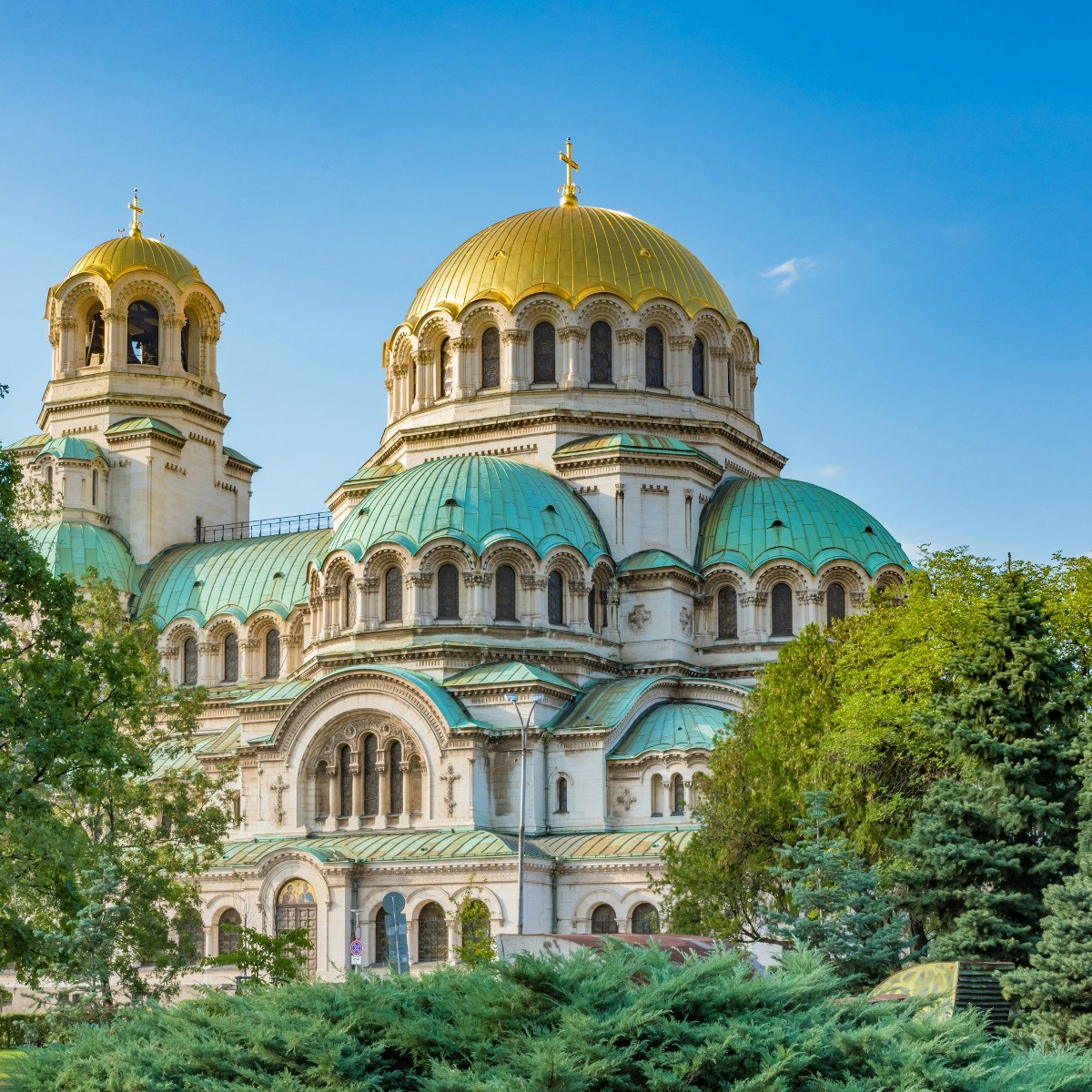
Aleksander Nevski Cathedral
One of the symbols not just of Sofia but of Bulgaria itself, this massive, awe-inspiring church was built between 1882 and 1912 in memory of the 200,000…

Sveta Sofia Church
Sveta Sofia is one of the capital's oldest churches, and gave the city its name. A subterranean museum houses an ancient necropolis, with 56 tombs and the…
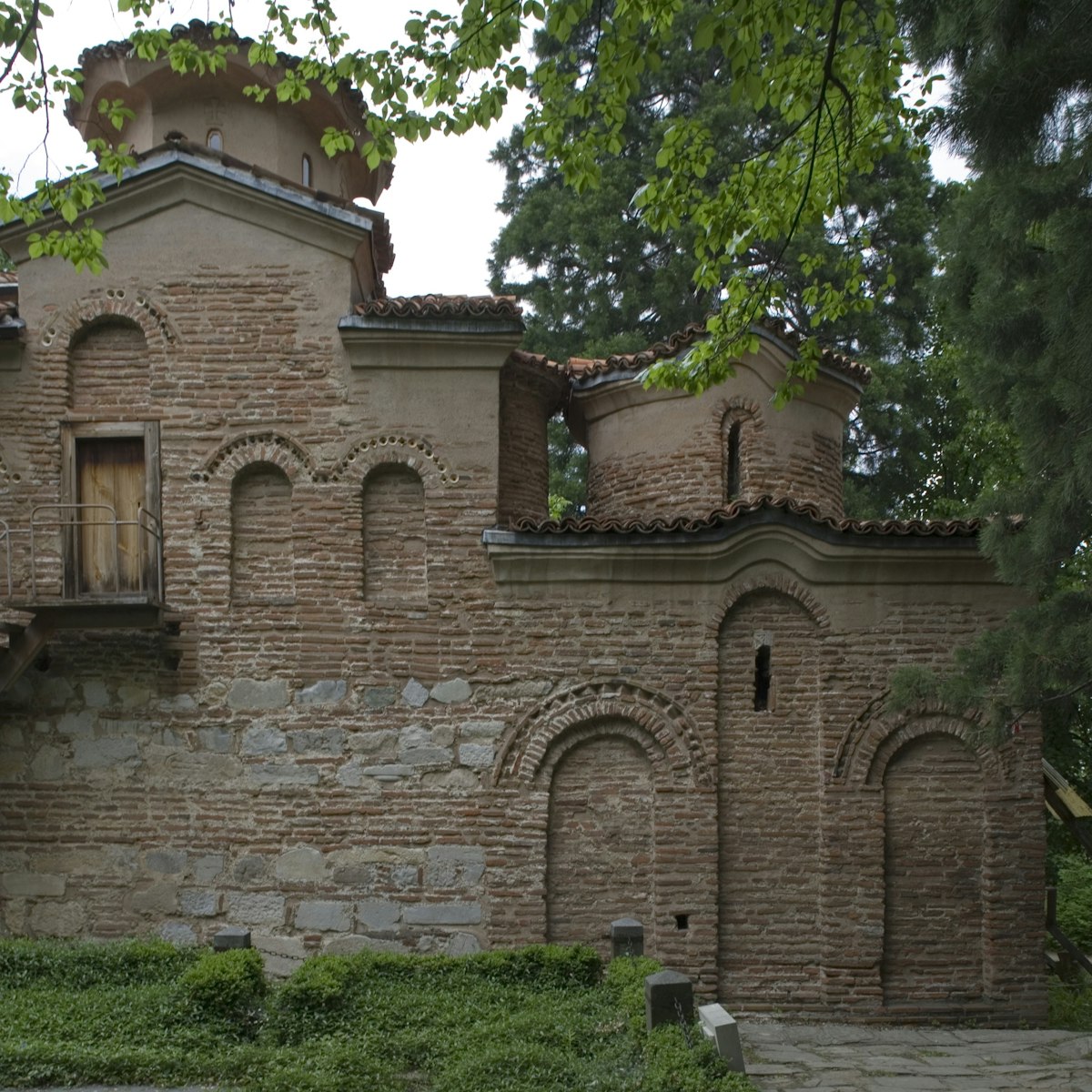
Boyana Church
Tiny 13th-century Boyana Church is included on Unesco’s World Heritage list and its 90 murals are among the very finest examples of Bulgarian medieval…
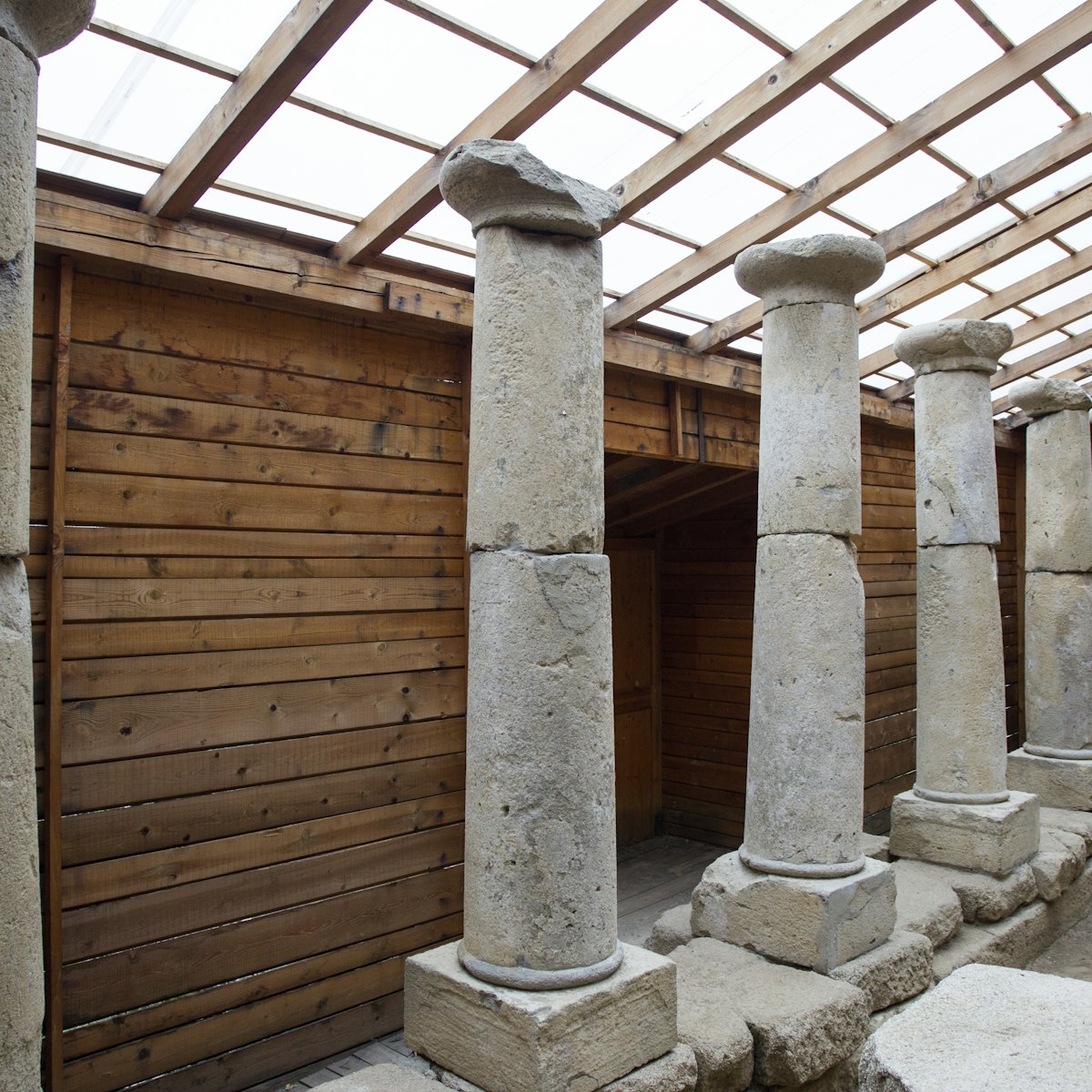
Archaeological Museum
Housed in a former mosque built in 1496, this museum displays a wealth of Thracian, Roman and medieval artefacts. Highlights include a mosaic floor from…
Sveti Georgi Rotunda
Built in the 4th century AD, this tiny red-brick church is Sofia's oldest preserved building. The murals inside were painted between the 10th and 14th…
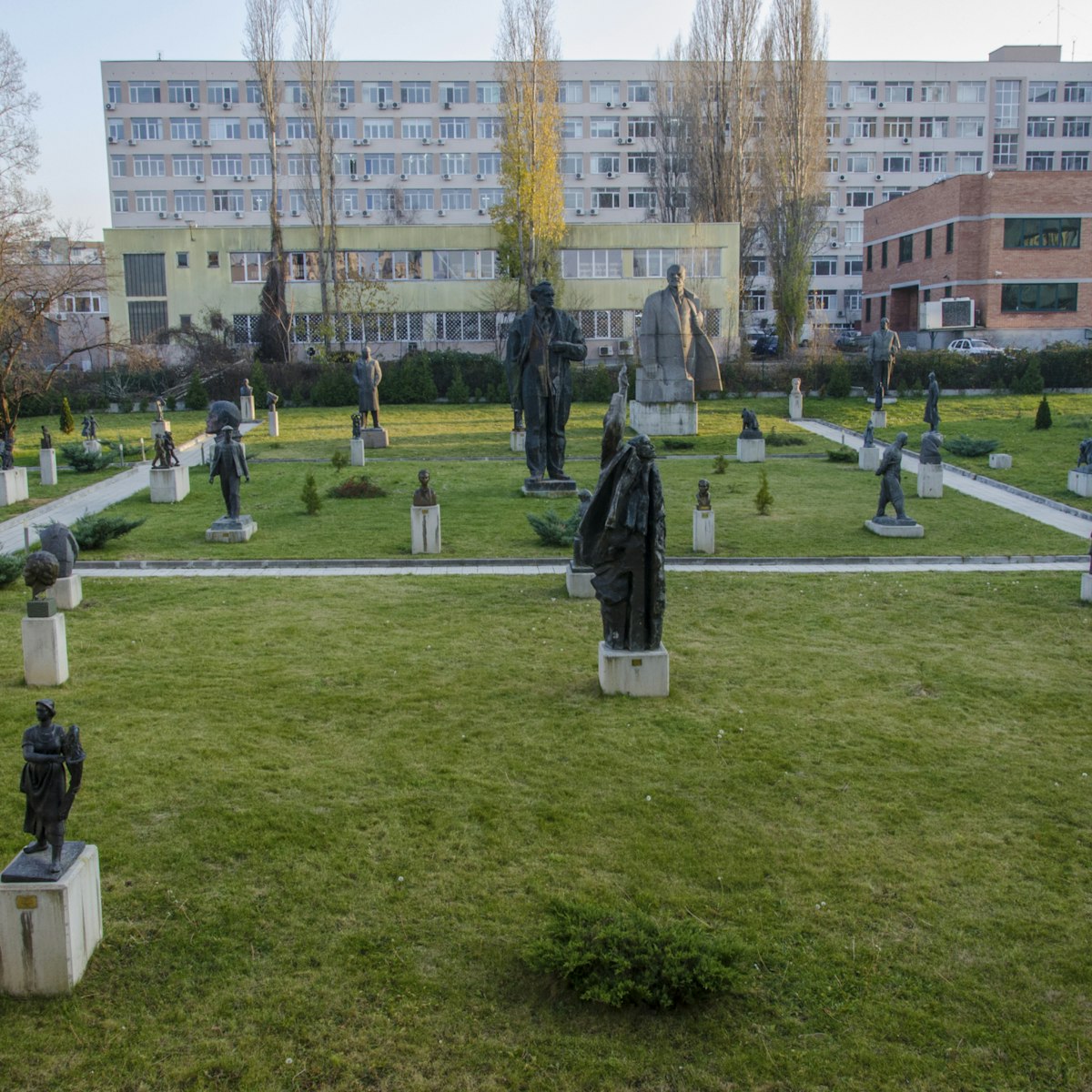
Museum of Socialist Art
If you wondered where all those unwanted statues of Lenin ended up, you'll find some here, along with the red star from atop Sofia's Party House. There's…
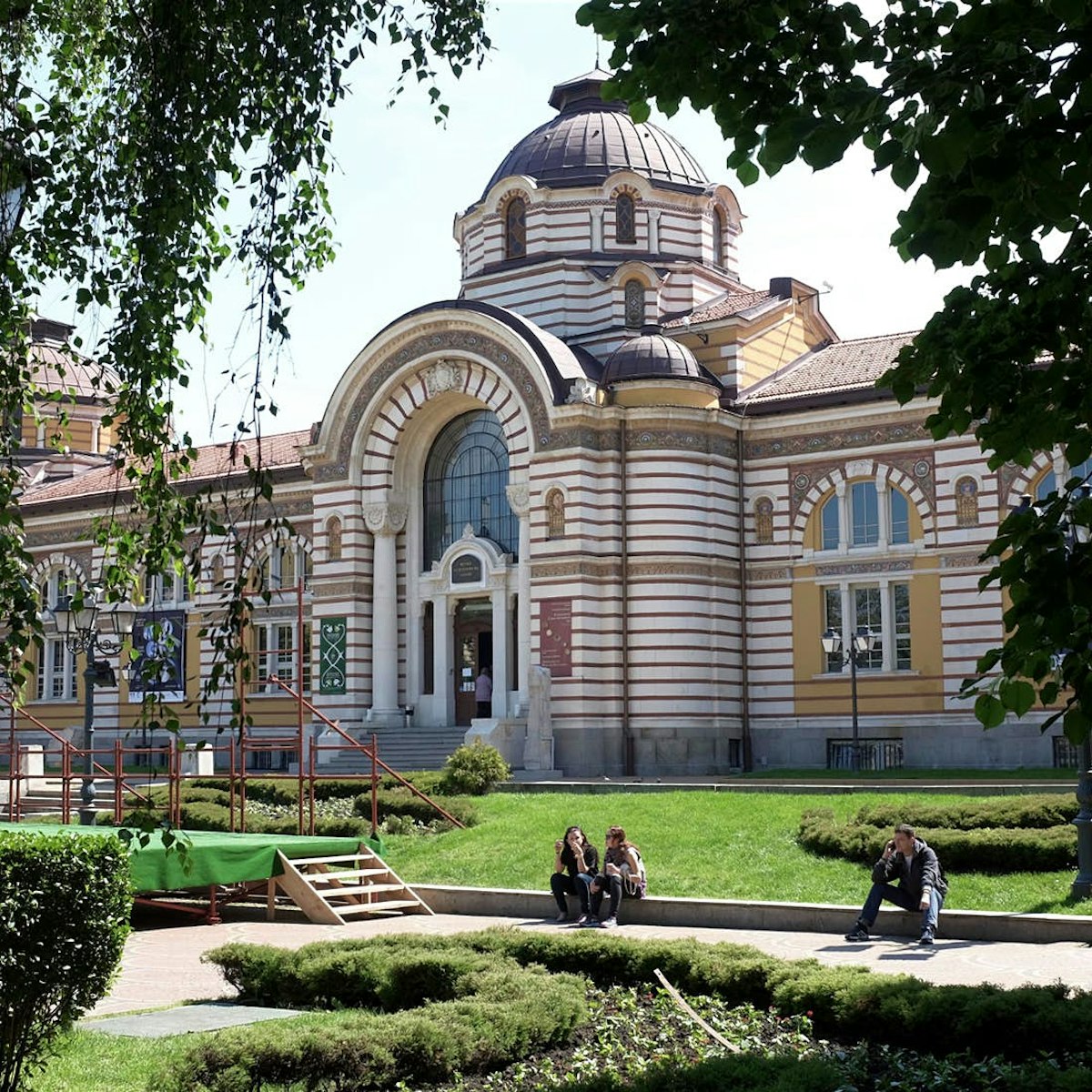
Sofia History Museum
The history of Sofia is presented on two floors of the magnificent former Turkish Mineral Baths, just behind the mosque. Exhibitions are divided…

Ancient Serdica Complex
This remarkable, partly covered excavation site, situated just above the Serdika metro station, displays the remains of the Roman city, Serdica, that once…
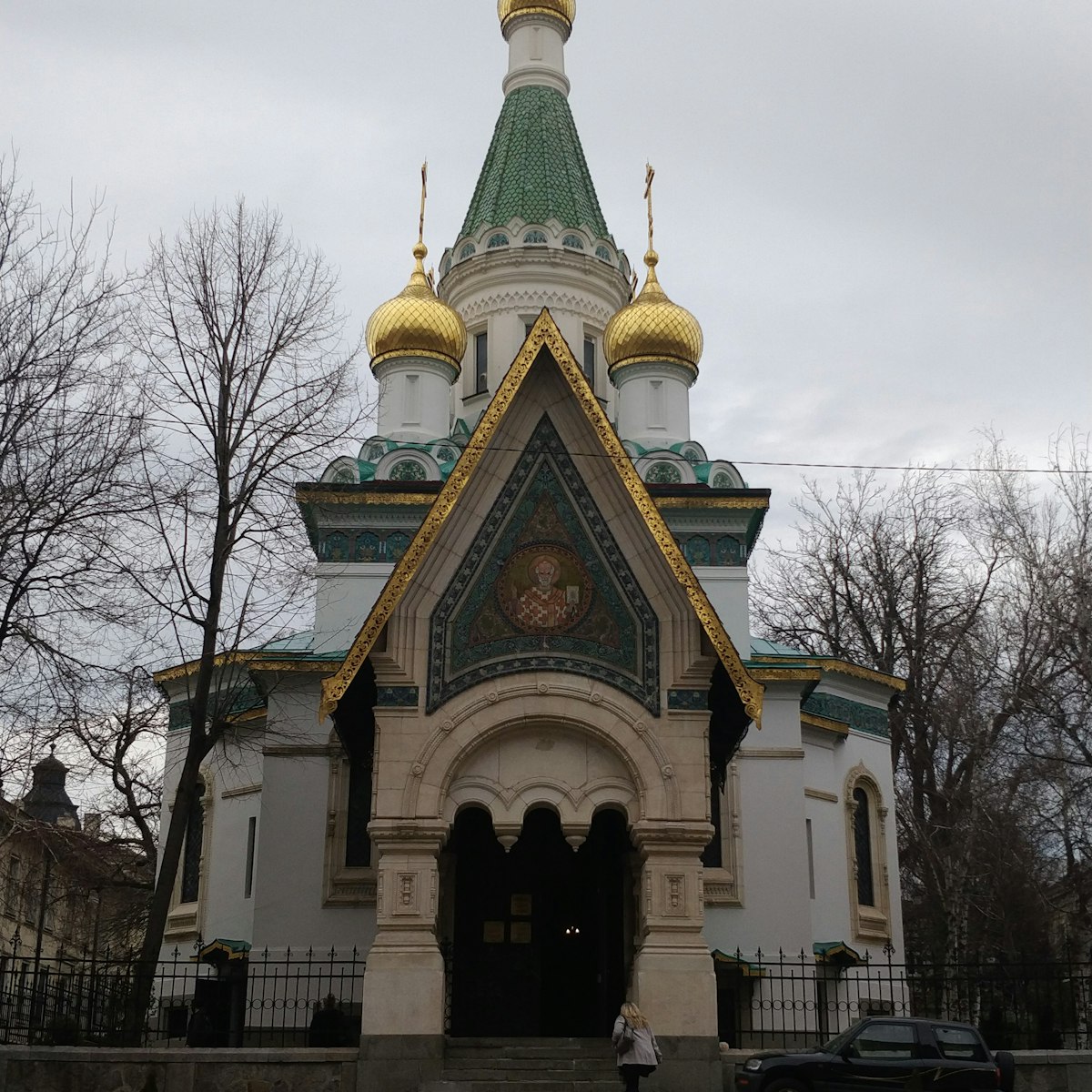
Sveti Nikolai Russian Church
This beautiful church with glittering mosaic exterior and golden domes was completed in 1914 for Sofia’s Russian community, and named in honour of St…
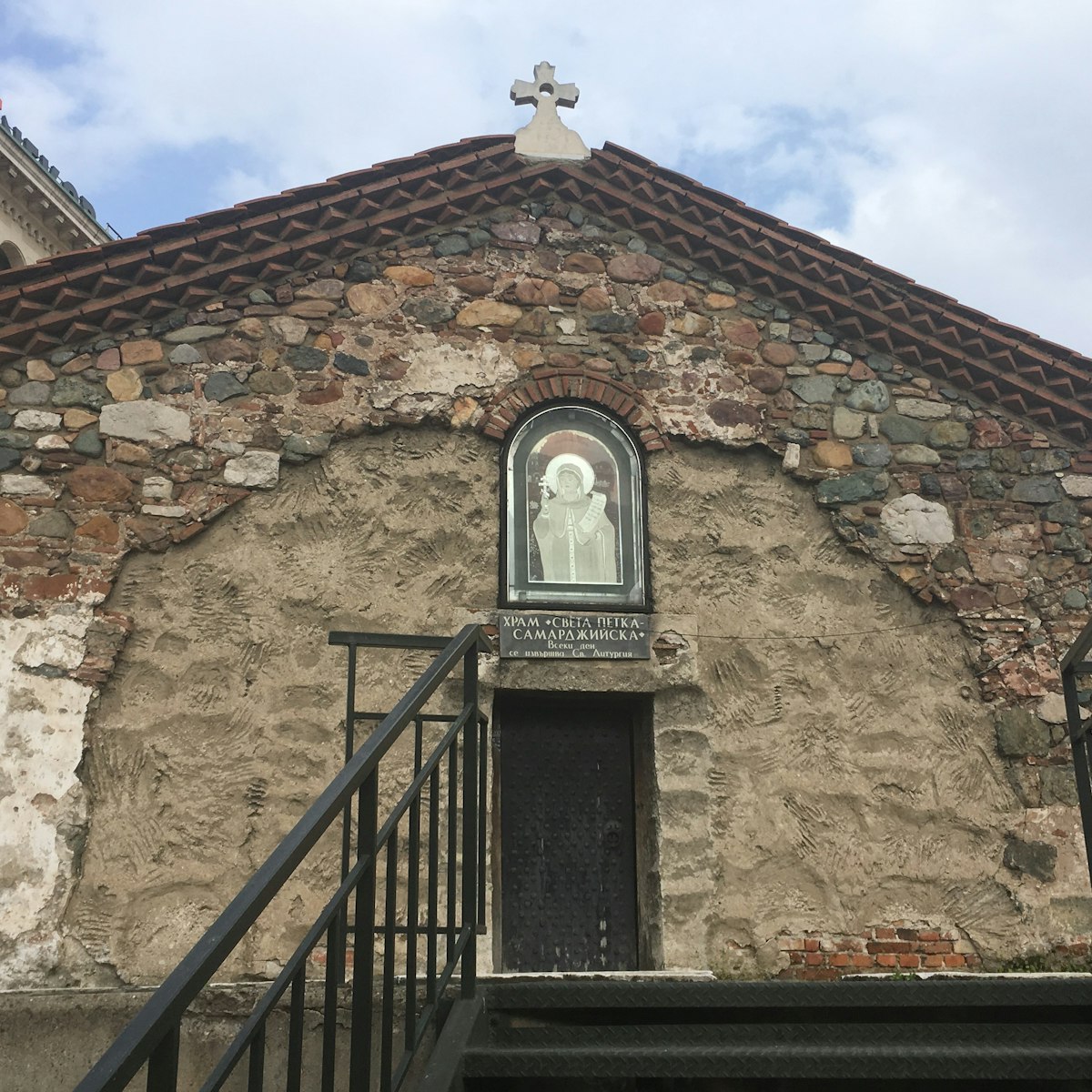
Sveta Petka Samardzhiiska Church
This tiny church, located in the centre of the Serdika metro complex, was built during the early years of Ottoman rule (late 14th century), which explains…
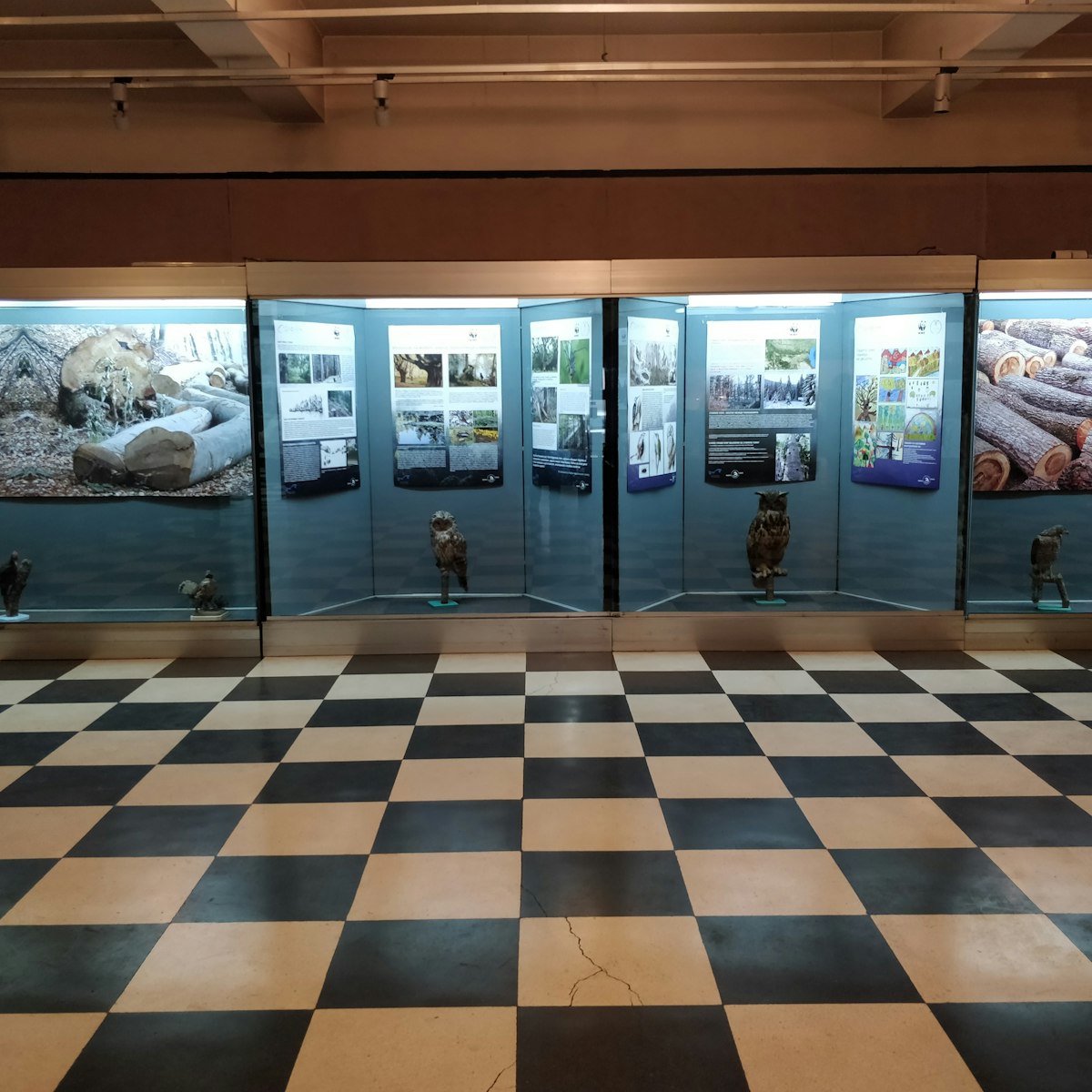
National Museum of Natural History
You can almost sense the ghosts of generations of school parties dutifully trooping through the musty halls of Bulgaria's oldest museum, founded in 1889…
National Museum of History
Housed in the former communist presidential palace, this museum occupies a stunning, if inconvenient, setting; unless a coach party turns up, you may have…
Zlatnite Mostove
Zlatnite Mostove is a spray of large boulders – a 'stone river' – that runs down a slope from an altitude of about 1700m down to 1350m. The name, which…
Sofia Synagogue
Sofia’s Moorish-style synagogue was designed by Austrian architect Friedrich Gruenanger, and was consecrated in 1909. Built to accommodate up to 1170…
Kid-friendly science and technology museum with plenty of interactive exhibits and gadgetry to delight children from 6 to 16 years of age. There are…
Lions, tigers, elephants and bears are among the animals at Sofia's small zoo, situated in a park about 2km south of the city centre. There are also play…
Aleksander Nevski Crypt
Originally built as a final resting place for Bulgarian kings, this crypt now houses Bulgaria's biggest and best collection of icons, stretching back to…
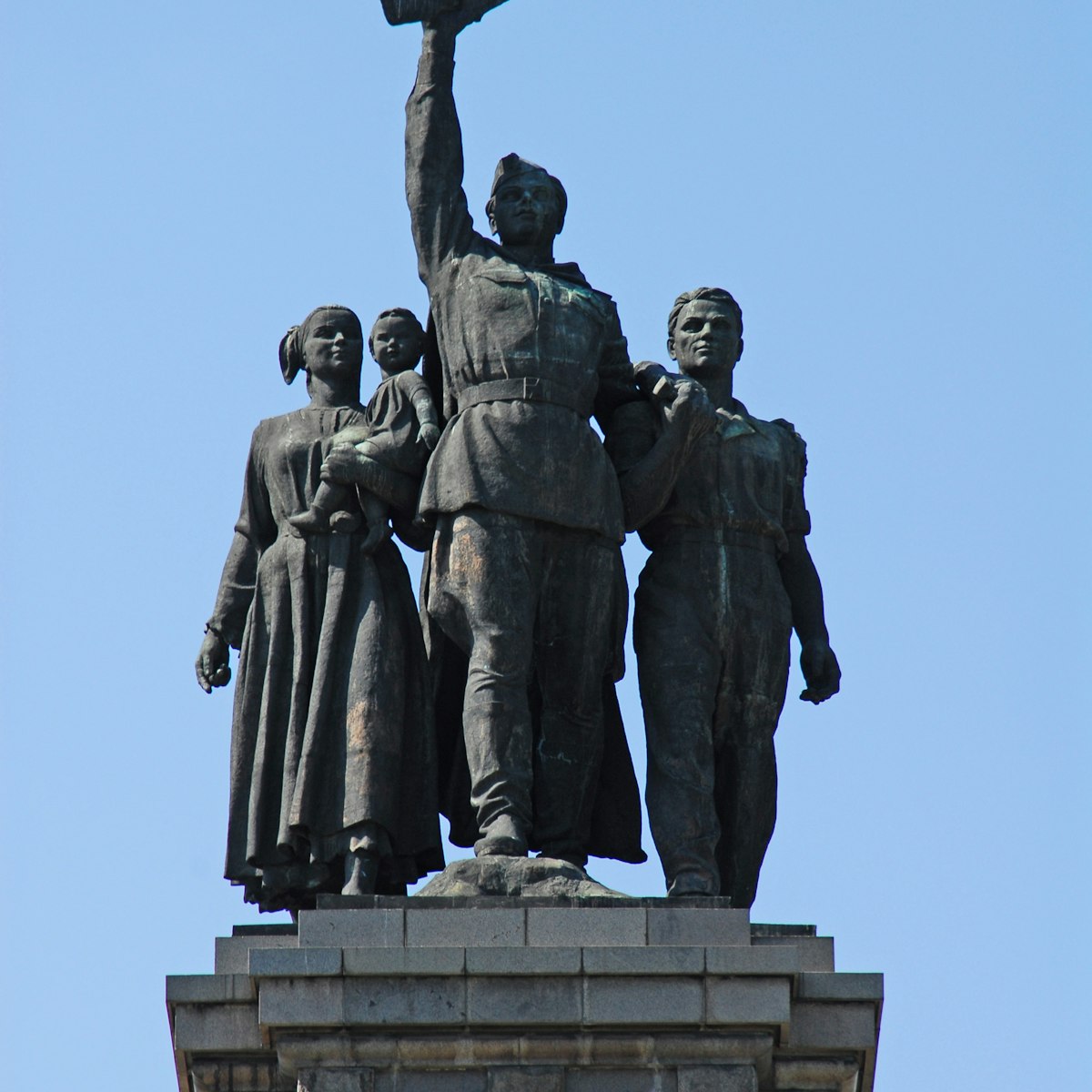
Monument to the Soviet Army
Near the entrance to Borisova Gradina, this gigantic monument was built in 1954 and is a prime example of the forceful socialist realism of the period…
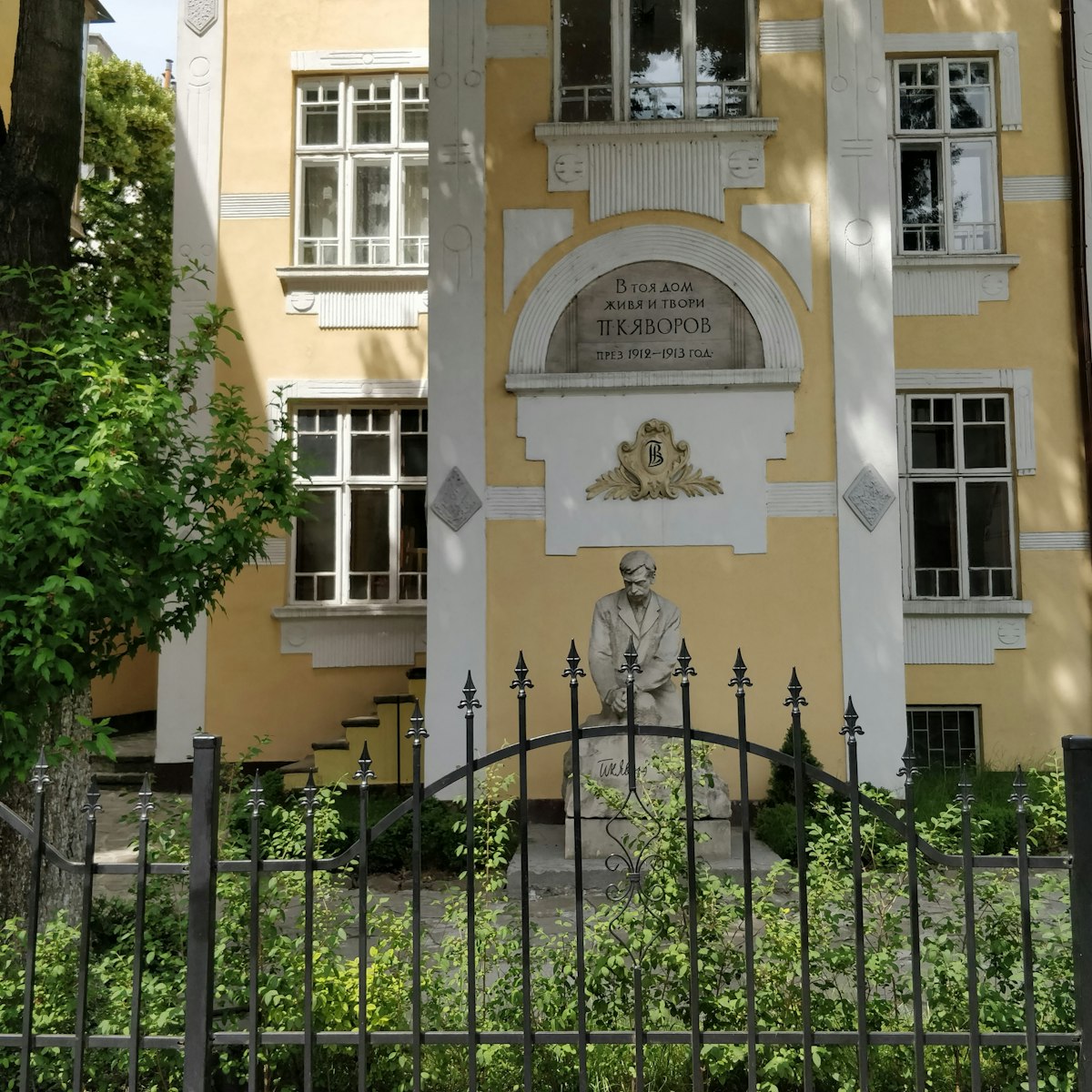
Peyo Yavorov House-Museum
The Romantic poet and revolutionary Peyo Yavorov (1878–1914) briefly lived in a small apartment here; the three rooms have been restored to their original…
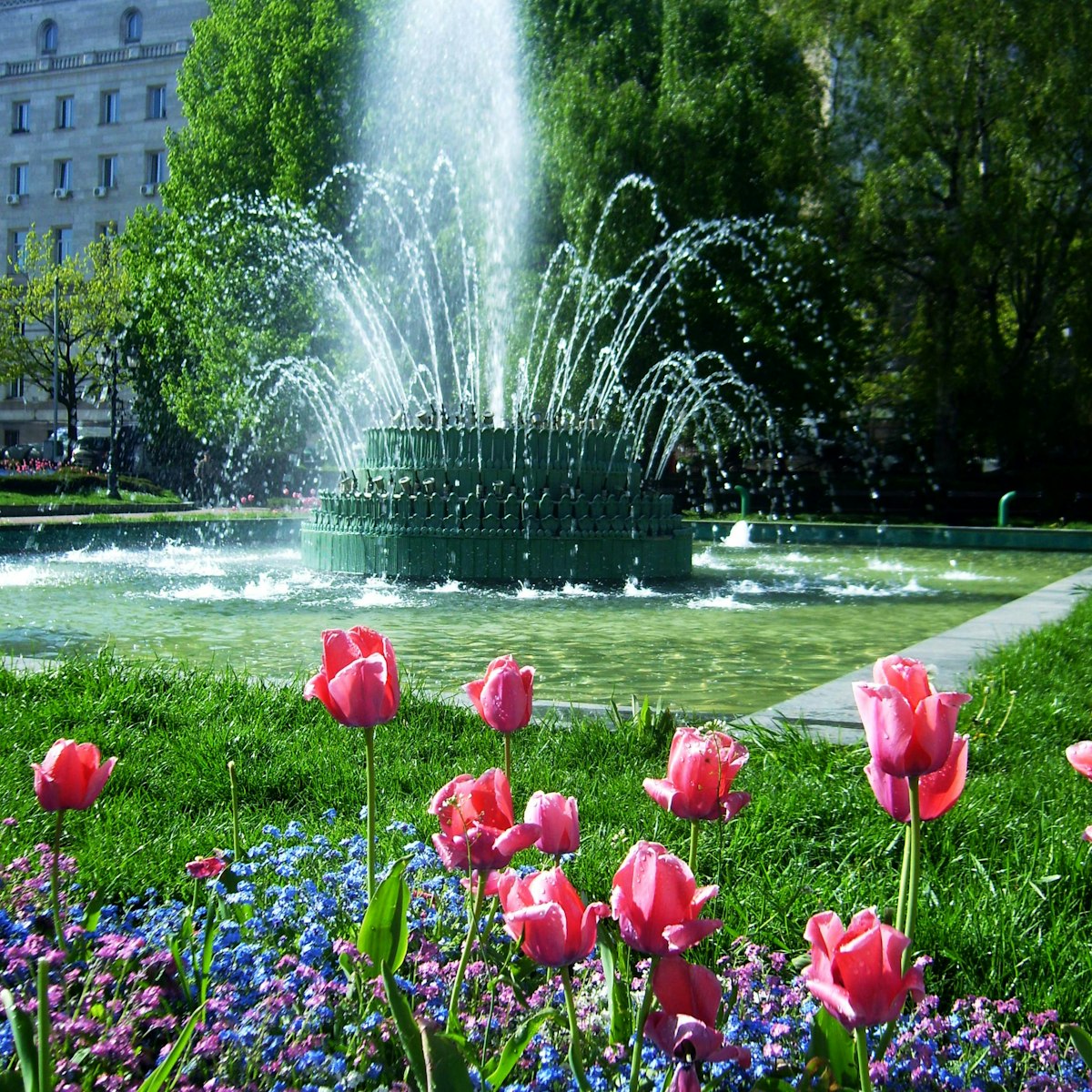
Sofia City Garden
This small, central park, bounded on its northern end by ul Tsar Osvoboditel, is favoured by Sofia's chess-playing pensioners. It's home to the National…

Sveta Nedelya Cathedral
Completed in 1863, this magnificent domed church is one of the city’s major landmarks, and is noted for its rich, Byzantine-style murals. The church was…
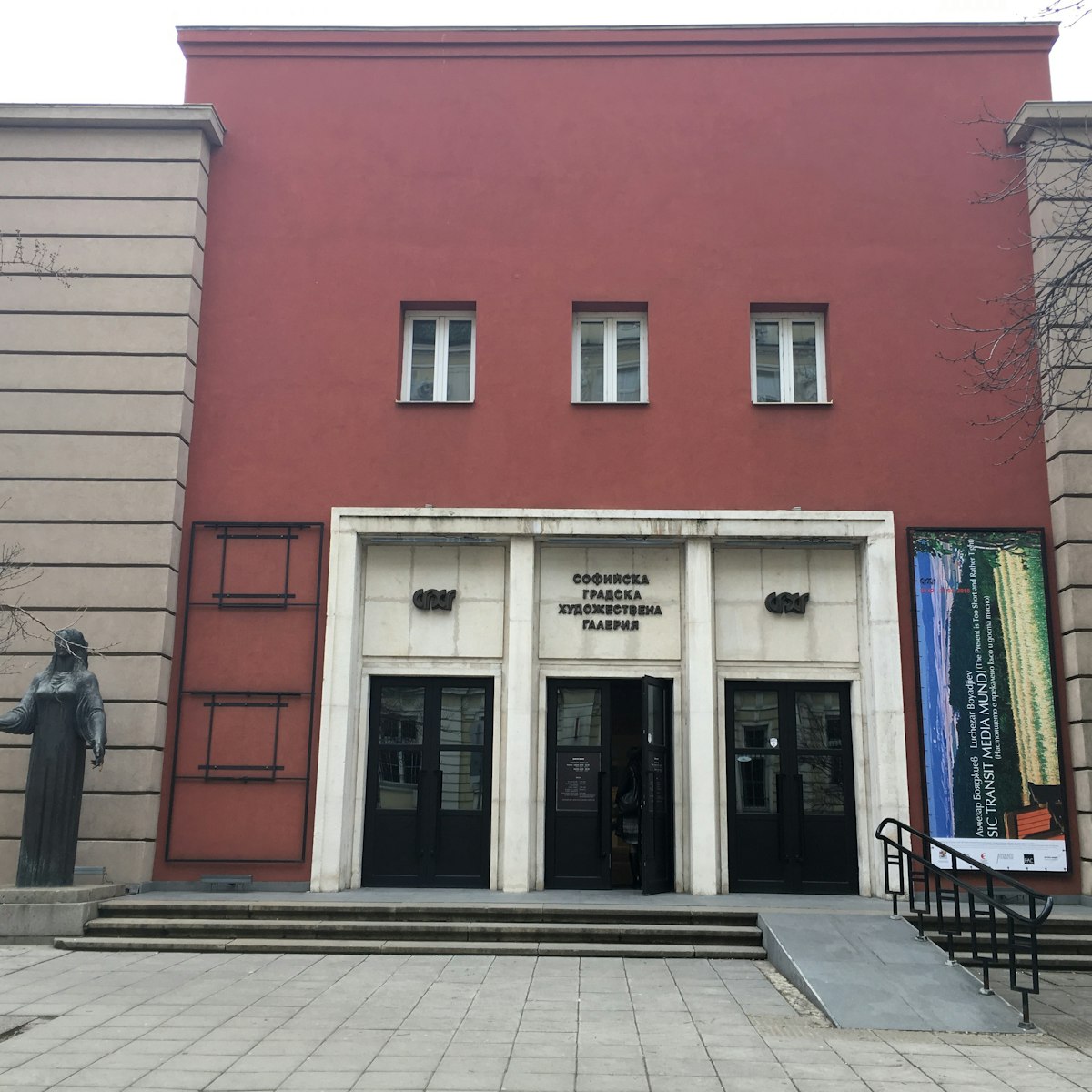
Sofia City Art Gallery
The chunky building at the southern end of the City Garden park is an art gallery staging rotating exhibitions of mostly contemporary Bulgarian and…
Dragalevtsi Monastery
This working monastery is probably the oldest of its kind in Bulgaria. It was built around 1345, but abandoned only 40 years later. The monastery contains…
National Gallery Quadrat 500
This massive visual-arts gallery combines the holdings of the National Gallery and the former Museum of Foreign Art. The result is several hundred…
Ethnographical Museum
Displays on regional costumes, crafts and folklore are spread over two floors of the former royal palace, and many of the rooms are worth a pause…
National Museum of Military History
This out-of-the-way museum tells the story of warfare in Bulgaria, with most space given to the period from the 1876 April Uprising through to WWI…
National Polytechnic Museum
A treasure trove for anyone interested in the history of technology, this low-key museum displays an intriguing (though not always well-labelled)…
Sveti Sedmochislenitsi Church
Set in a leafy garden, this church dedicated to Sts Cyril and Methodius and their five disciples was originally built as a mosque in 1528; it later became…
Sofia University Botanical Garden
Sofia's small botanical garden includes a glasshouse filled with palms and cacti, a rose garden, and various trees and flowers (labelled in Bulgarian and…
Banya Bashi Mosque
Sofia’s only working mosque was built in 1576. It’s certainly an eye-catching edifice, and the red-brick minaret makes a convenient landmark. Visitors are…
Earth & Man Museum
This rather old-fashioned museum is dedicated to geology, with two floors of minerals, crystals, ores and the like. There are some big and impressive…
Mausoleum of Prince Alexander I Battenberg
This unusual building with its lone copper dome is the final resting place of modern Bulgaria's first head of state.
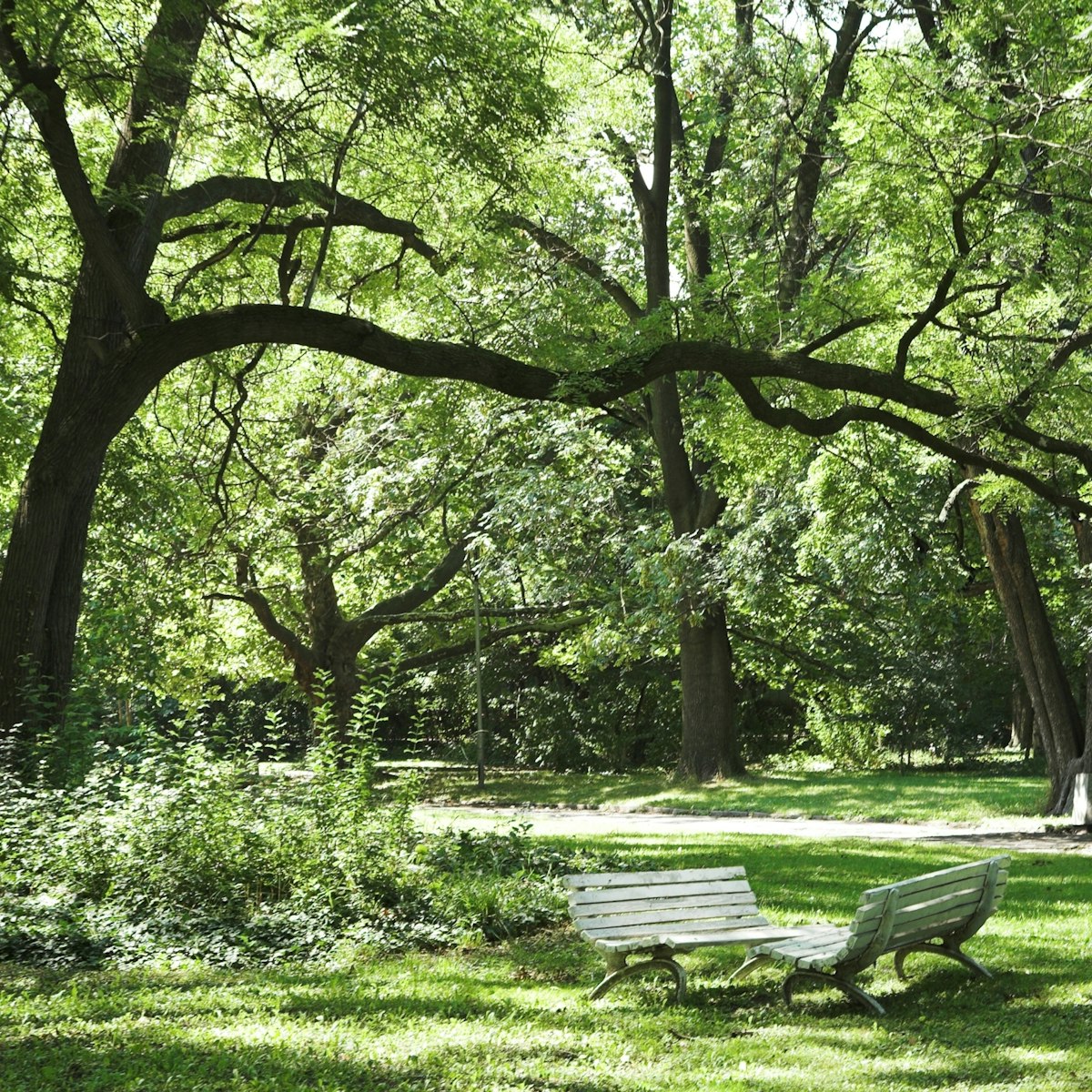
Borisova Gradina
Lying southeast of the city centre, Sofia’s most attractive park is filled with countless statues and flowerbeds and is a relaxing place for a stroll. It…
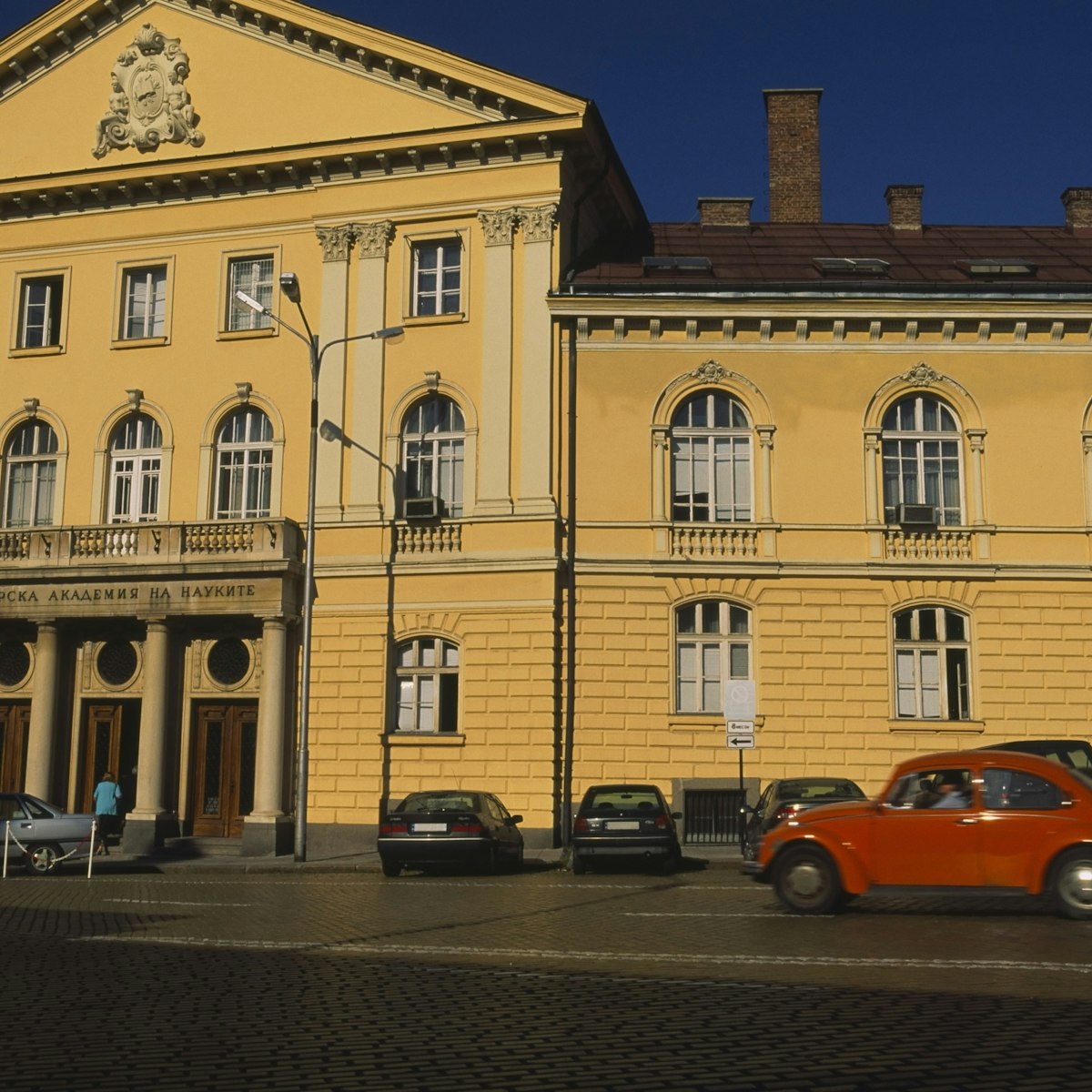
Royal Palace
Originally built as the headquarters of the Ottoman police force, this is where Bulgaria’s national hero Vasil Levski was tried and tortured before his…
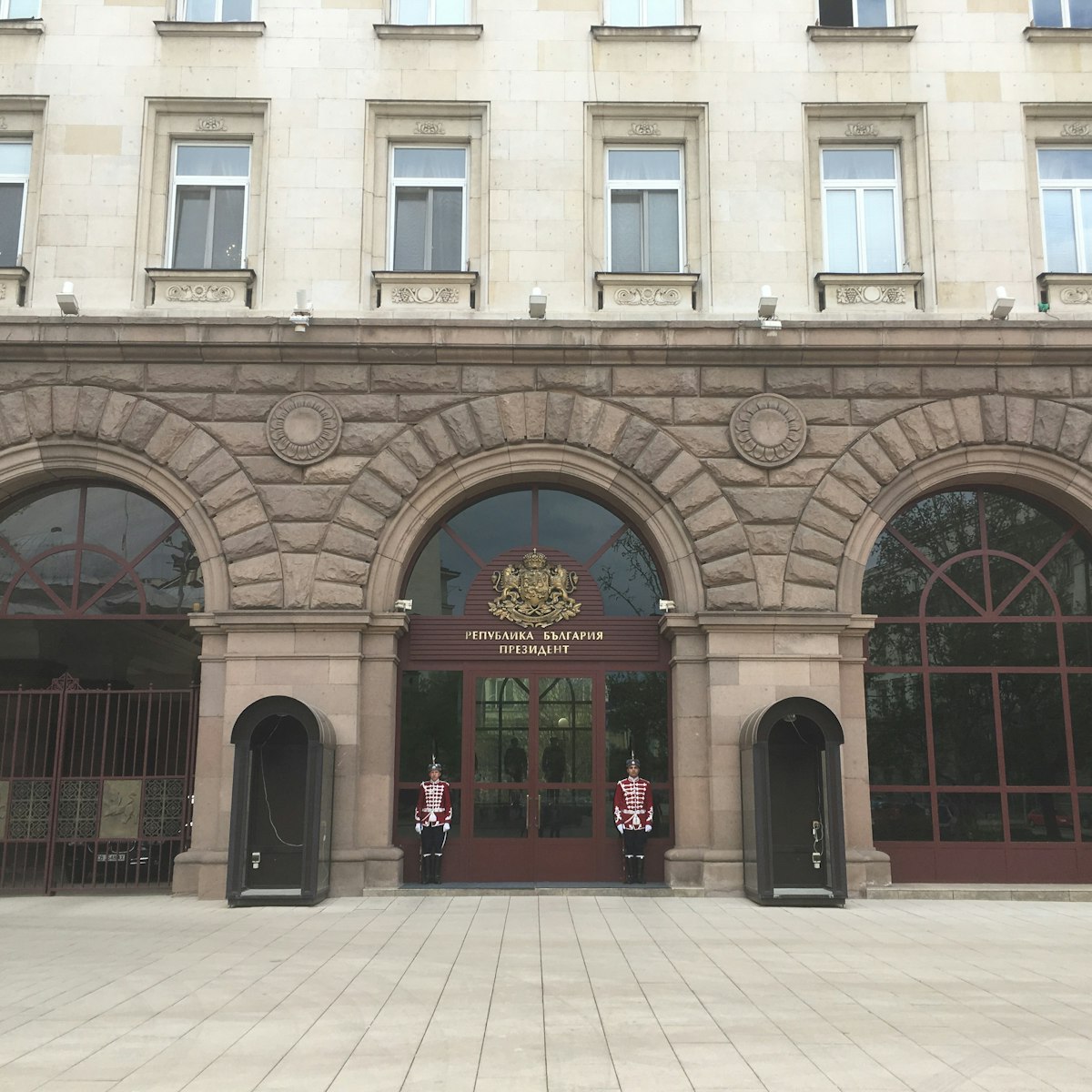
President's Building
The Bulgarian president’s office isn't open to the public, but the changing of the guard ceremony (on the hour) is a spectacle not to be missed; for the…
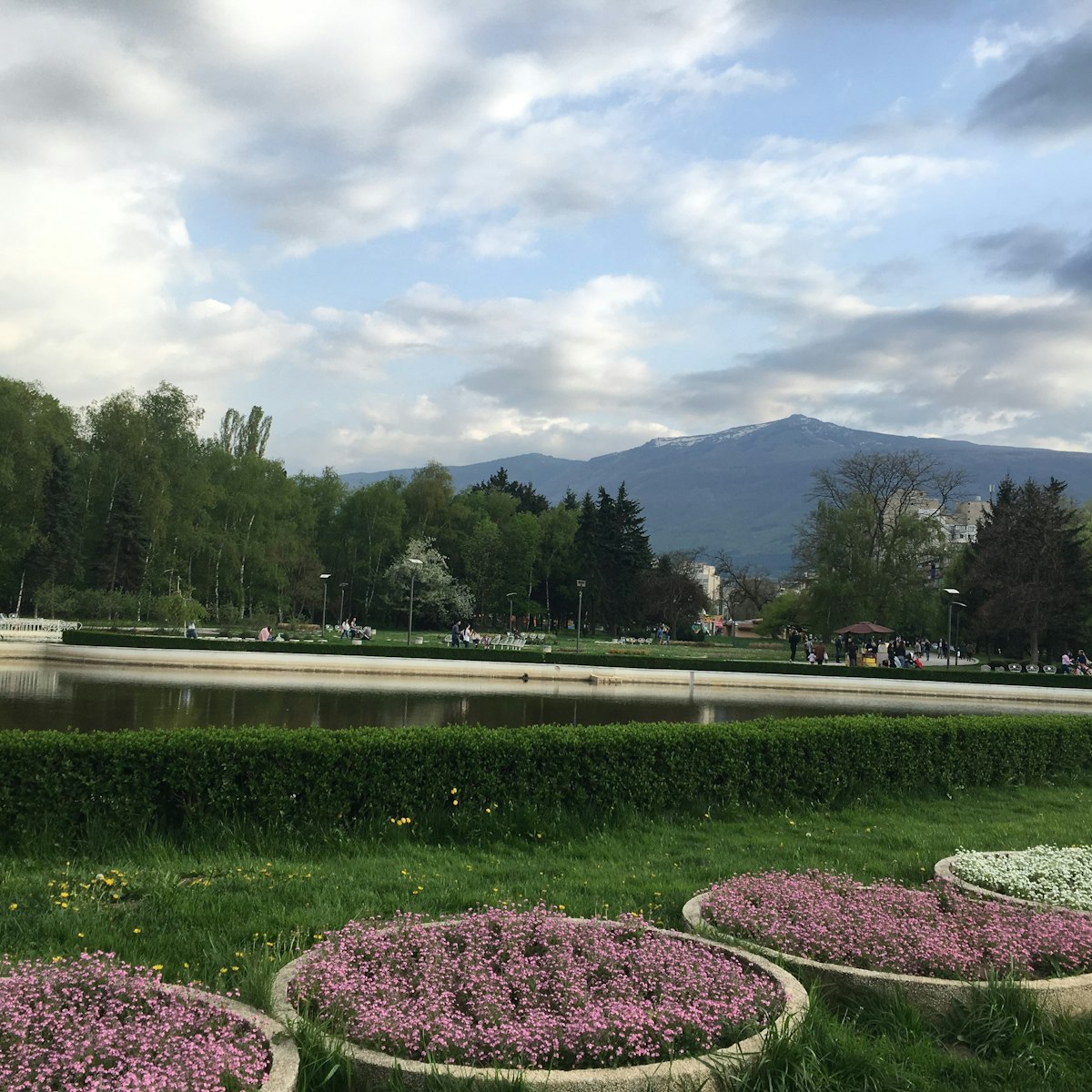
Yuzhen Park
South of the city centre, Yuzhen Park is a vast, wild green sprawl, filled with trees and shady pathways. A sparkling stream bubbles through it, and there…
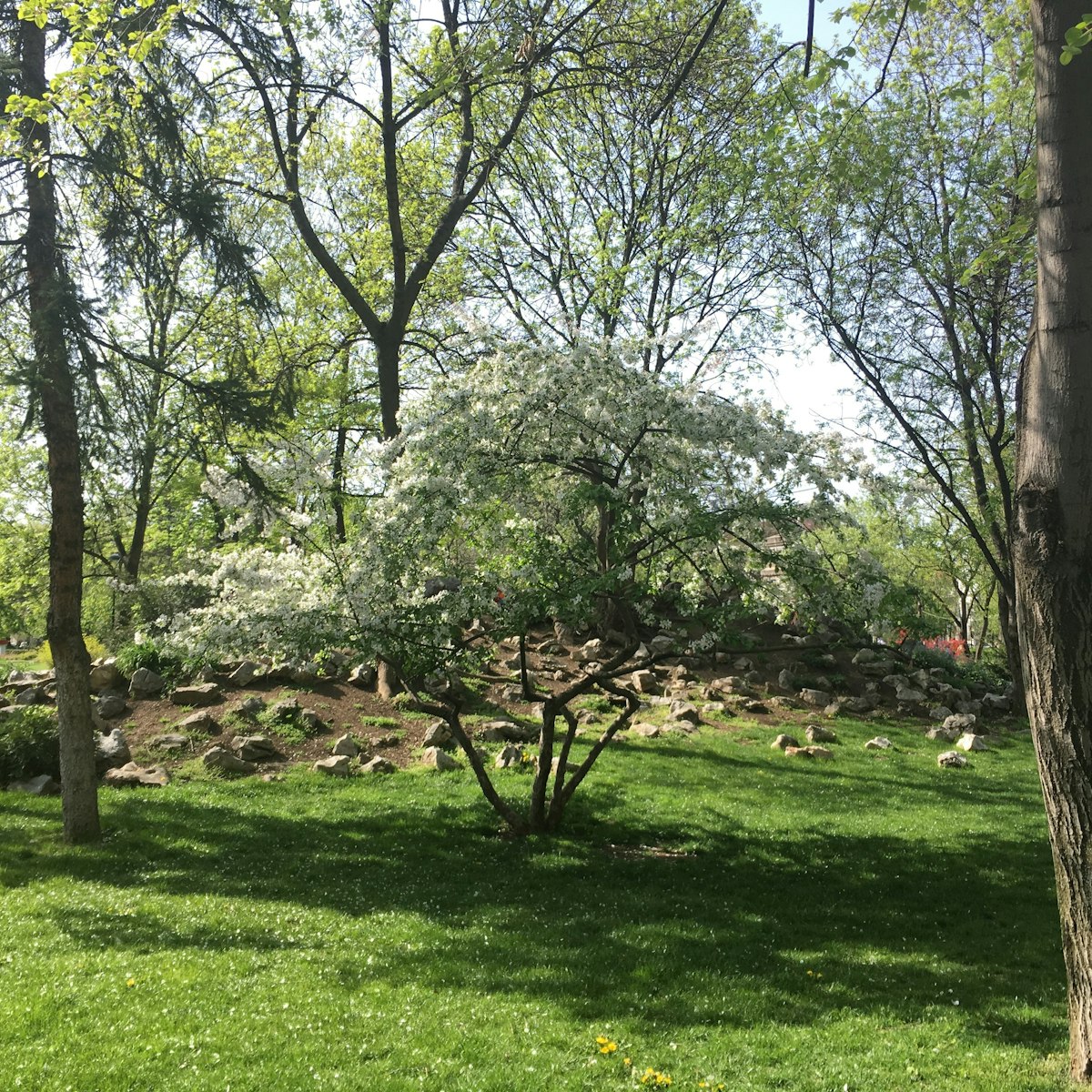
Doctors’ Garden
This neat, secluded park features a big, pyramidal monument dedicated to the medics who died in the Russo-Turkish War (1877–78). Also here is an outdoor…
National Palace of Culture
Sofia's vast concert hall dates from 1981 and houses countless chambers, as well as music clubs and cafes. It watches over an elongated park known as pl…
Ivan Vazov House-Museum
Bulgaria’s best-loved author, Ivan Vazov (1850–1921) lived at this house from 1895 until his death. Vazov wrote Under the Yoke, a classic of Bulgarian…
Ploshtad Bulgaria
Watched over by the polygonal concrete bulk of the National Palace of Culture, this elongated park, with a fountain, ice-cream kiosks and bars, is popular…
More destinations you need to see
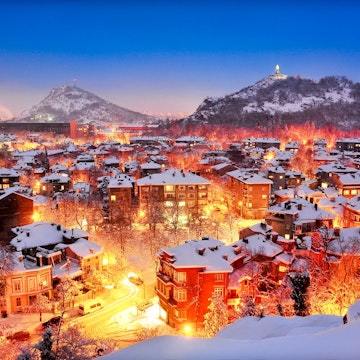
Sofia Travel Guide
Book your individual trip , stress-free with local travel experts
- roughguides.com
- Travel guide
- Local Experts
- Travel Advice
The Archeological Museum
The banya bashi mosque and the mineral baths, borisova gradina, the city art gallery, drinking and nightlife, the largo, party house and council of ministers, mount vitosha, the national gallery for foreign art, the rotunda of st george and the presidency, the russian church and aleksandar nevski cathedral, sveta nedelya church.
Sofia was founded by a Thracian tribe some three thousand years ago, and various Roman ruins attest to its zenith as a regional imperial capital in the fourth century AD. The Bulgars didn’t arrive on the scene until the ninth century, and with the notable exception of the thirteenth-century Boyana Church, their cultural monuments largely disappeared during the Turkish occupation (1396–1878), whose own legacy is visible solely in a couple of stately mosques . The finest architecture postdates Bulgaria’s liberation from the Turks: handsome public buildings and parks, and the magnificent Aleksandar Nevski Cathedral .
Most of Sofia’s sights are centrally located and within easy walking distance of each other. The pedestrianized Bulevard Vitosha forms the heart of the shopping district and leads north to the Church of Sveta Nedelya, from where bul. Tsar Osvoboditel passes the major public buildings, culminating with the grand Aleksandar Nevski Church.
Top image © Shutterstock
Tailor-made travel itineraries for Bulgaria, created by local experts

7 days / from 1944 USD
Relaxing beach fun - the Black Sea Coast in Bulgaria and Romania
The perfect trip for those that are looking for sun, sea and sand while also getting to know the culture and history of both Bulgaria and Romania. Start and end in Bucharest and discover Constanta, Sunny Beach, Nessebar, Burgas and Madara Rider.

8 days / from 1944 USD
The legend of Dracula
Transylvania is known to be the land of Dracula. Are you curious to visit the places mentioned in the book and the castles that hosted the major life events of Vlad the Impaler, the cruel ruler known as Dracula? Explore mysterious places and breathtaking landscapes all over Romania.

15 days / from 3888 USD
World Heritage in Romania and Bulgaria
Discover the most important UNESCO heritage sites in Romania and Bulgaria as well as some lesser-known attractions. From the capital Sofia to Plovdiv and Nessebar, as well as Veliko Tarnovo in Bulgaria to Romania's capital Bucharest to Sibiu, Cluj and Dracula's castle in Brasov.
Tailor-made trips for Bulgaria
There is a wealth of hospitable, characterful and downright quirky hostels in central Sofia, with competition between them ensuring that prices remain reasonably low. If the bunk-bed lifestyle doesn’t appeal, many of Sofia’s hostels do offer self-contained double rooms as well. Hostels fill up quickly in summer, putting pressure on both staff and facilities, so always ring in advance to secure a bed. The business end of the market is well catered for, and a growing number of boutique hotels, mid-priced family-run establishments and guesthouses have added considerable variety to what’s on offer.
A fifteenth-century mosque now holds the Archeological Museum , whose prize exhibit is the magnificent Valchitran Treasure, a Thracian gold cauldron plus cups. Also on show is a collection of Thracian armour, medieval church wall paintings and numerous Roman tombstones.
The Banya Bashi Mosque was built in 1576 by Mimar Sinan, who also designed the great mosque at Edirne in Turkey. The mosque is not officially open to tourists but modestly dressed visitors may visit outside of prayer times. Behind stand Sofia’s mineral baths , housed in a splendid yellow-and-red striped fin-de-siècle building, closed since 1986 and still being restored. Locals gather daily to bottle the hot, sulphurous water that gushes from public taps into stone troughs outside, opposite ul. Exzarh Iosif.
Down bul. Tsar Osvoboditel, past Sofia University, is Borisova Gradina , named after Bulgaria’s interwar monarch, Boris III. The park – the largest in Sofia – has a rich variety of flowers and trees, outdoor bars, two football stadiums and two huge Communist monuments.
The City Art Gallery in the City Garden, immediately to the south of pl. Aleksandar Batenberg, stages regular exhibitions of contemporary Bulgarian art.
Drinking in Sofia is a round-the-clock activity, with numerous cafés and kiosks doling out coffee, juice and alcohol during the day, and bars and pubs pulling in punters by night. For evening entertainment, there’s an ever-growing number of clubs, most playing a mix of pop, retro, rock or the ubiquitous local “folk pop”( chalga ). Jazz and Latino music are also popular. Entrance fees for clubs range from nothing to 20Lv depending on the venue, expect to pay more if a major DJ is manning the decks. A valid ID is compulsory.
While none of Sofia’s restaurants could be classed as truly outstanding, you’ll at least find a greater choice here than anywhere else in the country. The cheapest places to grab snacks, a beer or a coffee are the many cafés and kiosks around bul. Vitosha or in the city’s public gardens. International coffeehouse chains such as Starbucks and Costa have opened a number of cafés in recent years and there are plenty of pricier restaurants offering a range of international cuisine.
Laid out in the 1950s to demonstrate the power of Communist rule, the Largo is an elongated plaza flanked on three sides by severe monumental edifices built in Soviet Classicist style. They include the towering monolith of the former Party House , originally the home of the Communist hierarchy, and now serving as government offices. The plaza extends westwards to the Sofia Monument , the city’s symbol which represents the eponymous Goddess of Wisdom. On the northern side of the Largo is the Council of Ministers , Bulgaria’s cabinet offices.
A wooded granite mass 20km long and 16km wide, Mount Vitosha , 8km south of the city, is where Sofians go for picnics and skiing. The ascent of its highest peak, the 2290m Cherni Vrah , has become a traditional test of stamina. Getting here on public transport is straightforward, although there are fewer buses on weekdays than at weekends. Take tram #5 from behind the Law Courts to Ovcha Kupel bus station, then change to bus #61, which climbs through the forests towards Zlatni Mostove , a beauty spot on the western shoulder of Mount Vitosha beside the so-called Stone River . Beneath the large boulders running down the mountainside is a rivulet which once attracted gold-panners. Trails lead up beside the stream towards the mountain’s upper reaches: Cherni Vrah is about two to three hours’ walk from here.
An imposing nineteenth century building houses the National Gallery for Foreign Art , which devotes a lot of space to Indian wood-carvings and second-division French and Russian artists, though there are a few minor works by the likes of Rodin, Chagall and Kandinsky. Heading west past Alexander Nevski Cathedral, you’ll pass two recumbent lions flanking the Tomb of the Unknown Soldier, set beside the wall of the plain, brown-brick Church of Sveta Sofia which gave the city its name in the fourteenth century.
Sofia’s oldest church is the fourth-century Rotunda of St George , built upon the city’s oldest Roman foundations and housing frescoes from the eighth century onwards. Surrounding the church is the Presidency , guarded by soldiers in colourful nineteenth-century garb (Changing of the Guard hourly).
Built on the site of a mosque in the early twentieth century, the Russian Church is a stunning golden-domed building with an emerald spire and an exuberant mosaic-tiled exterior, which conceals a dark, candle-scented interior. The nearby Aleksandar Nevski Cathedral is one of the finest pieces of architecture in the Balkans. Financed by public subscription and built between 1882 and 1924 to honour the 200,000 Russian casualties of the 1877–78 War of Liberation, it’s a magnificent structure, bulging with domes and semi-domes and glittering with gold leaf. Within the gloomy interior, a beardless Christ sits enthroned above the altar, and numerous scenes from his life, painted in a humanistic style, adorn the walls. The crypt, entered from outside, contains a superb collection of icons from all over the country.
The city’s main shopping street, bul. Vitosha, is the place where you are most likely to come across familiar high-street shops and brands. Luxury goods, clothes and accessories are also on display at Tzum, which served as the city’s main department store during the Communist period, and still radiates a modicum of Stalin-era grandeur. The City Center and Sofia malls are characterless yet immensely popular malls stuffed with clothes shops, eateries and bars. For souvenirs there’s a long line of open-air stalls just in front of the Aleksandar Nevski Memorial Church selling paintings, reproduction icons, Russian-style fur hats, antiques, lace and embroidery.
At the heart of Sofia is ploshtad Sveta Nedelya , a pedestrianized square dominated by the distinctive Sveta Nedelya Church , whose broad dome dominates the vast interior chamber. Colourful modern frescoes adorn every square inch of its walls.
Discover more places in Bulgaria

- Travel Guide Morocco
- Travel Guide Namibia
- Travel Guide South Africa
- Travel Guide China
- Travel Guide India
- Travel Guide Indonesia
- Travel Guide Japan
- Travel Guide Laos
- Travel Guide Malaysia
- Travel Guide Myanmar (Burma)
- Travel Guide Nepal
- Travel Guide Philippines
- Travel Guide Singapore
- Travel Guide South Korea
- Travel Guide Sri Lanka
- Travel Guide Taiwan
- Travel Guide Thailand
- Travel Guide Australia
- Travel Guide Fiji
- Travel Guide New Zealand
- Travel Guide Belize
- Costa Rica Travel Guide
- Travel Guide Cuba
- Travel Guide Guatemala
- Travel Guide Honduras
- Travel Guide Jamaica
- Travel Guide Nicaragua
- Travel Guide Panama
- Travel Guide Puerto Rico
- Travel Guide Trinidad and Tobago
- Travel Guide Albania
- Travel Guide Austria
- Travel Guide Belgium
- Travel Guide Bosnia-Herzegovina
- Travel Guide Bulgaria
- Travel Guide Cyprus
- Travel Guide Czechia (Czech Republic)
- Travel Guide Denmark
- Travel Guide England
- Travel Guide Estonia
- Travel Guide Finland
- Travel Guide France
- Travel Guide Germany
- Travel Guide Greece
- Travel Guide Hungary
- Iceland Travel Guide
The Rough Guides to Bulgaria and related travel guides
In-depth, easy-to-use travel guides filled with expert advice.

Find even more inspiration here

Planning your own trip? Prepare for your trip
Use Rough Guides' trusted partners for great rates
written by Rough Guides Editors
updated 26.04.2021
Ready to travel and discover Bulgaria?
Get support from our local experts for stress-free planning & worry-free travels.
- Where to stay
- Travel advice
Nomadic Matt's Travel Site
Travel Better, Cheaper, Longer
Sofia Travel Guide
Last Updated: August 30, 2023

Sofia is the stylish capital city of Bulgaria , nestled beneath the towering peak of Mount Vitosha. While the mountain is the first thing you’ll notice when you arrive, Sofia has so much more to offer than just the view. The city boasts a rich history, friendly people, cheap drinks, and delicious food.
In short, it’s a budget traveler’s paradise.
Admittedly, when I first arrived, I expected a dreary ex-communist city full of blocky architecture and a lack of personality.
Fortunately, I was way off.
Instead, I found a multicultural, fast-growing, and modernizing European hub popular with the backpacker crowd. In fact, Sofia impressed me so much that I ended up staying a few extra days! It’s a perfect budget-travel destination that sees a fraction of the tourists you’ll find in Western Europe.
This travel guide to Sofia can help you plan your trip, save money, and make the most out of your time in this incredible destination.
Table of Contents
- Things to See and Do
- Typical Costs
- Suggested Budget
- Money-Saving Tips
- Where to Stay
- How to Get Around
- How to Stay Safe
- Best Places to Book Your Trip
- Related Blogs on Sofia
Top 5 Things to See and Do in Sofia
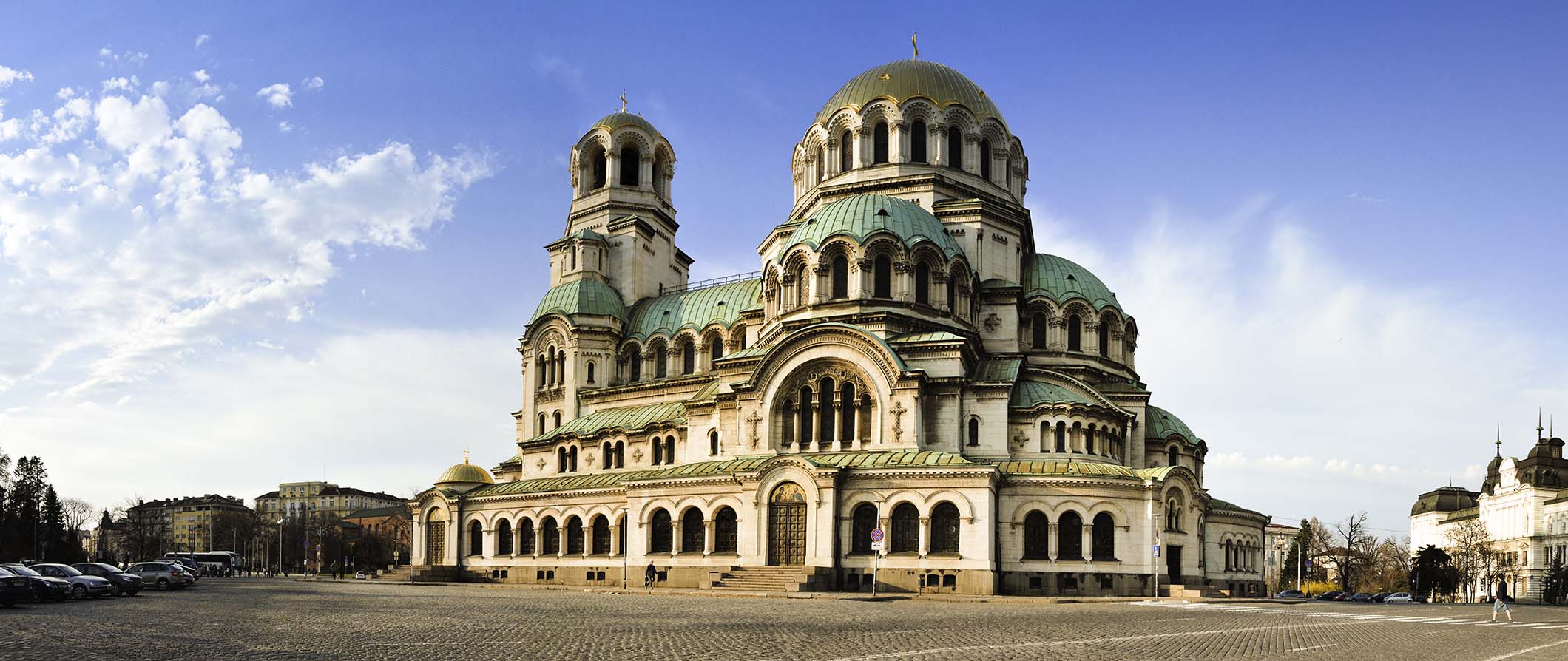
1. Visit the Alexander Nevsky Cathedral
Constructed in the early 20th century, this is one of the world’s largest Eastern Orthodox cathedrals (it’s even made the list of the 50 largest Christian churches in the world). The gorgeous cathedral can hold up to 5,000 people at a time. The cathedral was named after the Russian prince, Saint Alexander Nevsky and was intended to honor the Russian soldiers who lost their lives when fighting in the Russo-Ottoman war during the late 1800s as the war resulted in Bulgaria’s independence from the Ottoman empire. Visitors can explore the stunning interior and the museum of Bulgarian religious icons in the cathedral crypt, famed to hold the most extensive collection of Orthodox religious icons in Europe. Topped with the characteristic gilded domes of the Neo-Byzantine style and with a beautiful Italian marble interior, it’s my absolute must-see here. The bell tower holds 12 bells that weigh 23 tons!
2. See Sveti Georgi Rotunda
Dating to the fourth century, this tiny circular Roman building is the oldest preserved structure in Sofia and sits undisturbed amongst other Roman ruins. The red brick building was built in the 4th century on a site that was believed to be an even older pagan temple. Originally a bathhouse, the interior is painted with magnificent murals that date between the 6th and 14th centuries. In total there are five layers of ornate frescos that were painted over when the church was converted into a mosque during Ottoman rule. They were only uncovered during the church’s restoration in the 20th century. The rotunda and the ruins are surrounded by modern government buildings and preserved in a large courtyard that remains open to the public. The small church holds weekday services so just dress respectfully.
3. Hike Vitosha mountain
Head for a hike to reach the summit and you’ll be treated to incredible panoramic views over Sofia and the surrounding area. The highest summit is Cherni Vrah at 2,290 meters (7,513 feet). Most trails just take a couple of hours. It’s surprisingly easy to reach Vitosha’s trails, all you have to do is take a bus to the Simeonovo ski lift. Once you arrive, you’ll feel worlds away from the hustle and bustle of the city, surrounded by craggy rocks and ancient pine trees. Vitosha mountain is part of Vitosha National Park, which is one of the oldest in the Balkans and includes a massive cave you can explore.
4. Visit the National Gallery Quadrat 500
This enormous gallery contains artwork from both the National Gallery and the former Museum of Foreign Art. Having opened in 2015, Quadrat 500 is the most recent admission to the National Gallery and contains 1,700 pieces of art. Wander through 28 halls and four levels filled with art from around the world and you’ll find works from beloved Bulgarian 19th-20th century artists here (including Georgi Mashev and Vladimir Dimitrov) alongside African tribal masks and sketches from Renoir and Matisse. Admission is 10 BGN. You can receive discounted admission on Thursdays for 2 BGN. The museum also hosts a variety of lectures in both Bulgarian and English throughout the year.
5. Day trip to Rila Monastery
This is the most important Eastern Orthodox monastery in the country, having been a spiritual space for over 1,000 years. Rila was founded in the 10th century by Saint John of Rila. Then a simple hermit, the site of the monastery was believed to be the place where he lived and died. After his death, they were converted into a monastery that was a center of spiritual and social activity during the medieval period. The original building was destroyed in a fire in the early 19th century and later rebuilt in the Bulgarian Renaissance style in the mid-1800s. You’ll find stunning religious art and colorful architecture, including golden domes and striped archways. Entrance to the monastery is free.
Other Things to See and Do in Sofia
1. take a free walking tour.
The first thing I do in a new city is take a free walking tour. It’s the best way to see the main sights on a budget and connect with a local guide who can answer all your questions. Free Sofia tour runs regular free walking tours that cover all the main highlights. Just be sure to tip your guide at the end!
2. See the Presidency and the Guard Ceremony
The Bulgarian president’s office lies within the eastern end of the same building that houses the Sheraton Hotel. The office isn’t open for public viewing, but the changing of the guard occurs every hour. The stomping march of the uniform-clad men can be heard all around the area. It doesn’t take long but it’s worth stopping by to see.
3. See what’s on at the National Palace of Culture
Usually referred to as the NDK, this building has 15 separate halls, making it the largest cultural complex in the country. During the summer, there is a regular schedule of various events and a diverse range of shows to check out, including concerts, dance performances, and theater. Check out their website to see what’s on during your visit.
4. Attend an event at the Red House
Home to political debates, poetry readings, and dramatic performances, the Red House is an independent cultural center that’s not as mainstream as the NDK. The building itself is a mansion from the early 20th century that once belonged to Bulgarian sculptor Andrey Nikolov. Events are usually free, and often in English. Check their website to see what’s on during your visit.
5. Have fun in Kokolandia
This is an outdoor adventure activity center located inside Borisova Gradina park. There are all sorts of fun challenges here including rope climbing, rock climbing, mini-golf, and a tree-top obstacle course. This adventure park is considered kid- and adult-friendly (though it’s mostly for kids; there are trampolines and bouncy castles too). Activities cost 6 BGN per person.
6. Go paintballing
Paintballing has become increasingly popular throughout Sofia. There are over half a dozen different places you can go that offer equipment rentals, paintballs, and both indoor and outdoor gaming areas. It’s super fun and a great way to spend a couple of hours! Reservations are usually required and sessions cost 90 BGN.
7. Stroll Vitosha Boulevard
This is a high-end pedestrian street filled with fashionable boutiques and designer shops, but it’s worth the stroll for the view of snow-capped Vitosha Mountain. Art Nouveau buildings line the street, and there are several small sidewalk cafes where you can grab a coffee and relax. Come here to browse, people-watch, and take in the local pace of life.
8. Check out the Museum of Socialist Art
This museum in Sofia showcases art from when the country was under Communist rule (1944-1989). A large outdoor sculpture park contains everything from a giant statue of Lenin that once stood in the center of the city to the red star that topped the socialist party headquarters. Inside you’ll find propaganda paintings, documentary videos, photographic galleries, and more. Admission is 6 BGN.
9. See the National Museum of Military History
This is one of the most visited museums in Sofia. There are three floors, each featuring detailed exhibits on warfare in Bulgaria from antiquity and the Middle Ages to World War II. You’ll see rebel flags, military uniforms, and artifacts, including the personal effects of actual soldiers. There’s also a collection of vehicles, including tanks and fighter planes. Admission is 8 BGN.
10. Visit the Archaeological Museum
This museum is located inside a former mosque that dates to the 1400s. The museum is home to a collection of Roman and medieval items, including a delicate mosaic floor from the Church of Sveta Sofia. Other artifacts come from the Thracians, a group of Indo-European tribes living in the area since the 8th century BCE. The incredibly detailed Thracian gold burial mask from the 4th century BCE has an especially impressive life-like appearance. Admission is 10 BGN.
11. Tour the Sofia History Museum
Housed inside the former Central Mineral Baths from the Ottoman era, the history of Sofia — from prehistory to the modern day — is on full display here. The museum spans two floors and includes rooms dedicated to the Bulgarian royal families of the 19th and 20th centuries. These rooms provide a glimpse of the lavish lives they lived. There’s even a horse carriage from Marie Antoinette here. Admission is 6 BGN.
12. Go skiing
If you’re here during the winter, hit the slopes on Vitosha. Unlike in much of Western Europe, skiing is super affordable here. You can get a lift pass for as little as 50 BGN, making this one of the most affordable winter sports destinations on the continent!
For more information on other cities in Bulgaria, check out these guides:
- Plovdiv Travel Guide
- Varna Travel Guide
- Veliko Tarnovo Travel Guide
Sofia Travel Costs
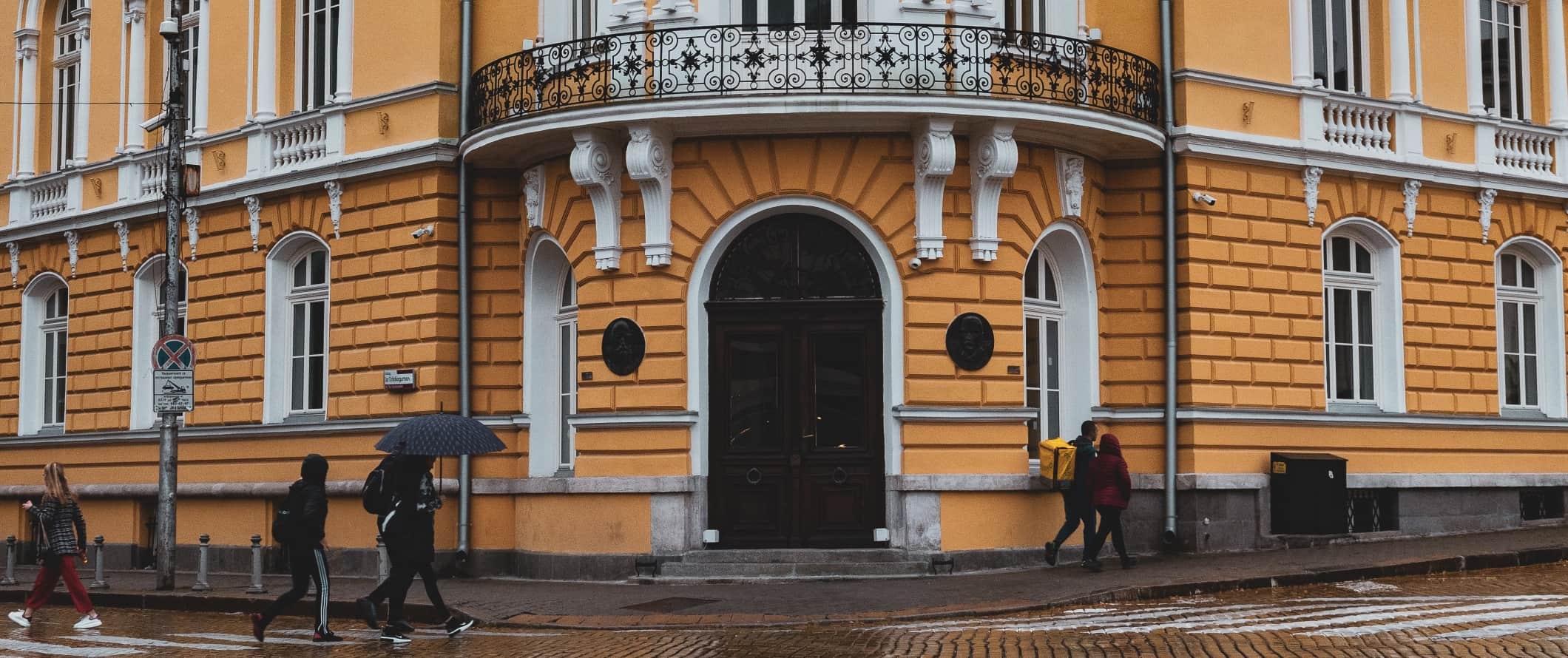
Hostel prices – A bed in a hostel dorm with 4-6 beds costs between 12-25 BGN per night. For a private room in a hostel, expect to pay between 35-75 BGN per night. Free Wi-Fi is standard and most hostels also have self-catering facilities.
If you’re traveling with a tent, wild camping is illegal in Bulgaria. There are campgrounds outside the city, however, you can’t book online or find prices in advance so you’ll need to check on arrival.
Budget hotel prices – Budget two-star hotels cost around 40-65 BGN per night. Expect basic amenities like TV and free Wi-Fi.
Airbnb is available all over the city, with private rooms starting at 30-55 BGN per night. Entire homes and apartments start around 55 BGN though prices average double that.
Food – Bulgarian cuisine is hearty and similar to that of its Balkan neighbors. Meaty stews with lamb, goat, or chicken are common, as are sausages and all kinds of yogurts (dairy products are big here). Popular dishes include kebapche (grilled mincemeat), shopska salad (a salad with tomato, cucumber, and cheese; similar to Greek salad), and moussaka.
You can find foods like banica (cheese pastry) for as little as 1.50 BGN, or you can pick up a hearty shopska salad or kebab for about 5 BGN. Pizza slices and hot dogs are usually no more than 4 BGN, while a sandwich is between 4-5 BGN.
A combo meal at McDonald’s costs 12 BGN while a meal at a mid-range restaurant with a drink shouldn’t cost more than 15-20 BGN.
If you want to splash out, a three-course dinner with a glass of wine at an upscale restaurant ranges from 35-50 BGN.
Beer is around 4 BGN while a latte/cappuccino costs around 3.70 BGN. Bottled water is 1.60 BGN.
Grocery shopping is incredibly affordable here, costing around 50-65 BGN per week for basic staples like rice, pasta, seasonal produce, and some meat.
Backpacking Sofia Suggested Budgets
If you’re backpacking Sofia, expect to spend about 60 BGN per day. On this budget, you’ll be staying in a hostel dorm, cooking your meals, limiting your drinking, taking public transportation to get around, and sticking to mostly free activities like free walking tours and hiking. If you plan on drinking, add 5-10 BGN to your daily budget.
On a mid-range budget of 150 BGN per day, you can stay in a private Airbnb, eat out for most meals at cheap fast food joints, enjoy a couple of drinks, take the occasional taxi to get around, and do more paid activities like visiting museums and attending performances.
On a “luxury” budget of 275 BGN or more per day, you can stay in a hotel, eat out for all your meals, drink more, rent a car or take more taxis, and do whatever tours and activities you want. This is just the ground floor for luxury though. The sky is the limit!
You can use the chart below to get some idea of how much you need to budget daily, depending on your travel style. Keep in mind these are daily averages — some days you’ll spend more, some days you’ll spend less (you might spend less every day). We just want to give you a general idea of how to make your budget. Prices are in BGN.
Sofia Travel Guide: Money-Saving Tips
Since Sofia is the capital city of Bulgaria, prices are a little higher here when compared to other parts of the country. However, it’s still incredibly affordable as there are so many cheap and free things to do. Here are some ways to save money in Sofia during your visit:
- Stay with a local – If you look early, you can likely find a Couchsurfing hosts in Sofia. This not only gets you free accommodation but you’ll connect with a local who can share their insider tips and advice.
- Take a free walking tour – Walking tours are a great way to get familiar with the city and its culture while on a budget. Just be sure to tip your guide at the end!
- Look for free events – There are always free events and festivals happening in Sofia (especially in the summer). Be sure to ask your hostel staff or host about what’s going on during your visit.
- Bring a water bottle – The tap water here is safe to drink so bring a reusable water bottle to save money and reduce your plastic use. LifeStraw is my go-to brand as their bottles have built-in filters to ensure your water is always clean and safe.
Where to Stay in Sofia
Sofia has several fun, clean, and affordable hostels. They fill up fast during the summer so book early. Here are my suggested places to stay in Sofia:
- Hostel Mostel
- Hostel Ivory Tower
- Park Hsotel Sofia
How to Get Around Sofia
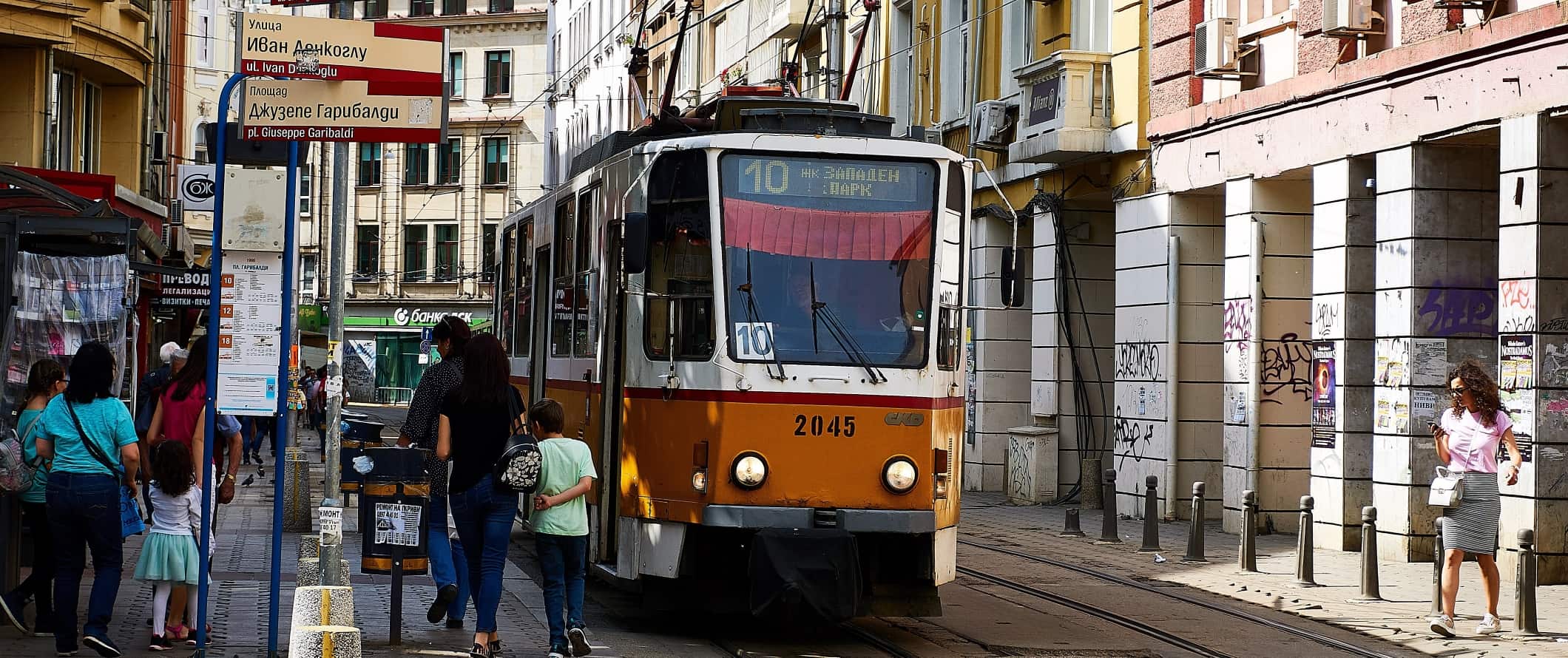
Public transportation – Sofia’s metro has two lines connecting the city center and the airport, as well as the central bus and train stations. Individual tickets are 1.60 BGN each, but they can’t be used on the buses, trams, or trolleybuses.
However, you can purchase a day pass for 4 BGN or a three-day pass for 10 BGN with unlimited rides on all public transportation. Use the official website (sofiatraffic.bg) to look up schedules and routes. This is by far the best deal for getting around the city.
Sofia’s bus system is extensive and can get you just about anywhere you need to go using it. You can use the sofiatraffic.bg website or the Moovit app to help plan your journey. You’ll need the exact change to buy a ticket from the driver on board the bus. Tickets are 1.60 BGN and you can purchase a 10-ride pass for 12 BGN.
Taxi – The normal start rate for a taxi in Sofia is 2 BGN, and then an additional 1-2 BGN per kilometer. The rate at night is 1.99 BGN per kilometer. While affordable, they can add up fast if you use them often so stick to public transportation if you can.
Bicycle – There are lots of bicycle rental services in Sofia. You can rent a bicycle for one full day for about 20 BGN. Sofia Bike Rental and Rent a Bike Sofia are two good options.
Car rental – Car rentals are super affordable here, costing as little as 25 BGN per day. You don’t need one to get around the city, however, if you want to explore the region a car might be helpful. Drivers need to be at least 21 years old and have an IDP (International Driving Permit).
When to Go to Sofia
Sofia has four distinct seasons, of which summer (June-August) is the busiest. June can be quite rainy, but otherwise, the daily temperature is usually over 30°C (86°F). Keep in mind that this is the most expensive time to visit, as prices for hostels and hotels increase.
I personally think the best time to visit is spring (April-May) or fall (September-October). Both seasons have pleasant temperatures, fewer tourist crowds, and lower prices. The foliage around Mount Vitosha is spectacular during the fall, making for some excellent hiking. Temperatures range from 5-21°C (41-70°F) in the spring and 6-17°C (42-62°F) in the fall.
Winter (December-March) is the quietest time of year to visit, as temperatures drop below freezing. The weather can be snowy and unpredictable during this time. If you like winter sports, this is the best time to visit for skiing Mount Vitosha or nearby Bansko. Accommodations are cheapest during this time as well. If you’re not coming for winter activities, though, I’d skip a visit during the winter.
How to Stay Safe in Sofia
Sofia is very safe. Scams and petty crimes like pick-pocketing are the most common danger you’ll face, but those are rare. Nevertheless, always keep your valuables secure and out of sight just to be safe.
Solo female travelers should generally feel safe here, however, the standard precautions apply (never leave your drink unattended at the bar, never walk home alone intoxicated, etc.).
When it comes to scams, if a stranger stops to talk to you out of the blue, be aware that they may be working in a team to try and grab your wallet. The best thing to do is ignore them and keep walking. Some taxi drivers have been known to overcharge their customers, so make sure your driver has a metered cab before you get in it.
You can read about common travel scams to avoid right here .
Pedestrian safety can be a concern as some drivers do not give pedestrians the right of way. Take caution when crossing the street.
If you experience an emergency, dial 112 for assistance.
Always trust your gut instinct. Make copies of your personal documents, including your passport and ID. Forward your itinerary along to loved ones so they’ll know where you are.
The most important piece of advice I can offer is to purchase good travel insurance. Travel insurance will protect you against illness, injury, theft, and cancellations. It’s comprehensive protection in case anything goes wrong. I never go on a trip without it as I’ve had to use it many times in the past.
Sofia Travel Guide: The Best Booking Resources
These are my favorite companies to use when I travel. They consistently have the best deals, offer world-class customer service and great value, and overall, are better than their competitors. They are the companies I use the most and are always the starting point in my search for travel deals.
- Skyscanner – Skyscanner is my favorite flight search engine. They search small websites and budget airlines that larger search sites tend to miss. They are hands down the number one place to start.
- Hostelworld – This is the best hostel accommodation site out there with the largest inventory, best search interface, and widest availability.
- Booking.com – The best all around booking site that constantly provides the cheapest and lowest rates. They have the widest selection of budget accommodation. In all my tests, they’ve always had the cheapest rates out of all the booking websites.
- HostelPass – This new card gives you up to 20% off hostels throughout Europe. It’s a great way to save money. They’re constantly adding new hostels too. I’ve always wanted something like this and glad it finallt exists.
- Get Your Guide – Get Your Guide is a huge online marketplace for tours and excursions. They have tons of tour options available in cities all around the world, including everything from cooking classes, walking tours, street art lessons, and more!
- The Man in Seat 61 – This website is the ultimate guide to train travel anywhere in the world. They have the most comprehensive information on routes, times, prices, and train conditions. If you are planning a long train journey or some epic train trip, consult this site.
- Rome2Rio – This website allows you to see how to get from point A to point B the best and cheapest way possible. It will give you all the bus, train, plane, or boat routes that can get you there as well as how much they cost.
- FlixBus – Flixbus has routes between 20 European countries with prices starting as low 5 EUR! Their buses include WiFi, electrical outlets, a free checked bag.
- SafetyWing – Safety Wing offers convenient and affordable plans tailored to digital nomads and long-term travelers. They have cheap monthly plans, great customer service, and an easy-to-use claims process that makes it perfect for those on the road.
- LifeStraw – My go-to company for reusable water bottles with built-in filters so you can ensure your drinking water is always clean and safe.
- Unbound Merino – They make lightweight, durable, easy-to-clean travel clothing.
- Top Travel Credit Cards – Points are the best way to cut down travel expenses. Here’s my favorite point earning credit cards so you can get free travel!
Sofia Travel Guide: Related Articles
Want more info? Check out all the articles I’ve written on backpacking/traveling Bulgaria and continue planning your trip:
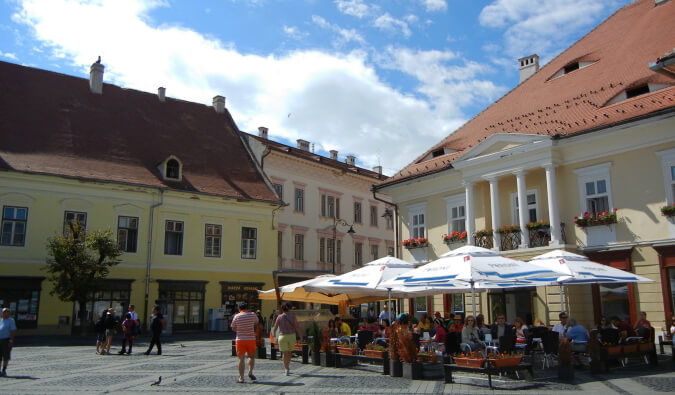
The Cost of Traveling Far Eastern Europe
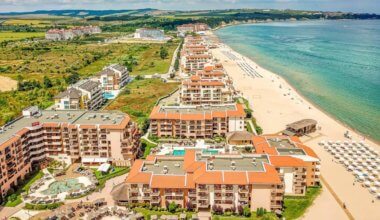
Understand [ edit ]

Sofia was founded around 2,500 years ago. Over the centuries, it has had several names: Serdika, Sredets and the remains of the old cities can still be viewed today. Near Sofia lies Boyana church, which is one of the most valuable memorials of Bulgarian and European culture. The church has frescoes, acclaimed by specialists as the best examples of eastern medieval art from the 13th century AD. The decline of Sofia during the Turkish Ottoman Empire was followed by the rejuvenation after the Russian liberation in 1878, when Sofia was chosen as the capital of Bulgaria at the First National Constituent Assembly, and followed by a brisk and straightforward period of construction.
- Visit Sofia tourism website
Get in [ edit ]
By plane [ edit ].
Over 20 airlines operate service to/from Sofia, with direct flights to/from Athens , Paris , Vienna , London , Rome , Amsterdam , Munich , Warsaw and other European cities. There are also domestic flights from Varna and Burgas .
Along with traditional carriers, some low-cost companies serving Bulgaria are EasyJet (to/from London-Gatwick, Madrid, Manchester) and Wizz Air (to/from Paris-Beauvais, Barcelona, Brussels-Charleroi, Dortmund, Eindhoven, London-Luton, Milan-Bergamo, Rome-Fiumicino, Valencia) and RyanAir. Bulgaria Air , the national carrier operates service to/from Alicante , Amsterdam , Athens , Barcelona , Beirut , Berlin , Brussels , Bucharest , Frankfurt , Istanbul , Larnaca , London (Gatwick & Heathrow), Madrid , Málaga , Manchester , Palma de Mallorca , Paphos , Paris , Rome , Skopje , Tel Aviv , Tirana , Tripoli , Valencia , Vienna and Zürich .
Budget airlines including EasyJet, Eurowings and Wizz Air operate from Terminal 1, while the traditional carriers including Bulgaria Air but also Ryanair operate from Terminal 2. There are shops, cafes, post offices, ATMs, and money exchange offices at the airport. For more details, see the airport website [dead link] .
There is a free shuttle bus operating between Terminals 1 and 2 every 15–30 minutes between 05:00 and 23:00. Outside of those hours, a free shuttle bus can be requested at the information desk or you can use Busses #84 or 184 depending on direction (see below). After midnight you might asked to book a cab for such ride.
To travel between the airport and the city centre:
- Sofia Metro Line 4 (Yellow) operates service to the airport between 05:30 and 24:00. The stop is next to Terminal 2 (leave the building and go east). The journey to the city centre takes 20–30 minutes. The journey to the central bus station takes approximately 35 minutes and a transfer is required. A single ticket costs 1.60 лв. You no longer need an extra ticket for each piece of large luggage. You can also buy a day ticket for all modes of public transport for 4 лв. The access gates as well as some ticket vending machines also accept credit cards and payment apps such as Apple Pay.
- Public Busses #84 and 184 operates service between both terminals and the city centre. The journey takes 30–40 minutes. Tickets can be purchased from news stands or ticket machines in the airport as well as by contactless payment aboard. A single ticket costs 1.60 лв. An extra ticker for large luggage is no longer needed. The bus makes a stop at Orlov Most (Sofia University metro station), where you can transfer to the metro.
- Taxi service from the airport is regulated. OK Supertrans AD is the only contracted taxi operator from the airport. It is best to request a taxi either from the taxi stand to the right when you leave the arrivals area or the taxi office right adjacent to the exit from the baggage reclaim. Beware of touts offering taxi service as well as non-contracted taxis with the fake "OK" logo which usually wait in front of the terminal instead on the official taxi rank besides it. A taxi to the city center will cost approximately 15 лв. The regulated taxi fare is: initial fee of 0.70 лв, price per km 0.79 лв in the day or 0.90 лв at night, price per minute of stay of 0.22 лв, price for ordering a taxi via phone of 0.50 лв. You can also use the Ridenow Taxi app .
By train [ edit ]
Trains run to Sofia from all the major cities, including the seaside resorts of Burgas and Varna . In any case, leaving by train is mostly recommended if you want to travel overnight to destinations on the Black Sea, since trains for Varna and Burgas will leave late in the evening and get you there in the early morning (a couchette to Varna is 16 лв).
Timetables can be found at the website of Bulgarian State Railways .
International [ edit ]
From Romania , a train runs daily from Bucharest at noon, taking ten hours; the return train leaves Sofia at 09:00. June to Sept this is a through-train, Oct-May you have to change at Ruse on the border. There's no longer an overnight train.
From Greece , a train runs daily from Thessaloniki at 07:00 reaching Sofia by 14:20; the return train leaves Sofia at 15:00 to reach Thessaloniki (shown on departure boards as "Solon") for 22:20. You need to stay there overnight for connections to and from Athens, Piraeus and the ferries to the Greek islands.
From Turkey , a sleeper train departs Istanbul Halkalı at 21:40, running via Edirne, Kapikule on the border where you get out for passport control, and Plovdiv, to reach Sofia by 09:00. The eastbound train leaves Sofia at 18:30 to reach Istanbul for 05:40. Fares are quoted in euros: in 2022 you pay €31.68 for the basic single from Istanbul. Add €10 for a couchette, €15 for a bed in a shared 2-person cabin or €35 for the entire cabin.
From Serbia , from mid-June to mid-Sept a direct train runs daily between Belgrade Topcider and Sofia, taking ten hours. However the Budapest-Belgrade line is disrupted throughout 2022 for engineering works, so it is difficult to reach Bulgaria from western Europe by train.
By car [ edit ]
The motorway network in Bulgaria is still under construction.
Access to Bulgaria's capital is via several entry points:
- From the north (Vidin) & south (Thessaloniki) via E79.
- From the east - via Thrace Highway E80/A1.
- From the west - from the Bulgarian-Serbian border point of Kalotina.
The following motorways heading for Sofia are already in service:
- A1 connects Sofia to Burgas and the Black Sea coast, as well as Istanbul.
- A2 ends about 80 km from each city; the rest of the route is a regular 2-lane road. Extensions into the cities are planned.
- A3 is planned to be from Sofia to Thessaloniki, about 2/3 of the route is already in service.
Coming from North Macedonia, via Kyustendil the roads are relatively good but driving within speed limits would avoid you much hassle caused either by traffic police, or road conditions. From Central Europe you can drive almost the whole length on highways (via Slovenia-Croatia-Serbia or Hungary-Serbia), with only the last 100 km between Niš in Southern Serbia and Sofia being heavily trafficked mountain roads around the Nishava ravine in not the best shape.
Get around [ edit ]
By public transport [ edit ].

Sofia has a well-developed, cheap, and efficient public transport system [dead link] that consists of buses, trolleybuses, trams, and subway lines. The transport network can be confusing for visitors who do not know it well, but there is a journey planner . The public transport operates from 05:00–23:00. Taxis are the only transport option in the night.
The price of a single ticket is 1.60 лв only paid in the local currency cash. There are also daily travel cards (4 лв). Tickets and daily cards can be bought at most newspaper stands especially ones adjacent to public transport stops. If you can't find any, you can almost always buy tickets from the driver, though not guaranteed. Always punch a ticket immediately after entering the vehicle, using the yellow "thing" between the windows. The inspectors rarely understand English and you might have problems with them if you travel without a ticket or if you forget to punch it. Inspectors ambush and board buses and trams in groups (and their attitude is generally not friendly at all), sometimes accompanied by police, and make no exceptions. The fine is 40 лв (which is the inspector's price of a ticket for your current trip, so you can use your unvalidated ticket on another bus.)
Tickets can also be purchased using contactless bank cards and payment apps such as Apple and Google Pay ( Visit Sofia , which might be the easiest solution for foreign visitors. In the metro, the ticket gates have a contactless symbol indicating the location of the reader (it's on the left side, not the right). On buses and trams, there are blue electronic readers with the same contactless symbol. Contactless purchases will be capped to the cost of the daily travel pass. Visit Sofia states: "If you travel more than three times during the day, from 16:30 to 00:00, including a combination of ground transport, the system automatically charges a daily pass price of 4 лв, regardless of how many times you used public transport. The only condition is to use the same bank card throughout the day and for one person only."
The day ticket needs to be shown to the person at the ticket office before every metro trip, as they are supposed to check the date stamp (manually applied at the time of sale) before activating the ticket barriers to accept it. If you are staying for 4 or more days, or 3+ days and arriving directly in the city centre, you can also buy a 3-day ticket on an electronic card from the public transport offices (not from metro stations or at the airport) for 10 лв + 2 лв card fee.
There are 15 tram lines, 9 trolley lines, 93 bus lines and 3 metro lines. Some of the buses cover the area outside the city centre including neighboring villages. Useful routes are bus #84 from both terminals of the airport to the center; from the train/bus station to Orlov most - bus #213 or #214 or tram #1, #7 and #18 to Vitosha Street and Sv. Nedelya Square, #1, #6, #7 to the National Palace of Culture, #18 to Slaveykov square or #6 to Macedonia square.
The subway in Sofia is still under construction and more lines will be available in the next years. There are two lines: one that crosses from the western edge of town (Lyulin, Obelya) through the city centre, the southeast (Mladost) and the airport; and a second one, that crosses from the northwestern neighbourhoods (Obelya, Nadezhda), through the central train and bus stations and the city centre, to the southern part of the city (Khladilnika). Trains operate two routes which each involve a combination of both lines . This may become more confusing as the system expands.
On foot [ edit ]
Streets have adequate tiled pavements, especially in the city centre. However, they are frequently uneven and potholed, and walking is further made difficult by parked cars, street vendors and cafes. Except for areas in the very centre, pavements rarely have slopes for wheelchair access or designated lanes for bicycle riders. Pedestrian crossings are numerous and are relatively respected by drivers. Use pedestrian underpasses to cross large intersections, though avoid ones in the suburbs as these are usually derelict.
By mini-bus [ edit ]
Mini-buses (marshrutki) stop if you just wave a hand and are usually fast way to go somewhere without need to change the car, but they aren't common anymore. You pay to the driver when you get on the car. Prices are 1.50 лв. You must tell the driver if and when you want to get off.
By bicycle [ edit ]
Sofia is one of the greenest capitals in Europe, with the big park zones ideal for biking. Slow traffic in downtown is perfect for cycling. On a bike you will save time and will enjoy sport activity. Sofia also has a few bike paths around the downtown area and in districts such as Mladost, Nadezhda, Hipodruma. Be careful as many cars double park and may open doors without noticing you. Rent a bike ) Bike rental operates 10:00-20:00 (April to November). Discover Sofia by bike map or joint to an experienced bike guide.
See [ edit ]

Sofia is one of the oldest cities in Europe and has ancient ruins throughout the city center. In the administrative center of Sofia, the streets are covered with a specific yellow pavement. It was laid in the beginning of the 20th century and were a present to the Bulgarian Tsar Ferdinand for his wedding from the Austria-Hungarian royal family.
Mineral springs [ edit ]
Sofia was founded because of the quality of its mineral waters. In the city, there are 7 independent mineral water springs . One of the springs is in the central area of the city and is accessible for everybody - cross the square behind the mosque, next to TSUM (the intersection of Iskar and Ekzarh Yosif streets).
Museums [ edit ]
- 42.693911 23.319845 9 The Red Flat , 24 Ivan Denkoglu str., Sofia , ☏ +359 98 825 2032 . Daily 10:30–19:30 . Half tour, half experience. Walk around a house setup like an old communist flat from the 1980s. You're allowed to touch and play with just about anything. There's an audio guide in English, Spanish and Bulgarian. 18 лв . ( updated Apr 2023 )
- Museum of Paleontology and historical geology , 15 Tzar Osvoboditel Blvd ( Inside Sofia University. ), ☏ +359 2 930 82 00 .
- National Ecclesiastical History-Archeological Museum , 19 Sveta Nedelya Sq. , ☏ +359 2 988 13 43 . 09:00 to 17:00 .
Galleries [ edit ]
Churches [ edit ].

- 42.6965 23.3315 19 Hagia Sophia Church , 2 Paris str. . It is across the square and to the right from the Aleksandar Nevski Cathedral. It was built in the 6th century over an even older church. It is a witness of the whole Bulgarian history and is a valued cultural monument. In the 14th century it gave its name to the city of Sofia. It was destroyed several times and during the Ottoman rule it was used as a mosque.
Other places of worship [ edit ]
Historical buildings [ edit ].

- Knyaz Battenberg's Palace ( Right in front of the city garden. ).
Monuments [ edit ]
- 42.69628 23.33053 30 Tsar Samuil Monument . A statue of the Bulgarian warlord and tsar Samuil, who ruled Bulgaria between 997 and 1014. ( updated Jul 2016 )
Open spaces [ edit ]
- 42.6879 23.3196 37 Park National Palace of Culture . ( updated Jul 2016 )
Parks and gardens [ edit ]

- 42.6739 23.3086 41 Yuzhen Park (South Park) . A nice park in the south-east part of the city, although a bit too crowded on weekends. Vibrant with open area cafes, entertainment for children and grown-ups, and a few ponds with ducks.
- 42.697433 23.342042 42 Oborishte Park , Yanko Sakazov blvd . A park near the center of the city with places to eat and drink. Also known as "Zaimov Park". ( updated Jul 2016 )
Bridges [ edit ]
Other sights [ edit ].
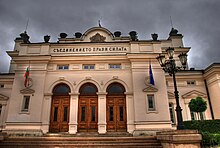
- 42.6942 23.3327 45 National Assembly of Bulgaria , 2 Narodno Sabranie Sq. , ☏ +359 2 939 39 , fax : +359 2 981 31 31 , [email protected] .
- 42.69354 23.33526 46 Sofia University , 15 Tsar Osvoboditel Blvd , ☏ +359 2 9308 , fax : +359 2 946 02 55 .
- 42.6173 23.3348 52 Snail House , Boulevard "Simeonovsko Shose 187, 1434 Simeonovo . Novelty architecture. ( updated Jul 2019 )
Do [ edit ]

- 42.66044 23.38229 2 Arena Cinema . One of the biggest Bulgarian cinema multiplex. Cinemas in Sofia play all films except children's films in their original language with Bulgarian subtitles.
- Sofia Bike Tour , Dyacon Ignatiy, 5 ( Start Point: National Theater "Ivan Vazov". ), ☏ +359 885523630 . April–November . Visit Sofia and the countryside around on a "free" bike tour, every day at 11:00 and 17:00. Note, for the ride you will need to rent a bicycle with the tour operators. And like always, the word "free" is a euphemism for "tips strongly appreciated". Also, this tour might in addition be a way to market their chargeable tours; always compare before committing to anything.
- Playgrounds . If you're travelling with kids, they might love playgrounds. The "rich" one is in the park that holds Vasil Levski stadium (close to the corner with Orlov Most; there are actually two playgrounds close to this corner and you'd look for the one more inside the park).
- Football – The men's national football team plays at Vasil Levski stadium (capacity 43,000) 1 km southeast of city centre. Five city clubs play in First League, Bulgaria's top tier:
- CSKA Sofia play at Bulgarian Army Stadium (capacity 23,000) just south of the national stadium.
- CSKA 1948 were formed in 2016 after a bust-up at CSKA Sofia. They play at Stadion Bistritsa (capacity 2500) 15 km south, and shared with Septemvri in the Second League.
- Levski Sofia play at Stadion Georgi Asparuhov (capacity 25,000, aka Vivacom stadium) 3 km east of the centre.
- Slavia Sofia play at Alexander Shalamanov Stadium (capacity 25,500) 4 km southwest.
- Lokomotiv 1929 play at Stadion Lokomotiv (capacity 17,500) 4 km north.
Vitosha [ edit ]

A magnificent landmark mountain very popular with the locals and rising just south of the capital. It is easily accessible by public transportation, bus 63 (from stop Tsar Boris III ) or 66 (from Metrostantsiya Vitosha metro stop), or by car. Day trips in Vitosha on a sunny day are highly recommended.
In the winter, it is well suited for skiing [1] and its proximity allows one day ski-trips; in the summer it is great for hiking. A great way to spend few days in Sofia, being on its "balcony," enjoying sunny days on the mountain with a spectacular view on the capital. So going to Sofia provide gives you a unique chance to witness the rare symbiosis of the metropolitan city with its nature park.
Buy [ edit ]
It is strongly advisable to skip exchange offices on the street and use exclusively banks for exchanging money. Some exchange stalls will try to scam you by buying your currency at very unfavorable rates. See Bulgaria#Money for exchange rates.) It's also possible to change money at a good rate in casinos if you play there.
ATMs are widely available and accept all major credit cards (Visa, MasterCard, Amex, Diner's, etc.), although you have to check your daily limit with your bank. ATMs will let you withdraw at most 400 лв in one go, but if your card limit allows it, you can make two or more withdrawals.
Credit cards are widely accepted in larger stores and supermarkets, but in small souvenir shops or restaurants you will definitely need to carry some cash.
Souvenirs can be bought many small shops in the subways in front of the old Party House and in the metro station at the Largo. The Ethnographic Museum has a small shop tightly crammed with souvenirs of all kinds from all over Bulgaria (on the right, just as you enter the main entrance). Antiques and souvenirs can also be found in Aleksandar Nevski square, in stalls just opposite the church.
- Vitosha Boulevard . It`s the main commercial street in the centre of Sofia. Its pedestrian part is a popular place for walks. It is known as the most expensive street in Sofia.
- 42.6606 23.3824 1 The Mall , 115 Tzarigradsko Shose Blvd ( Many bus lines stop at THE MALL. Choose between bus no. 1, 3, 5, 6, 76, 84, 114, 204, 213, 214, 284, 305, 306, 313 and 604. ). 10:00 to 22:00 . a convenience store, Largest shopping mall in Bulgaria; contains also a Carrefour store, large Arena cinema, a lot of cafes and restaurants, etc.
- 42.6999 23.3221 2 Central Sofia Market Hall , Knyaginya Maria Luiza Blvd ( Opposite the Banya Bashi mosque. ). Has many stalls selling all kinds of food, drink and cosmetics. The second floor has various fast-food cafés. As of early 2023 closed for renovations. .
- 42.6983 23.3226 3 TZUM , 2, Knyaginya Maria Luiza Blvd , ☏ +359 2 926 07 00 , [email protected] . 10:00 to 21:00 .
- 42.6983 23.3091 4 Mall of Sofia , 101, Aleksander Stamboliyski Blvd , ☏ +359 2 929 33 77 , fax : +359 2 929 33 00 . Contains a Piccadilly store and a Cinema City multiplex.
- 42.6789 23.3209 5 Park Center , 2 Arsenalski Blvd., floor 3 , ☏ +359 2 865 72 85 , fax : +359 2 865 71 37 .
- 42.6798 23.3676 6 SkyCity Mall , 52 Kosta Lulchev Str. ( You can get there by tram No 20, bus No 9, and Route Taxi No 1, 19 and 21. ), ☏ +359 2 971 02 13 , fax : +359 2 971 01 89 , [email protected] . 10:00 to 22:00 . Also has an entertainment center.
- 42.6911 23.3538 7 Serdika Center Sofia . Contains a Piccadilly store.
- 42.6451 23.3926 8 Sofia Outlet Center .
- 42.6641 23.2888 9 Bulgaria Mall .
- 42.6582 23.3152 10 Paradise Center . Largest shopping mall in Bulgaria; contains also a Carrefour store, large Arena cinema, a lot of cafes and restaurants, etc.
- 42.6245 23.3527 11 Sofia Ring Mall . Contains a karting track and a Cinema City multiplex. ( updated Jul 2016 )
Eat [ edit ]

Sofia is full of trendy cafes with outdoor seating in the summer and good-quality restaurants.
Fast food [ edit ]
You can easily find take away food in Sofia. For less than 2 лв you can get a slice of pizza, a hot-dog or a sandwich. You can get more traditional Bulgarian food in bakeries, offering banitsa and other kinds of pastry. This food is often consumed with ayran or boza. Another possibility is to get a katma, which is a big pancake filled with cheese, ham, jam or chocolate.
Drink [ edit ]
Cafés [ edit ].
- Starbucks , Corner of Vasil Levski Blvd & Gurko Blvd .
- Onda Coffee Break , ☏ +359 2 980 49 40 , fax : +359 2 980 19 39 , [email protected] .
- [dead link] Pchela Sweet Shop .
- Nedelya Sweet Shop , ☏ +359 88 560 08 30 .
- Costa Coffee .
- Art Club since 1991 , 6 Tsar Ivan Asen II Str. .
Bars [ edit ]
- JJ Murphys Irish pub [dead link]
- Cocktail Bar [dead link] - tasty cocktails, crowded in the evenings, has a summer garden (it is actually in a small park, which becomes occupied by the customers)
- Bar 5L - Speakeasy (5L is a transliteration of rooster in Bulgarian). Designer cocktails in cozy atmosphere. The key, corresponding to the day of the month, unlocks the door (not sure whether they change it at midnight).
Stay safe [ edit ]
Generally, Sofia is a very safe and walkable city, even at night. Nevertheless, you should avoid poorly lit areas and use your common sense. Avoid the area around the central Bus and Rail Station, Maria Luiza Blvd, the dark areas of the city parks and the Lions' Bridge (Lavov Most). And don't go to the Borisova garden, it is very dangerous (especially during the night). Single women and girls should be especially careful. Junkies get high in these areas, prostitutes offer their "services", some people might want to tempt you with touts of contraband (stolen, illegal, etc.) and/or try to mug you. These areas are also frequented by the homeless and the drunk. If your hotel is in the area you'll be alright, just don't hang around it unnecessarily. Try to act like you are familiar with the area (and familiarize yourself during the day) and look like a local. It is wise to choose a hotel/hostel in a good, central location.
Pedestrians should be careful since many Bulgarian drivers do not yield right of way to those on foot.
Do not get into conflict with locals especially if they seem aggressive or drunk, particularly football fan groups who tend to be drunk and aggressive. Avoid wearing football shirts or scarves of the Sofia-based football teams, especially on match days.
Be wary of petty thieves and poorer neighborhoods, as pick pocketing and thefts are common. If you are approached by locals trying to sell stolen goods, give you directions or bother you exercise caution.
If you get in legal trouble with some of the locals, the Bulgarian police and judiciary may not protect you adequately because of corruption and nepotism.
Be careful with taxis, make sure you check the prices first before you get in (the fare is per km and it should be something like 0.79 лв during the day and 0.90 лв during the night, avoid taxis that display their fare as above 1.00 лв), also make sure the taxi has the driver's card on the front with his name.
Banks exchange most currency so there is usually no need to use exchange offices which often offer a poor rate, ignore anyone on the street wanting to change money; you will get an awful exchange rate, or a handful of fake banknotes.
Cope [ edit ]
Embassies [ edit ], connect [ edit ].
Sofia has 5G from A1, Telenor and Vivacom. Wifi is widely available in public places.
Go next [ edit ]
- Rila Monastery – The most famous monastery in Bulgaria, situated in the huge Rila Massive. It is a 1½-hour drive away from Sofia.
- Plovdiv – A large city in Bulgaria. It is 1 hr (or 2-4 hr by train, frequent connections, price 9 лв per person) drive on a good highway away from Sofia. Plovdiv lies around three hills in the otherwise flat Thracian plain. Its historical center, Roman remnants & relaxed feeling make it a great day-trip.
- Veliko Turnovo – A beautiful city along a winding river, the former capital of Bulgaria in the Middle Ages. The original city castle and walls are reconstructed. Be sure also to visit nearby Arbanassi .
- There are also many monasteries around Sofia.
- Bankya is around 14.3 km away from central Sofia and offers a range of pools and water springs and a large park near the centre of the city. You can get there by taking the 47,48 or 49 bus from the Slivnitsa metro station. Bus fares are around 1.60 лв or you can get an all day ticket for 4 лв.
- Istanbul is reachable by night train from Sofia Central Station (D 493). As of October 2023, the train departs Sofia at 18:30 and arrives at 05:30 at the Halkali station 25 km west of Istanbul, where you transfer to a local train to the city centre. The local train runs every 15 minutes and costs €2. 4-bed, 2-bed, and private berths are available.
- UNESCO World Heritage Sites
- UNESCO tag to be fixed
- UNESCO Creative Cities
- Has custom banner
- Has map markers
- Airport listing
- Articles with dead external links
- Articles with obsolete information
- Has mapframe
- See listing with no coordinates
- Do listing with no coordinates
- Buy listing with no coordinates
- Eat listing with no coordinates
- Drink listing with no coordinates
- Sleep listing with no coordinates
- Articles with formerly dead external links
- Has routebox
- Usable cities
- Usable articles
- City articles
- Has Geo parameter
- Bulgarian Shopluk
- All destination articles
- Pages with maps
Navigation menu
- Destinations
Is Sofia Bulgaria Worth Visiting? What To See and Do (Plus: How Long You Need!)
- April 13, 2022
Sofia is the capital of Bulgaria, but is it worth adding to your bucket list?
Here I will share the best things to see and do in Sofia, as well as where to stay, where to eat, and how to get around.
Plus : How long to spend in Sofia, and whether you should even bother!
Grab a coffee and take a deep dive with me, into Sofia Bulgaria.

Is Sofia Worth Visiting?
If you are just here for the short answer:
Yes. Sofia is worth the trip. Sofia is a slow burn however, and is better when you have time to get to know her.
Why Visit Sofia Bulgaria?
There are a lot of great reasons to visit Sofia, but here are the best of the best! :
- Sofia is affordable
- Sofia has great food
- Experience Sofia’s unique culture and atmosphere
- Sofia has an amazing history
Sofia is Affordable
For a major city in Europe, Sofia is ridiculously inexpensive across the board. Here are all of the things that you can save money on, when you travel to Bulgaria .

Sofia (and Bulgaria in general) is one of the rare places that you may not save a ton of money by cooking for yourself.
You can’t haphazardly grocery shop and make pretty much anything at your apartment and still save money over eating at a restaurant.
If you do some good meal planning you could definitely save a few bucks, but eating out for every meal won’t break the bank.
$25 – $30 USD per person per day would be plenty for food – even if you’re eating out.

Cheap Transportation
Getting around in Sofia is very affordable. A taxi ride will not cost you more than $5 – $10 no matter where you are going in the city.
(Unless you have luggage! Then you may get gouged like anywhere else.)
Sofia has a limited and outdated metro system, but tickets will only cost you about $1 USD.
Plus, walking is free, and the city is pretty pedestrian friendly.
Free and Cheap Things to do
There are a number of quality free things to do in Sofia, which I will cover in a moment, under “Things to do.”
Another great reason to visit Sofia!

Affordable Accommodation
Sofia is more expensive than the rest of the country, but it still doesn’t push anywhere near the prices of other European capitals.
You can get a nice place in central Sofia for less than $300 USD per week . That’s just $42 per night!
(I will list some popular accommodation in just a minute.)
Depending on when you go and how much space you need, you can also find accommodation for under $30 per night.
Sofia has Good Food
Sofia isn’t just home to cheap food, it’s good food. This city has a budding art and foodie scene, and we’re here for it.
Sure there is a lot of pizza, but Bulgaria has a lot of other great comfort foods. A lot of the offerings are simple but delicious.
Sofia has a Unique Culture
I know some would scoff at the idea of Soviet “culture,” but Sofia has a very unique blend of Bulgarian folk culture mixed with their modern history of communism.

It’s present in the architecture and in people’s attitudes.
(Take that as you will.)
Sofia has a Long and Interesting History
Sofia has been around in one form or another since the neolithic era. Artifacts have provided evidence of settlement since 4000 BC or even earlier! That’s insane.
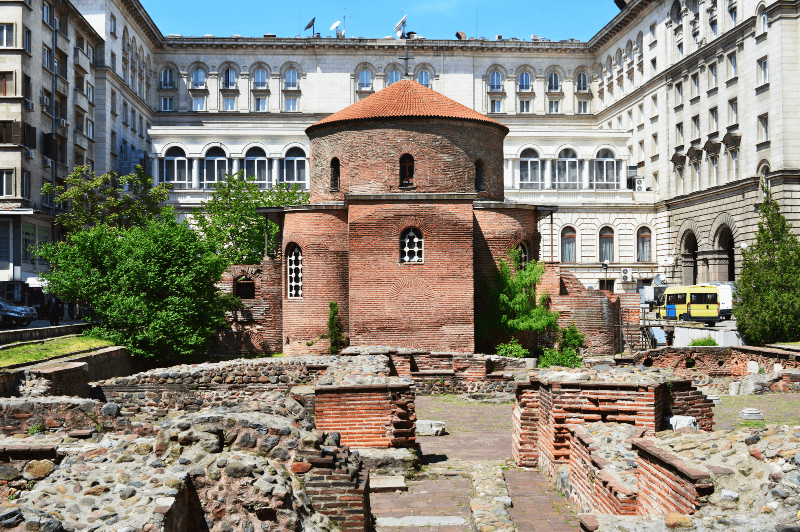
The best preserved history is from the time of ancient Serdica all the way through to medieval times.
Sofia isn’t just a cheap place to visit with a big church! Baby got back…story.
Why Visit Bulgaria?
Bulgaria has all of the same price perks that Sofia does.
Across the country you will find affordable:
- Accommodation
- Transportation
- Things to do (many free)
What else does Bulgaria have going for it?
Varied Landscapes
I’ve said it before, and I’ll say it a million times, Bulgaria has everything when it comes to natural wonders.
This country has mountains and caves, beaches and hot springs, forests and lakes.
It even boasts a single (albeit small) desert.

Whatever natural things you like to see on vacation, you can see them in Bulgaria.
Not Touristy
Sofia is about as touristy as Bulgaria gets, and it’s not that touristy.
If you like hidden gems and underrated destinations, you will like Bulgaria.
Ancient History
Bulgaria is on of the oldest countries in Europe (many say the oldest) and as such the country is full of amazing ruins and artifacts.
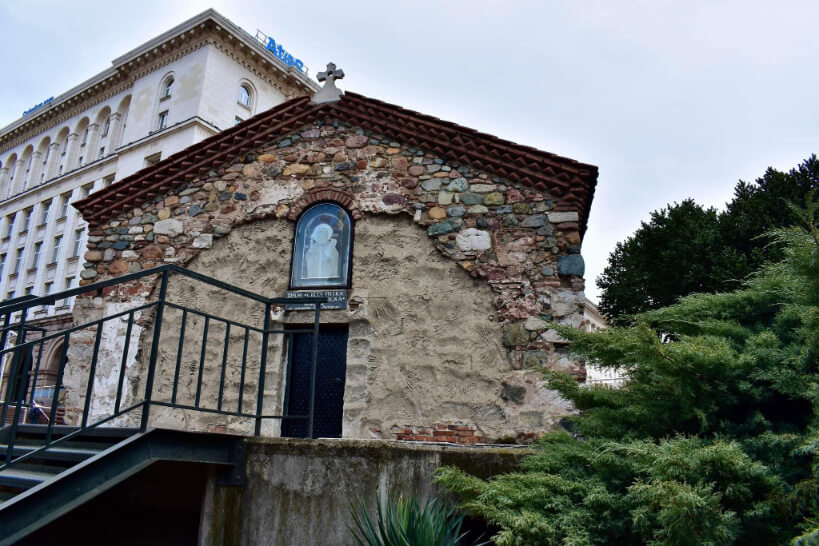
Relatively unknown archaeological sites are scattered everywhere, and you are sure to discover something you have never heard of.
History of Sofia
(Click here to skip History)
I will try to summarize as concisely as possible! As I mentioned earlier, Sofia was inhabited in the neolithic time , so there is a lot of ground to cover.
[The following is my best attempt at piecing together information from Wikipedia , Britannica , and a number of other credible sources that sometimes conflicted with one another. You may find details elsewhere that differ from what is compiled here.]
Thracian Rule
The first known organized settlement, was that of a tribe of Thracians. They lived in Sofia prior to the 5th century BC, at which time they became part of the Thracians’ Odrysian Kingdom.

Macedonian Rule
Philip II of Macedon, the same kind who would give Plovdiv it’s former name “Philipoppolis,” defeated the Thracians and took much of modern day Bulgaria.
He conquered Sofia in 339 BC.
Serdi Occupation
Details are scant about the tribe that gave Sofia it’s earliest recorded name of Serdica. The first mention of the city is from the 1st century BC.
While they are often referred to as Thracians or Romans, they were actually a Celtic tribe.

The Romans took Serdica around 29 BC and ruled for centuries. Most of the amazing antiquities found in Sofia are from this time period.
I cover Serdica and its ruins thoroughly here:
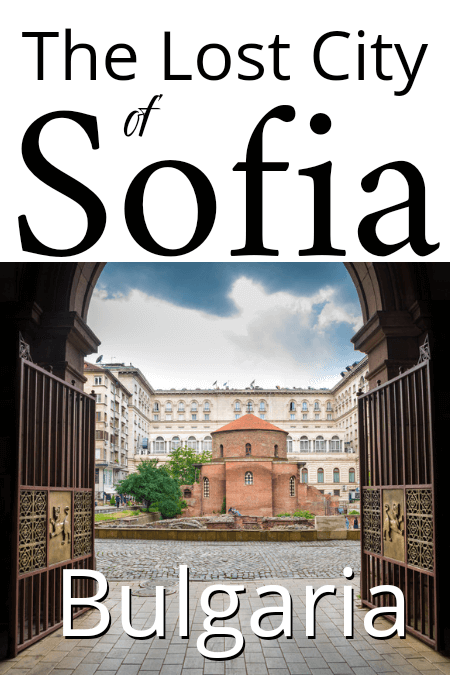
Byzantine Empire
Under the Emperor Constantine, Sofia (Serdica) became part of the Eastern Roman Empire, known by most of us as the Byzantine Empire, sometime after 330 AD.
Huns destroyed the city in 447 AD, but it was rebuilt in the 6th century by the Byzantine Emperor Justinian.
(I was very curious what happened between 447 AD and whenever it was rebuilt in the 500’s, but I couldn’t find any info. The facts may not be recorded, or may only be available to those who can read Bulgarian language history books.)

Contested Rule
In 809 AD Khan Krum of the Bulgars took the city and incorporated it into the Bulgarian Empire. At this time Serdica was renamed “Sredets” (In Greek: Triaditsa) .
After this time control of the city went back and forth a few times:
- 809 AD – 1018 AD Bulgarian Empire
- 1018 AD – 1185 AD Byzantine Empire
- 1185 AD – 1385 AD Second Bugarian Empire
Ottoman Empire
In 1385 , Sredets (formerly Serdica) became part of the Ottoman Empire , and remained under their control for nearly 500 years .
During this time, the city came to be known as “Sofia.” Interestingly, the name was unofficial at this time.
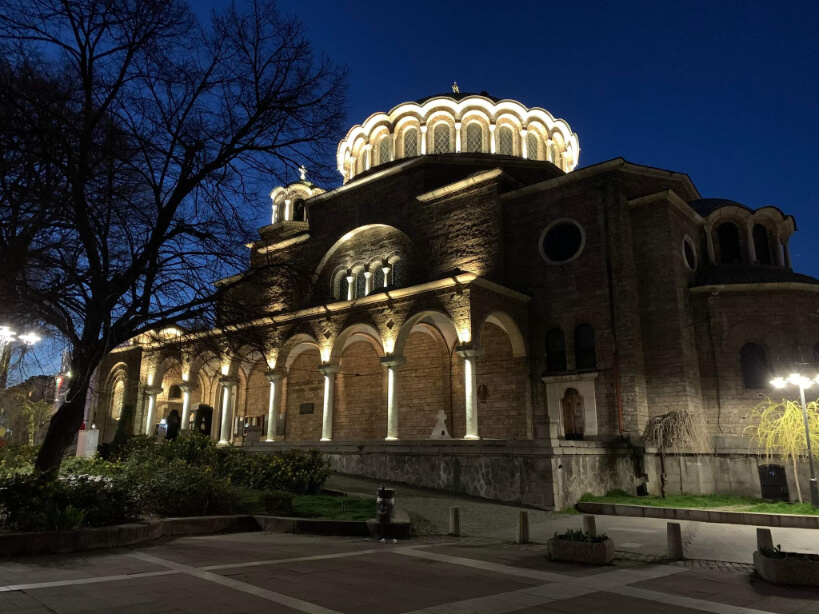
The earliest known reference to this new name was in 1376, but people living in the city were still referred to as “of Sredets” and the region was known as “Sredetska.”
This lasted the entire Ottoman period.
Vasil Levski is Bulgaria’s most famous hero, and he was put to death for fighting Ottoman rule. In a long and sordid tale , his body is thought to have been laid to rest secretly under the Sofia church: St. Petka and the Saddlers.
Russian Liberation
In 1878 Sofia (and all of it’s still Sredetsian people) was taken over during the Russo-Turkish war.
The Ottoman Empire signed a treaty with Russia, but other European superpowers intervened in the agreement, and a new treaty – the Treaty of Berlin – was signed.
This treaty allowed for a pseudo-independent Bulgarian state.

During this tempestuous time period, the debate over the name of the new Bulgarian capital raged on.
In 1879 a committee of celebrities formed to lobby for the historical name of Sredets.
From the Wikipedia article : “Gradually, a compromise arose, officialisation of Sofia for the nationwide institutions, while legitimating the title Sredets for the administrative and church institutions, before the latter was abandoned through the years.”
That doesn’t sound like a compromise so much as a formalization of what people were already doing, but the name Sofia ended up sticking , which is the takeaway.
In 1908 Bulgaria became truly independent , and was renamed the Kingdom of Bulgaria.
Bulgaria at War
Throughout the Balkan Wars (1912 & 1913) and both World Wars, Bulgaria remained independent and control of Sofia never changed.
Soviet Union

Post World War II, Bulgaria was a member of the USSR and remained one until it’s fall in 1989.
Bulgaria was the only southern Slavic country to not join Yugoslavia.
Where is Sofia?
Sofia is in west-central Bulgaria, and is the closest major city to the Serbian border.
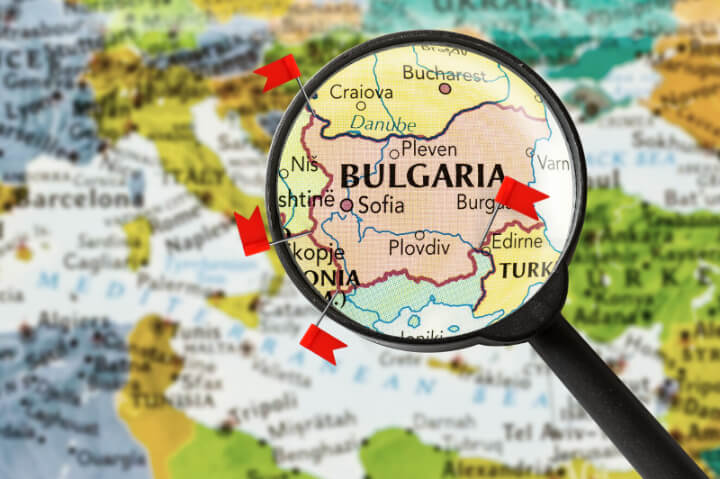
Getting to Sofia
Whether you are traveling from outside the country, or you are already in Bulgaria, there are a couple of ways to navigate to Sofia.
Flying to Sofia
From outside of Bulgaria, your most convenient and affordable option for visiting Sofia, is very likely by air.
Bulgaria Air offers a variety of affordable short-haul flights from other major European cities, as does Ryan Air and a few other low cost carriers.
If you are travelling from North America, schedule the cheapest flight to any large city in Europe, and find your own connecting flight to Sofia.
It will always be more affordable to arrange your own low-cost flight than to book all the way through to Sofia.
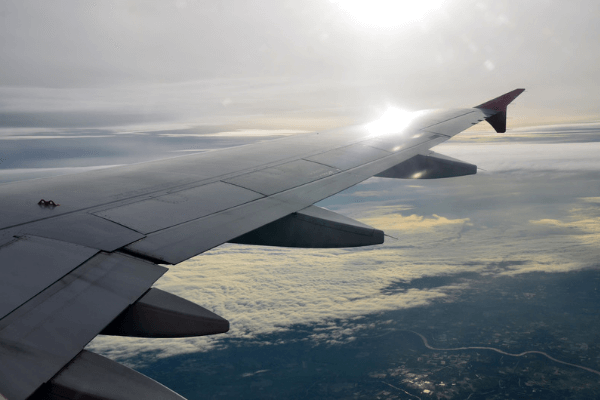
Getting to Sofia by Rail or Bus
Sadly the rail system in Bulgaria is poor compared to other countries, and is not a very efficient way to get to Sofia.
I know for sure that you can take a sleeper train from Istanbul, but beyond that I am not too sure.
There are some efficient bus options from bigger cities.
For bus and train routes, check out Rome2Rio. It’s an amazing resource for getting basically anywhere!
Driving to Sofia
If you fly to another Bulgarian city, either Burgas or Varna, you can drive to Sofia in about 4 – 5.5 hours respectively.
Download a maps.me to have offline GPS for your whole trip, or pay the extra few Lev to get a wifi device with your rental car.

Where to Stay in Sofia
The best neighbourhood in Sofia to stay in, is Vitosha Boulevard.
- Vitosha Boulevard
Vitosha is the main pedestrian area in the heart of Sofia’s city centre. From here you can reach a lot of great places on foot.
Boasting views of Mount Vitosha on one end, and the National Palace of Culture on the other, Vitosha is the best Sofia has to offer in terms of food, shopping, and culture!
Sofia City Centre
While Vitosha is in the city centre, staying inside the larger area of Sofia’s city centre is also a good choice.
Again this will be very pedestrian friendly, and nothing takes long to get to in Sofia.

Sofia Airport
Staying near the Sofia airport isn’t ideal for a few days stay, but for a stopover or for late departing or arriving flights, this might be your best option.
There are a number of hotels with free shuttles close to the airport, and you will also be close to the rental car agencies.
The metro into Sofia leaves right from the airport, so you can go back and forth with relative ease.
The airport is quite far from the city centre, so keep that in mind!
Best Places to Stay in Sofia
We happen to have not only a lot of personal experience staying in Sofia, but we also have connections to hundreds of travellers who have visited Sofia over the years.
Thanks to the Bulgarian adoption community, we have been able to gather a lot of information about people’s favorite hotels and apartments in Sofia.

These opinions are mostly from US families travelling with children.
Here is a list of highly recommended accommodation in Sofia!:
Top Accommodation in Sofia – Our Choice
Marrinella Apartments
Out of all the places we have stayed in Sofia, we liked Marrinella Apartments the best.
We have stayed in three different apartments with Marrinella, and each of them was great!
They have a number of apartments, all surprisingly spacious and close to Vitosha.
Our very favorite was a walk-up on the street ul. Knyaz Boris I – but that is probably because of nostalgia, it’s the first place we brought our daughter to!
Marrinella Apartments range in price from 22 – 84 Euros per night, and can sleep up to 5 people. If you don’t see something that will work for you, contact them!
We have found them to be very accommodating and I don’t think their full inventory is on the website.
Price: $25 – $97 USD per night Ask about weekly rates!
Marrinella Apartments haven’t been reservable on booking.com recently, but you can still book through their website here.
You can see their previous reviews and a number of photos on their booking.com page still.
Best Budget Accommodation in Sofia
Sofia Place
The Sofia Place Hotel is popular with families, as it has the amenities of a hotel, but still offers the space and convenience of apartments.
They get a thumbs up for having modern clean bathrooms, a delicious breakfast, and a great coffee shop next door.
Price: $35+ USD per night
Modest accommodations still close to the Vitosha pedestrian area. Great breakfast, and multiple people commented that they had very helpful staff.
There is also a good restaurant on site.
Price: $47+ USD per night
The Budapest hotel also has a great breakfast, and it is located in a quieter area of Sofia. The rooms are spacious and there is parking available, a rarity in the city center.
Price: $60+ USD per night
Arena Di Serdica
You can’t really beat staying at the site of ancient Roman ruins. Arena Di Serdica Hotel was built right over the remains of an ancient theatre that was discovered as they excavated for the foundations.
A more luxurious hotel in the most convenient area in Sofia.
Price: $141+ USD per night
Where to Stay Near the Airport
Best Western
You really can’t go wrong with Best Western . As far as chain hotels go, they are incomparable when it comes to a predictable experience.
The Best Western near Sofia airport has a free shuttle, beautiful clean rooms, and an amazing breakfast.
Price: $65+ USD per night

Getting Around the City of Sofia
The Sofia metro is very limited in its reach and route options.
It is very affordable however! Last time we were there it was still only 1 Lev for a ticket. (About $0.60 USD)
The metro is the best way to get into the city from the airport, without over paying for a cab.
The airport metro station is to the left as you exit the terminal. It’s so close that it’s basically connected!
After this, the metro is likely of little use to you. If you are staying in the city centre you can get most places on foot. When you can’t walk, a taxi is a better option.
In Bulgaria, taxis are pretty strictly regulated and they need to run the meter or you can report them.
(The number to report is plastered on every single taxi)
Cabs are affordable, and the best way to get around the city when you can’t walk.
(I know, as a slow travel blog, I would like to be more eco-conscious, but when public transport isn’t good, that’s just facts!)

If you are worried about getting ripped off, just ask how much it will be for your ride.
Most of the time the driver will look at you like you’re a maniac and gesture to the meter, which means he will use it!
Taxis are allowed to a charge a more expensive base rate if you have luggage, so bear that in mind if they spike the meter at the beginning of the ride.
If you have a stroller : Fold it before you try to catch a taxi, because they won’t want to pick you up if it looks big. (We discovered this.)
I wouldn’t recommend driving around Sofia.
It isn’t necessary to have a car, and it will be very difficult to get around the narrow streets of the city centre.
Most of Sofia’s streets are also paid parking, and they expect you to have a Bulgarian phone to be able to call in and pay.
If you do want to rent a car for the rest of your trip, there are a number of rental companies in the airport. We prefer Top Rent-a-Car .
If you need to drive your rental car to your accommodation for whatever reason, search for a paid parking lot.
These are not usually expensive and you will be able to pay cash, unlike street parking.

Where to Eat in Sofia
Sofia offers a huge variety of dining experiences for every budget. Here is a selection of the best restaurants in Sofia.
Best Atmosphere
Whether you want a view, or to see nothing at all, these are restaurants in Sofia with unique atmospheres:
Restaurant Serdika
This restaurant has an amazing atmosphere full of plants with floor to ceiling glass looking out on the ruins of Serdica.
Honestly, where else can you look out over Roman ruins as you enjoy your meal? Or maybe a better question: Where else can you comfortably afford to do that?
Restaurant Serdika serves traditional Bulgarian cuisine and features an extensive drink menu. Customer service was rated top notch here, which is somewhat of a rarity in Bulgaria.
Serdika is a little more expensive than the average casual dining experience in Sofia, and a main will cost you about 15 Lev (~ $9 USD).
Also in central Sofia, Tenebris is a once in a lifetime dining experience in total darkness.
Guests purchase a surprise 5 course tasting menu and enjoy their meal using every sense other than sight.
It may sound unusual, but Tenebris is actually the top-rated restaurant in Sofia on Trip Advisor, and receives rave reviews for both the quality of the food and the overall experience.
This atmosphere comes with a steep price tag for Sofia, and will cost you about 85 Lev (~ $50 USD.)
Reservations recommended. Vegetarian options available – Just make sure they know who at your table is vegetarian!

Best Budget
Despite the name implying perhaps an Italian restaurant, Carnivale is actually Greek food, but they do offer burgers and other items too.
Carnivale offers breakfast, lunch, AND dinner, so if you like it you are bound to return!
Customers of Carnivale love both the food and the service. Try their gyros with a local craft beer. Carnivale also offers hookah, so don’t be surprised by that.
Vegetarian options available.
Best Burger
Skaptobara iskra.
Another top-rated restaurant in Sofia on a budget is SKAPTOBARA Iskra . This casual spot offers top-notch burgers, piled high with amazing toppings.
They also offer craft beer to pair with your delicious burger.
SKAPTOBARA makes a bold promise about their offering, saying “nothing lame.” They offer free wifi, and accept cards, so that definitely helps!
A main at SKAPTOBARA will set you back $3 – $10 USD.
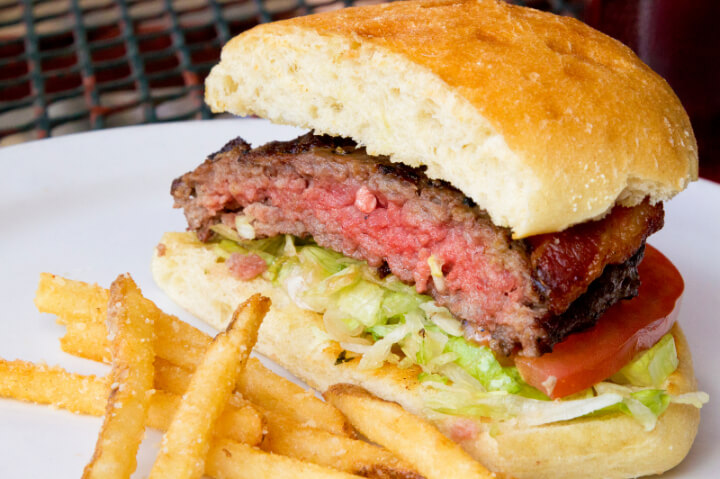
Best Dessert
Cake Lab is located very near Vitosha Boulevard and is the #1 rated “restaurant” in all of Sofia . They offer a wide variety of cakes, cookies, and other sweet treats. They also serve coffee of course!
Cake Lab also won’t break your budget! A treat here will cost only $1 – $4 USD.
Try Cake Lab for a breakfast pastry to start your day off right.
Restaurants on Vitosha
No surprise that the biggest tourist area in Sofia has a huge assortment of restaurants to choose from!
Most have patios that even operate in the winter with blankets and heaters.
Take a walk down Vitosha and try something new. We never had a bad dining experience in Sofia!

Sofia Landmarks
Here are a few of the more popular Sofia landmarks that you can see on your visit:
Alexander Nevsky Cathedral
I promise if you do a Google image search for Sofia, the Alexander Nevsky Cathedral (or just “the Nevsky”) will fill the results pages. It is Sofia’s largest and most recognizable landmark.
A little investigation reveals that the Alexander Nevsky Cathedral is the largest Orthodox church in Southeast Europe.
It is also said to be one of the 50 largest Christian churches in the world, and in the top 10 for largest Eastern Orthodox churches.
Basically, the Nevsky is huge , but not world-record huge.
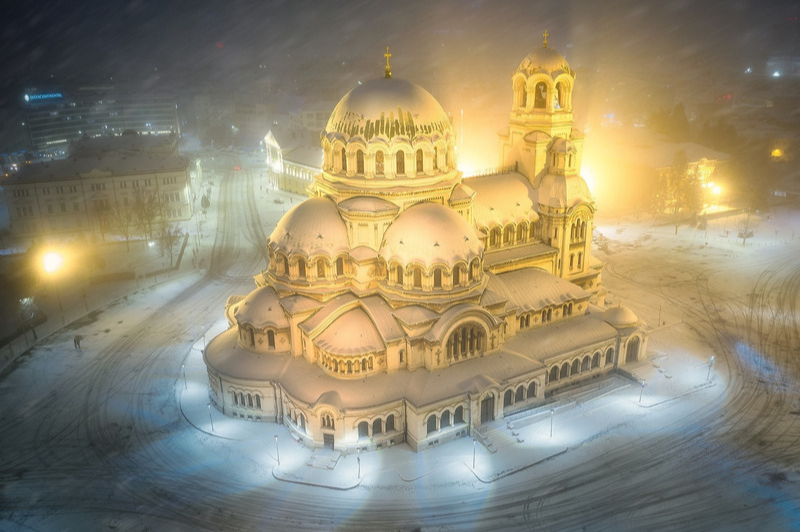
You may notice that only some of Alexander Nevsky Cathedral’s domes are shiny. This is not because they were cleaned recently, but because only 5 domes are actually gold and the rest are copper , which oxidized to the characteristic green colour.
The Alexander Nevsky Cathedral was built between 1882 and 1912.
This is also where you can find Sofia’s famous yellow brick road.
Yellow Brick Road
The yellow brick road in front of the Alexander Nevsky Cathedral, is exactly that: A road of yellow bricks.
I don’t think anyone can say for sure. The story has long been that they were a wedding gift for Tsar Ferdinand from the Austro-Hungarian Empire.
Since then an architect has claimed that the real story is that they were purchased from that Empire at great expense , with the hope that Sofia’s paved road would make the capital city more fashionable.
This last story is very interesting, because the capital of Portugal, Lisbon, very recently painted a street pink to revitalize a seedy area. It worked.
Does coloring a street fix everything? How does the rest of the world not know this?
The yellow brick road is said to be disappearing, as the bricks are no longer produced and the broken ones are being replaced with regular ones.
I don’t see why they couldn’t paint the bricks like Lisbon painted the pink street, since the bricks are already deathly slippery when wet! I guess we will see what the future holds.
In the meantime, the yellow brick road and the Alexander Nevsky are great instagram photo stops in Sofia!
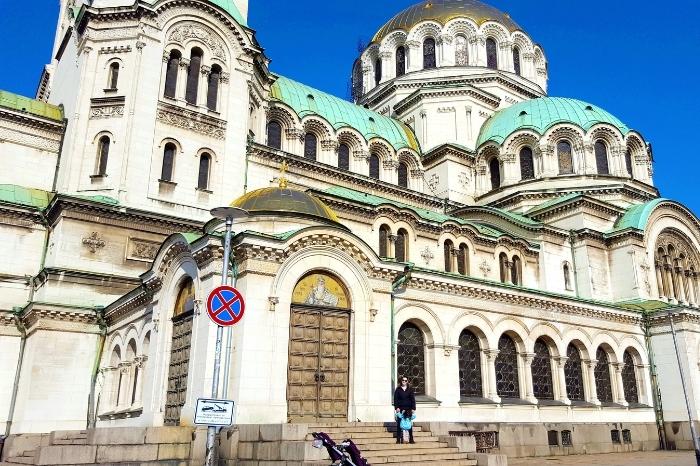
Sofia’s Oldest Landmarks
Some of Sofia’s oldest landmarks have been around since 200 – 300 AD!
These three are definitely worth visiting:
- St. George Rotunda
- St. Sophia Church
- Roman Ruins
I have already covered Sofia’s ancient sites in my post about Serdica (I will link it at the bottom of this article). Check that one out for how much everything costs to visit and where you can find each of them.
Statue of Sveta Sophia
You will probably see the statue of Sveta Sophia (St. Sophia) if you spend any time in Sofia’s city center traveling by car. She stands tall in copper and bronze in the middle of one of the city’s main thoroughfares.

In the year 2000, this statue took the place of one dedicated to Vladimir Lenin, the founding head of Soviet Russia.
Soviet Monuments
National palace of culture.
The National Palace of Culture in Sofia is hard to miss, and a must-see for anyone who is into Brutalist architecture.
The brain child of Lyudmila Zhivkova – both the daughter of one of Bulgaria’s Prime Ministers and a senior member of the Communist Party in her own right – stands tall in a city center park. It is now a convention center.

I have actually never been inside, but the grounds around it are beautiful, and the building is a sight to behold.
Things to do in Sofia
Here are some things to do on your trip to Sofia:
- Free Walking Tour
- Street Art/Graffiti Walk
Paradise Mall
Botanical garden.
You can read all about the free Sofia walking tour , and what to see and do near Vitosha Boulevard here .
Street Art/Graffiti Walking Tour
In addition to the free Sofia walking tour, you can also try the graffiti walking tour .
Like the volunteers that operate the other walking tour, this one is run by English speaking locals who appreciate your donations. Proceeds go back to the local art scene, and the artists who host your tour!

You can do a self guided street art tour, by wandering the avenues between Vitosha and the Alexander Nevsky Cathedral, but the tour promises to sneak you into the places where the artists like to work.
Paradise Mall is very much a large mall like most other large malls in big European cities, but it’s still a fun place to pass some time.
At Christmas the mall is decorated extravagantly for the holiday season, and is sure to delight the kids in your group!
There is a large food court at the top level, where you can enjoy an affordable meal.
The Sofia Botanical Garden is a top-rated and affordable thing to do while in the city!
Stroll through a massive outdoor garden and even an indoor cactus garden. This is a beautiful spot to take photos.
Entrance: Adults – 4 Lev (~$ USD) Students – 2 Lev (~$ USD) Children – 1 Lev (~$ USD) Hours: Tuesday – Saturday: 10 am to 5 pm. (Closed at 4 pm from November to February)

How Long to Spend in Sofia
Sofia is a really affordable and unique place to visit in Eastern Europe. Having said that, a trip through the rest of Bulgaria is well worth your time too!
Is 2 Days Enough for Sofia?
You can see most of what Sofia has to offer in just 3 days. 2 days is not enough to do all of the sightseeing that you may want to do in Sofia.
You can still enjoy 2 days in the city center walking around and seeing what you find, just don’t try to do it all.
If you have 4 days or more, you could also travel out to Rila Monastery.
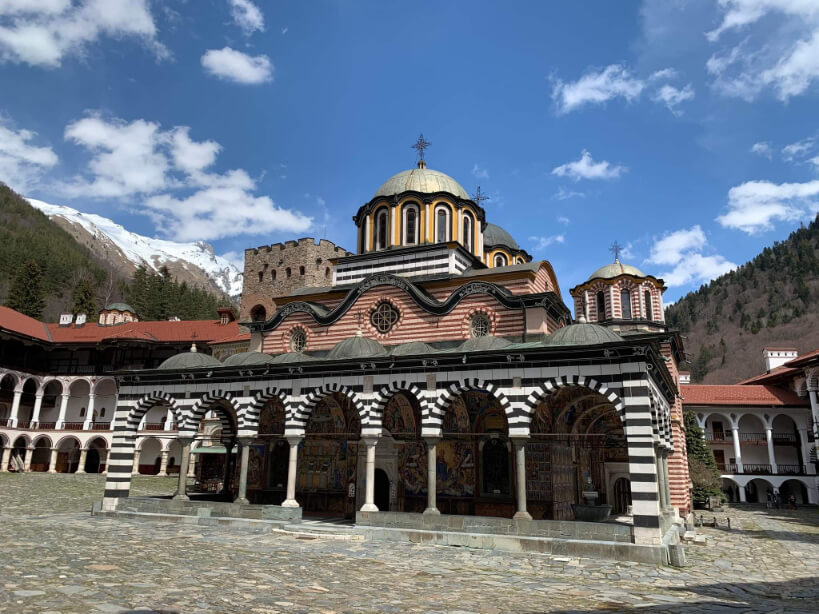
Is 7 Days Too Long in Sofia?
If you have nothing but time, you could easily spend a week or more in Sofia, just experiencing life as a local. Stay near Vitosha and try out a new daily routine.
Is Sofia Worth Visiting for an Extended Period?
It depends on what you are looking for. Sofia is a rising choice for Digital Nomads because it has great wifi, is affordable, and walkable.
If I was to spend a lot of time in Bulgaria, I would personally be more likely to settle near the Black Sea , in Burgas or Varna.
If the mountains are more your thing, Bansko is very popular in the summer with long-term travelers.
Where is Bulgaria on your list for 2022?
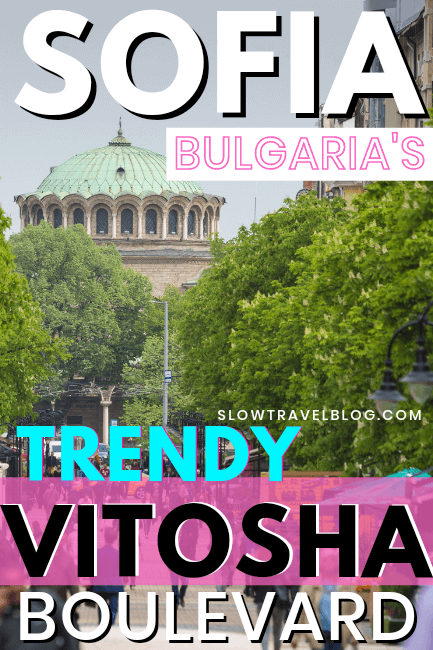
- Search Search Search …
- Search Search …

The 12 Best Things to Do in Sofia, Bulgaria
Bulgaria has many wonderful places to visit, ranging from beaches on the Black Sea to mountain ski resorts. However, the nation’s capital city of Sofia is difficult to beat in terms of history and culture. While it has some of the grit and chaos typical of large Balkan cities, there’s no denying how much there is to see and do in this rather cosmopolitan capital city. Today, we’ll talk about the best things to do in Sofia, Bulgaria plus we’ll take a look at how best to visit the city, what the major attractions are in Sofia, and what you should not miss.
THIS POST MAY CONTAIN COMPENSATED AND AFFILIATE LINKS MORE INFORMATION IN OUR DISCLAIMER
#1 THING TO DO

- Take a FREE Walking Tour in Sofia
Take a free walking tour of Sofia – explore the history, the food, and the most important buildings of the city. The tour is free, but you need to pre-book a place.
Sofia is in the west of Bulgaria and this city reflects more than 2,000 years of history. There have been Roman, Greek, Ottoman, and Soviet occupiers here. You’ll find Roman remnants, Ottoman decorations, and Christian frescoes here. The capital city is gloriously contemporary these days and has a great café culture. These are the Sofia attractions not to miss and the best ways of exploring the city.
The Best Things to Do in Sofia, Bulgaria
You’ll want to have a basic understanding of the history of Sofia (and Bulgaria) to understand her better. Sofia’s patron saint is Saint Sophia, and you’ll find her in all her glory on the coat of arms of the city. The best place to spot this is on the outside of the Sofia Hotel Balkan. But you’ll also be able to see her statue from several places around the city.
You shouldn’t miss Sofia’s Roman ruins (they’re free to see). And of course, as Bulgaria was ruled by Communists from 1946 until 1990, you can’t miss the communist architecture. It is most present in the centre of Sofia, where you’ll see The TZUM Sofia Central Department Store , the President’s Office and the Communist Party House all constructed in the post-war Socialist era.
Probably the prettiest of buildings is the National Art Gallery – which is vaguely reminiscent of an old train station. Equalling the photogenic Art Gallery is the Sofia Central Mineral Baths . The gorgeous white and yellow building combines Bulgarian, Byzantine, and Eastern Orthodox design features and was opened in 1913, closing in 1986. You can try the mineral water from the public springs on the side of the building. It tastes a little odd and does smell a little sulfurous, but then again, Sofia has been recognized for its mineral baths since the 16 th century.
So there’s your introduction. Shall we dive in and explore Sofia together?
1. Take a Free Walking Tour of Sofia
One of the best ways of exploring a city is to take a walking tour. And Sofia is no exception. The Free Sofia Tour welcomes visitors on any given day of the year. This 2-hour walking tour, led by enthusiastic local guides, covers Sofia’s most famous landmarks and I can attest to it being excellent. As a tour, it provides the ideal introduction to the city and its thousands of years of history. These free walking tours are available all year, regardless of the weather. You’ll need to reserve a place here.
You’ll start with a little history and then explore the old town, plus some of the religious aspects of Sofia. There are the Roman ruins to explore, and Sofia’s World War II history too. This tour finishes near the Alexander Nevsky Cathedral considered one of the most beautiful Orthodox buildings in the world. Like the sound of this? Reserve your place here. There’s no charge, simply tip your guide when you’re done.
2. Go Food and Wine Tasting in Sofia
This is a great way to see and taste Sofia. Combine a pleasantly paced walking tour with the opportunity to try traditional Bulgarian food and drink . You’ll spend a few hours walking around Sofia in the afternoon to see the city’s main attractions. Try the refreshing Airyan drink and the traditional Bulgarian Shopska salad. You’ll also get to sample Bulgarian wines from all over the country. You’ll not only see the square known as Small Jerusalem, but also the Rotunda St. George, St. Nedelya Church, St. Joseph Catholic Cathedral, Banya Bashi Mosque, and Sofia Synagogue.
In the historic Central Hall Market, which dates back to the early twentieth century you can try traditional sweets like baklava and tolumbichki, or stock up on fresh fruits, vegetables, nuts, and sausages. And then in a typical Bulgarian restaurant, built from four houses with a common garden, that features 19th-century architecture and furnishings that represent Bulgaria’s four corners you can try fantastic Bulgarian wines with a variety of meat mezes, such as lukanka, babek, fillet Elena, and pastarma. Want to know more? This is an excellent way to explore Sofia and the food and drink of Bulgaria.
3. Take a Free Food Tour of Sofia
You may be familiar with free walking tours, but have you heard of free food tours? Yes, where you go restaurant hopping and sample a variety of cuisines while filling your stomach with local delicacies…for free – you’ll just tip your guide when you’re finished. Balkan Bites is a great way to further explore Sofia – you’ll be taken to some of Sofia’s most interesting family-run restaurants, where you will be able to sample traditional Bulgarian cuisine. At the same time, you’ll get an understanding and knowledge about the food’s history and customs.
This really is a great tour – and comes with great restaurant recommendations for later (if you’re not full!) Enjoy every free bite and book your place now!
4. Visit the Sofia Opera
The first Sofia National Opera company was formed in 1890. Although there were plans for a new opera house building going back to the 1920s it was not until 1953 that the current opera house was completed and opened. This is now Bulgaria’s oldest and most prestigious opera house and is located in the Monumental House of BZNS [The Agrarian Union of Bulgaria], named “Alexander Stambolijsky” after its popular leader. Some of the world’s most famous opera singers, including Nicolai Ghiaurov, Ghena Dimitrova, Nicola Guselev, and Anna Tomova-Sintova, began their careers on the Sofia stage. If you’re an opera fan, you’re in for a treat, tickets cost around 40 leva. Alternatively, you can, of course, take a photo on the way past!

5. Take a Photo outside the Presidential Palace in Sofia
The president’s office is located at 2 Dondukov Blvd. in the Presidency building. The building is impressive, and although the changing of the guards is not as elaborate as in some other European capitals, it is still worth seeing. Every hour, 5 minutes before the hour, the procedure takes place, allowing you to easily combine your Sofia sightseeing with a quick photo visit to the Presidential Palace.
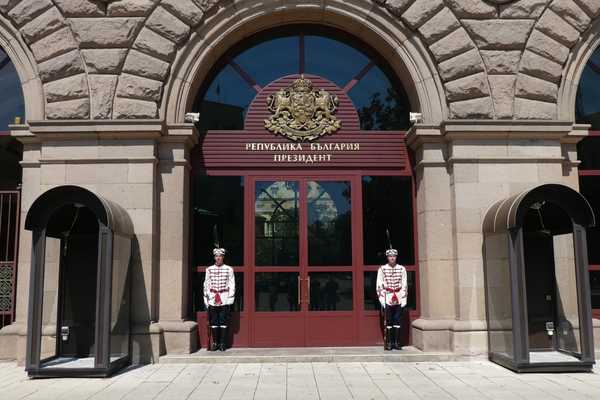
Over the centuries, the functions of the head of state in Bulgaria have been performed by a monarch, a Regency Council, and, later, collegial bodies such as the Presidium of the National Assembly and the State Council throughout the history of the modern Bulgarian state. The President of the Republic is a relatively new institution, coming into place in 1991 and it was associated with Bulgaria’s democratic transition and the reorganization of institutions that occurred as part of that transition.
6. See the Palace of Justice, Sofia
The Sofia Court House, also known as the Palace of Justice, is the building that houses all of the city’s courts. The Palace of Justice was started in 1929 and completed in 1940. The Bulgarian National Bank in the 1930s and the Largo in the 1950s were the first structures in the city to be built in this strict monumental style. Nikola Lazarov designed the initial architectural plan, which was later redesigned by Pencho Koychev.
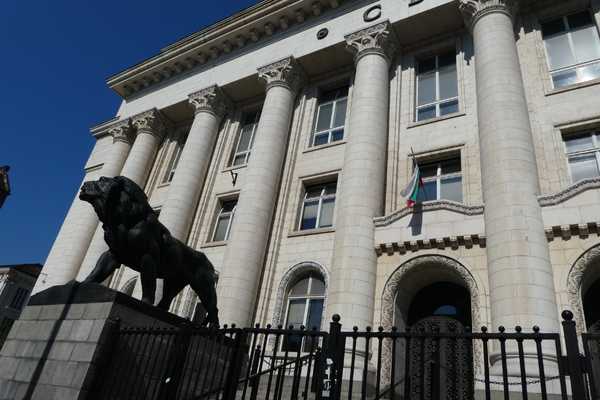
The Courthouse is constructed of white limestone and features a prominent cornice on the top floor. There are five large gates and 12 columns on the facade. The Court House is eclectic in style, combining several Classical themes, including the fourth floor with no balusters and Roman and Byzantine style decorations on the doors, windows, and corbels.
This is a popular place to meet – and it may surprise you to see how many people are just “hanging around” here. People used to sit on the stairs in front of the Palace of Justice until a few years ago, but now a new fence prohibits this, ensuring that people working and visiting the palace have easier access to the building.
7. See the Roman Ruins of Sofia
Around 29 BC, the Romans arrived in Sofia. Serdica was the name given to the settlement built around the hot mineral springs (or Serdika). Serdica had grown in importance by the third century due to its strategic location on the Via Militaris, a major road connecting the Eastern and Western Empires. There were many new buildings as the city grew. Emperor Constantine made his home here, reportedly saying, “Serdica is my Rome.”
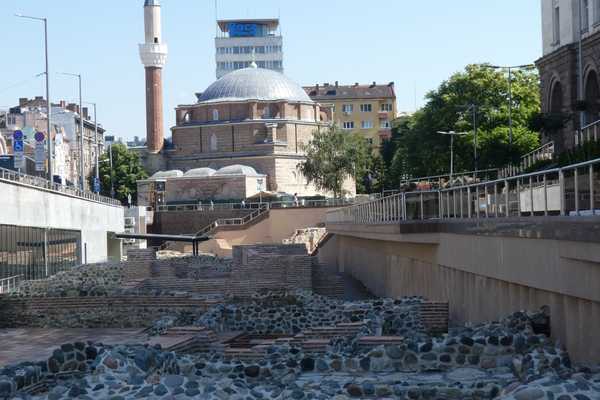
The most important Roman ruin is the Serdica complex, which spans 9,000 square meters in the Bulgarian capital and draws comparisons to Rome, and is now open to visitors. This area wasn’t discovered until 2010 when the Serdika Metro station was being built! The main Roman town was small and walled, with burial grounds and an amphitheatre on the outskirts. The majority of what you see today is within the original walled area, though the wall itself is mostly gone. You can now walk around the foundations of antique buildings, 8 (original) streets, and a Christian basilica that have been preserved. The road’s 2000-year-old pavement has been almost completely preserved. There are lots more Roman ruins to see in Sofia – and this is a guide to the best of them.
8. See the Ivan Vazov National Theatre
The National Theater, named after Bulgarian poet Ivan Vazov, is one of Sofia’s most beautiful structures. He is regarded as one of the fathers of Bulgarian revolutionary poetry, alongside Hristo Botev, making the honour of having the National Theater named after him well-deserved. Even if you are unable to attend a performance due to a lack of Bulgarian language skills, you will appreciate the beautiful façade and lively square in front of the theatre.
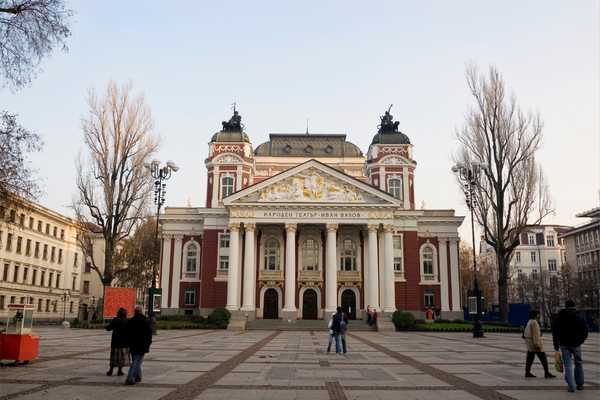
The Ivan Vazov National Theatre, the city’s most prominent theatre, is another important landmark in Sofia’s sprawling landscape. The theatre, which opened in 1904, hosted performances and a theatrical school until 1943 when it was severely damaged during the bombing of Sofia during World War II.
The National Theatre is an iconic building in Sofia and it appears on some Bulgarian banknotes too.
9. Explore the Museums of Sofia
Sofia has nearly 30 museums where you can see the majority of Bulgaria’s national treasures and learn about the country’s ups and downs. Here is a list of the best museums to visit in Sofia if you only have a limited amount of time.
Sofia History Museum
The National History Museum is one of the Balkan Peninsula’s largest and most comprehensive history museums. It houses over 700,000 cultural monuments that span the history of Bulgarian lands from 8,000 years ago to the present day. Only 10% of these priceless artefacts and monuments are on display in the museum halls.
Sofia’s National History Museum was founded in 1973, and its first exhibition was held in the Sofia Court building in 1984 to commemorate Bulgaria’s 1300th anniversary as a state. Since the year 2000, the museum has been housed in the former government residence building No. 1 in Sofia’s Boyana neighbourhood.
This museum will take you on a journey through the history of Bulgaria’s capital. You can ride a tram from the turn of the century, see a king’s carriage, and visit a neolithic dwelling. It also allows you to explore interactive photo albums that depict past fashion and notable structures.
- Sofia National History Museum Address: 1 Banski Sq, 1000 Sofia, Bulgaria
- National History Museum Opening Times: Winter Working Hours (09:30 to 18:00), Summer Working Hours (09:30 to 19:00)
- Entrance fee for National History Museum: Entrance fee for individual visitors – 10.00 lv. For students – 2.00 lv. For visitors with children – 4.00 lv., for children over 7 years – 2.00 lv.

National Archaeology Museum of Sofia
You should come here for the building alone. It is magnificent! The National Institute and Museum of Archaeology (National Institute of Archaeology with Museum in Bulgarian Academy of Sciences) is dedicated to the culture of the tribes and peoples who inhabited present-day Bulgaria from antiquity to the 18th century.
The museum is an archaeological museum housed in the former Ottoman mosque in Sofia’s largest and oldest building. The Archaeology Museum houses prehistoric artefacts dating from 1,600,000 BC to 1,600 BC, as well as grave inventory and other treasures dating from the Late Bronze Age to late Antiquity, as well as artefacts from ancient Thrace, Greece, and Rome dating from the late Middle Ages.
- Sofia National Institute and Museum of Archaeology Address: 2 Saborna Str., Sofia 1000, Bulgaria
- Sofia National Institute and Museum of Archaeology Opening Times : 10:00 am – 06:00 pm
- Entrance fee for Sofia National Institute and Museum of Archaeology: Adults (10 lv), Students (2 lv)
Sofia’s Red Flat Museum
Entering the Red Flat is like stepping back in time to 1980s Communist Bulgaria. The museum is designed to let you learn about Bulgarian life during the Cold War. The Red Flat museum is like visiting the home of a regular Bulgarian family. You’ll find how they lived, ate, drank, worked and played. It’s fun!
- Sofia’s Red Flat Museum Address: 24 Ivan Denkoglu street, Sofia
- Sofia’s Red Flat Museum Opening Times: Every day from 10:30-19:30
- Entrance fee for Sofia’s Red Flat Museum: 18 leva
Museum of Military History, Sofia
Sofia’s Museum of Military History was founded in 1916 and has amassed nearly a million pieces of Bulgarian and European military history in the last 100 years. The exhibition is divided into three sections: outdoor, permanent, and miscellaneous and it purports to be one of the world’s best military museums.
There are 250 pieces of military artillery, aviation, and marine equipment, including missiles and missile launchers, on display outside. Permanent collections include uniforms, the Balkan Wars, the Russo-Turkish wars, WWI and WWII, as well as photos, documents, and prints related to all of these.
- Sofia’s Museum of Military History Address: Ulitsa Cherkovna 92, Sofia
- Sofia’s Museum of Military History Opening Times: Closed every Monday and Tuesday, Open from 10:00-18:00 every Wednesday up to Sunday
- Entrance fee for Sofia’s Museum of Military History: Regular Admission (8 leva), Students (2 leva), Children and Military are FREE
The National Gallery of Bulgaria in Sofia
The National Gallery is housed in a rather glorious building, that I mentioned earlier, which looks like an old railway station. The Gallery, which opened in 1948 and houses over 41,000 paintings, sculptures, graphics, decorative, and contemporary artworks, is Bulgaria’s largest art museum. It houses the most comprehensive collection of Christian art from Bulgarian lands (4th–19th centuries), as well as exemplars of European art (15th–20th centuries) and one-of-a-kind artworks from Asia, Africa, and America.
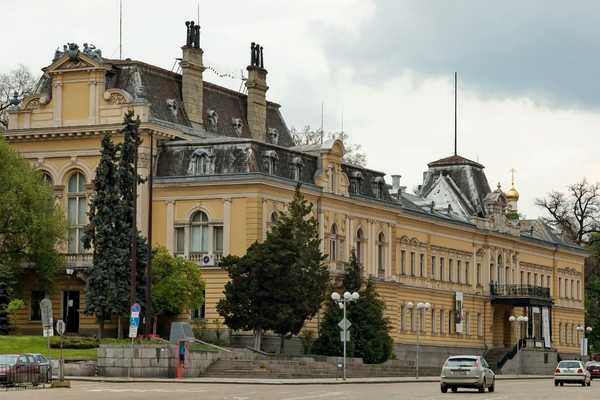
- The National Gallery of Bulgaria in Sofia Address: 1, 19th February St., St Alexander Nevsky Sq., Sofia 1000
- The National Gallery of Bulgaria in Sofia Opening Times: Closed on Monday, Open from Tuesday up to Sunday from 10:00 up to 18:00
- Entrance fee for The National Gallery of Bulgaria in Sofia: Regular Admission (10 leva), Students (5 leva)
10. Explore the Religious Landscape of Sofia
Here in Sofia, you’ll find our patron Saint, Sophia presiding over an incredible mix of religions – there’s a Catholic Church and a Jewish Synagogue both side by side with an Islamic Mosque and a Bulgarian Orthodox Church. It’s an incredible mix. Make sure you stop by all of them.
Alexander Nevsky Cathedral
This is one of the world’s largest orthodox cathedrals, built in the neo-byzantine style. For a variety of reasons, the cathedral is at the top of every visitor’s must-see list. The first is its enormous size. It has a capacity of 10,000 people! It also has a lot of gold plating on the inside, including the dome and bell towers, which makes it sparkle both day and night. It also houses incredible works of art and exudes pure luxury, with the finest Italian marble even used on the walls. The cathedral is dedicated to the Russian soldiers who died during the Russo-Turkish War of 1877-78.

- Alexander Nevsky Cathedral Address: Ploshtad Aleksander Nevski, Sofia, Bulgaria
- Alexander Nevsky Cathedral Opening Times: Open Daily from 07:00 up to 18:00.
- Entrance fee for Alexander Nevsky Cathedral: FREE
St Nicholas the Miracle Maker – the Russian Church of Sofia
The beautiful gold domes of the so-called ‘prettiest church in Sofia’ can be seen walking down ‘Tsar Osvoboditel’ street. Its high dome, surrounded by four smaller domes, all made of gold, blends in perfectly with the church’s green majolica tile roof.
The Russian church, also known as St Nicholas the Miracle-Maker, was built from 1912 to 1914, this extraordinary white and green structure was designed by Russian architect Preobrajenski and built by Russian workers, some of whom had previously worked on the Alexander Nevsky Cathedral. The exterior of St Nicholas the Miracle-Maker church is far more attractive than the interior, which is small and dim. Its frescoes, however, are worth seeing. The frescoes were painted in the Novgorod icon school’s style.
The crypt, located to the left of the main entrance, is more popular than the church itself. The former Bishop Serafin, who died in 1950, is buried here. Locals leave handwritten messages in a box to the right of the tomb. Serafin was never canonized, but he is revered as a saint who is said to grant wishes and prayers.
- St Nicholas the Miracle-Maker Address: 3 Tzar Osvoboditel Str. Sofia
- St Nicholas the Miracle-Maker Opening Times: Opens Daily from 07:30 up to 18:00
- Entrance fee for St Nicholas the Miracle-Maker: FREE
The Basilica of Hagia Sophia
The St. Sofia Church is located in the centre of Sofia. The church was originally dedicated to God’s wisdom, just like its namesake, Hagia Sophia in Istanbul. It is one of Sofia’s oldest churches, and its history is intertwined with that of the city. This is the church that gave the city her name and it’s very close to the Nevsky Cathedral. This church is very simple compared to the cathedral. There have been five churches on this site, all destroyed by invading forces. The current basilica, with its two east towers and one tower-cupola, was built in the middle of the sixth century during the reign of Byzantine Emperor Justinian (527-565).
- The Basilica of Hagia Sophia Address: 1000 Sofia Center, Sofia, Bulgaria
- The Basilica of Hagia Sophia Opening Times: Opens Daily from 07:00 up to 18:00
- Entrance fee for The Basilica of Hagia Sophia: 10 leva
The Bania Bashi Mosque, Sofia
There were once 70 mosques in Sofia, but only the Banya Bashi Mosque is still operational today. It was designed in 1576 by Mimar Sinan, the greatest of all Ottoman architects, who also designed the Sultan Selim Mosque in Edirne and Istanbul’s Blue Mosque. This lovely mosque is a typical Ottoman architectural monument that adds colour to the Sofia city centre. The name Banya Bashi comes from the nearby Tsentralnata Banya, which means ‘a lot of baths’ (Central Baths). The Bulgarian word for a bath is “banya.”.
The exterior isn’t particularly impressive, but the interior is breathtaking. The mihrab and the eastern wall are covered in aquamarine tiles with calligraphy, citing texts from the Koran, and a large tile with an image of the Kaaba, the mosque in Mecca to which all Muslims should make the hajj or pilgrimage at least once in their lifetime. The domed ceiling, which was restored to its original design after the fall of Communism, is a feature of the mosque. It’s also adorned with beautiful calligraphy. The dome measures 15 meters in diameter, and the structure is Bulgaria’s only remaining example of a domed roof on a cubic base. Next door, there are the ruins of a hammam.
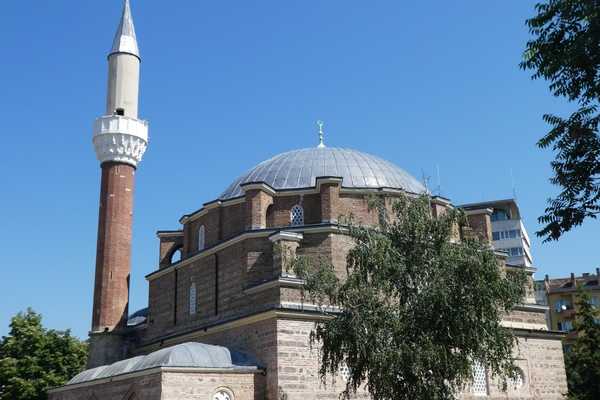
There is no entrance fee to the Banya Bashi mosque because it is not officially open as a tourist attraction. Outside of prayer times, visitors, including women, are welcome if they are dressed modestly. Remember to remove your shoes before entering. You can take photos inside the mosque, but it’s best to ask first because someone might be praying at the time of your visit.
- The Bania Bashi Mosque Address: 2 Knyaginya Maria Louise Blvd.
- The Bania Bashi Mosque Opening Times: Opens Daily from 05:00 up to 20:00
- Entrance fee for The Bania Bashi Mosque: FREE
Sofia’s Synagogue
The Sofia Central Synagogue is rightfully regarded as the pride of Bulgarian Jewry. For nearly a century, it has served as a symbol for Bulgaria’s Jewish community. It is Europe’s second most populous Sephardic (Spanish-Jewish) synagogue. As Sofia’s only Jewish place of worship, the Central Synagogue, is along Ekzarch Josif Street and right next to the Central Market Hall. It is also known as Halite. The synagogue was designed by Austrian architect Gruenanger between 1905 and 1909 as a smaller replica of the Sephardic synagogue in Vienna (which was destroyed during WWII).
Bulgaria’s can proudly claim that while today there are less than 10,000 Jews living in Bulgaria, none were deported during the Holocaust.

The Synagogue is located in the “Square of Tolerance.” The mosque “Banya Bashi” is only 60 meters away, Saint Joseph’s Catholic cathedral is 300 meters away, and St. Nedelya Orthodox church is 500 meters away. Sofia sets a great example for the rest of the world in terms of how all major religions can coexist with one another.
- Sofia Central Synagogue Address: 16 Exarh Joseph Str., Sofia
- Sofia Central Synagogue Opening Times: Open from Monday to Friday from 9:00 till 13:30 and from 14:00 till 16.30
- Entrance fee for Sofia Central Synagogue: The entrance fee of 4 leva is symbolic (plus people under 18 go in for free) and the guided tour (which comes in several languages) is included in the price.
Boyana Church, Sofia
Boyana Church, also known as the Church of Saint Nicholas and Saint Panteleimon, is located southwest of Sofia, Bulgaria. The church, which is known for its medieval frescoes, is a UNESCO-protected cultural monument that was inscribed on the World Heritage List in 1979. It is most often visited on a day trip to Rila Monastery , but you can also take buses #64, #107 and the minibus #21 from the centre of Sofia to visit. Read all about Rila Monastery here.
The structure of Boyana Church can be broken down into several stages. The old church is a small cross-domed church built between the 10th and 11th centuries. In the 12th century, it was renovated. A narthex and a small upper-floor chapel were added to the Old Church’s western facade in the 13th century. A two-story anteroom dedicated to Saint Nicholas and Saint Panteleimon was built in the mid-nineteenth century. Boyana Church was active until 1954 when it was closed for conservation, being partially reopened in 2006 . The frescoes, date from 1259 and reflect the Tarnovo School of Painting’s 13th-century traditions.
- Boyana Church Address: 1-3 Boyansko Ezero St. Sofia
- Boyana Church Opening Times: April 1st up to October 31st (09:30 – 17:30), November 1st up to March 31st (09:00 – 17:00)
- Entrance fee for Boyana Church : Adults (10 leva), Students (2 leva), Free for disabled people, children under school age, and for all visitors, every last Monday of the month, after 3 PM.
11. Enjoy the City Garden in Sofia
Sofia’s oldest and most central public garden is the City Garden (in Bulgarian: Gradska gradina). It is situated between the National Gallery, the Ivan Vazov National Theatre, the Sofia City Art Gallery, and the Bulgarian Parliament. The City Garden is now not only a popular hangout but also a favourite gathering place for amateur chess players. You’ll also find the famous fountain with a dancing woman here.
12. Climb a Mountain in Sofia – Visit Mount Vitosha
Vitosha Mountain, with its highest peak Cherni Vrah (2290m), is Bulgaria’s fourth highest mountain, and is located near Sofia. Almost every point in the city has a view of the mountain and it’s easy to get here. Vitosha is the Balkans’ oldest national park. It is known for its Zlatnite Mostove, the direct translation of which is “Golden Bridges” – and they’re actually rivers of stone. (huge boulders of stone). Duhlata, Bulgaria’s longest cave (17.5 km), is also located here.
This is a great way to visit Vitosha
There is skiing here from January to March. Vitosha is one of four ski resorts in Bulgaria – Bansko is the biggest, there’s also Pamporovo and Borovets.
There are several public transportation options to get to Vitosha Mountain from Sofia, depending on your destination. Most of the time, you’ll have to take the metro and then the bus (or the bus and then the gondola lift). Taking a bus to Simeonovski Gondola Lift and then taking the lift to Aleko Hut is the most popular method of accessing the mountain. Cherni Vrah, Kamen Del, and other peaks can be climbed from there. Alternatively, you can visit Vitosha from Sofia this way.
Map of Things to do in Sofia
You can also see this map here.
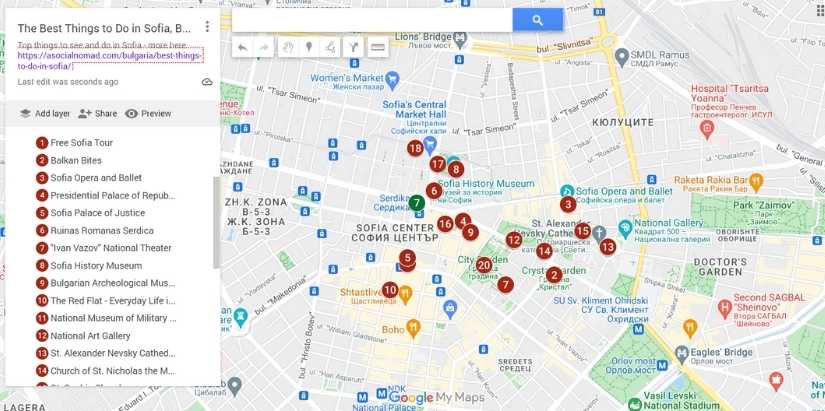
Places to visit Near Sofia
If you plan on making your base in Sofia, then it’s a great location to explore other places around Bulgaria. Our guide to the best day trips from Sofia is here.
Where to Stay in Sofia, Bulgaria
There are a host of places to stay in Sofia, Bulgaria – here’s our pick of the luxury places to stay in Sofia,, mid-range places to stay in Sofia, and budget accommodation in Sofia, Bulgaria.
Impresamente Art Hotel, Sofia : The Impresamente Art Hotel is located on Vincent van Gogh Street in Sofia, a great location surrounded by Sofia’s top attractions. This impressionist art-inspired hotel in Sofia features rooms with satellite flat-screen TV, a seating area, a safety deposit box, private bathrooms with shower, slippers, and a hairdryer, a desk. You’ll be able to enjoy a continental breakfast and free WiFi. Sofia’s Impresamente Art Hotel also has a sun terrace and a garden plus, a bar, and table tennis. The Impresamente Art Hotel in Sofia is a fabulous way place to relax in Sofia in stunning surroundings. See room rates for the Impresamente Art Hotel and availability here .
Rosslyn Central Park Hotel, Sofia : The Rosslyn Central Park in Sofia enjoys an excellent location right at the heart of Sofia. This four-star Sofia accommodation has rooms equipped with individually controlled air-conditioning, sound-proofing, a flat-screen TV, blackout curtains, a mini-bar, a private bathroom with a bath/shower and a hairdryer, and an in-room safe. Sofia’s Rosslyn Central Park Hotel also offers a lush dining experience at the 106 Restaurant and a relaxed drinking atmosphere at the Lobby Bar. The Rosslyn Park has outdoor furniture, to truly enjoy the view and, of course, there’s also free WiFi. The Rosslyn Central Park Hotel is a fantastic mid-range Sofia hotel. Read more reviews and room rates and see Rosslyn Central Park Hotel availability here.
Hotel Calipso, Sofia : Sofia’s Hotel Calipso is found in a great location, a short distance from central Sofia. Hotel Calipso’s rooms feature a flat-screen TV with satellite channels, a private bathroom with shower, hairdryer, free toiletries, and air-conditioning. You can also enjoy in-room breakfast, an a la carte meal at their restaurant, and snacks from their snack bar. The Hotel Calipso in Sofia is an ideal hotel for those looking for budget-friendly accommodation in Sofia. Check rates and availability here.
How to Get to Sofia
Bulgaria is bordered on the north by Romania, on the west by Serbia and North Macedonia, and on the south by Greece and Turkey. The neighbours have relatively good road and rail connections (the overnight train to Istanbul has just reopened and is fabulous!), and overland travel is popular, particularly during the summer months. Details of going from Sofia (and Bansko) to Istanbul are here.
Flights to Sofia
The international airport in Sofia is popular, but be sure to check whether you’re arriving and departing from Terminal 1 or 2, as while there is a bus service to connect the two terminals at peak times, it is NOT an easily walkable distance! You can check flight options to Sofia here.
Direct flights from other European cities to Sofia are popular, and budget airlines such as Wizz Air, EasyJet, and RyanAir mean that not only has Sofia’s popularity as a short-break destination increased noticeably but also that more and more residents are taking advantage of the opportunity to travel. You can also fly internationally via nearby Istanbul (Turkish Airlines). Traveling with Qatar Airways via Doha, Lufthansa via Frankfurt/Munich, or Austrian via Vienna.
Bulgaria Air is the national carrier, and while the fleet is aging and the service has never been great, there are a few advantages: you still get food on their flights, and passengers with small children are automatically given priority assistance.
Getting into Sofia City Centre
Sofia has a well-developed infrastructure and public transportation system, so getting around should be simple. Sofia has a well-developed public transportation system that includes buses, trolleys, trams, and the metro, which is run by Sofia Urban Mobility Centre. Route maps and timetables are available online. All tickets (except shuttles) cost around 1.6 BGN (0.82€) and can be purchased at street kiosks, vending machines, or directly from the driver.
The airport is on the outskirts of the city of Sofia and the metro goes all the way out to the airport (change at Serdika station) and is very easy to navigate. The metro connects the NEW terminal (Terminal 2) with the city centre and it takes just 30 minutes to get to and from the airport.
In Sofia, there are several taxi companies, and taxis in Bulgaria are relatively inexpensive in relation to Western Europe. It is best to order a taxi over the phone or online. OK Taxi Sofia (OK Supertrans) and Panda Taxi Sofia are two official taxi companies. Always check the fares displayed on the front and side windows, as well as whether the taximeter has been turned on.
Alternatively, pre-book a transfer and be sure of your costs.
Buses to Sofia
Sofia is the main transport hub for Bulgaria and there are two main bus stations in the city. The Central Sofia Bus station is where most of the international buses run to and from. This is also where the main railway station is and where most trams run to and from. You can check most schedules for buses to and from Sofia here .
For online booking of buses to and from Sofia, you can check availability and make bookings here.
Ovcha Kupal is the second bus station and where some domestic buses run to and from.
Trains to Sofia
From here, international trains travel to Greece, Serbia, Romania, and other destinations. Domestic trains also run from here. They move slowly, though a ‘fast’ train to Thessaloniki, Greece, has recently been introduced, taking about 5 hours (you can drive there in less!). You can check schedules for Sofia trains here .
Where Else to Explore in Bulgaria
Don’t leave Bulgaria without checking out some of these other fabulous places.
- The best things to see and do in Sofia (Bulgaria’s Capital City)
- The best things to see and do in Plovdiv
- Veliko Tarnovo – Bulgaria’s Original Capital City
- Bulgaria’s Ski Capital, Bansko – in Summer
- The Annual Jazz Festival in Bansko
- The Ex-Dancing Bear Park at Belitsa
- Take a ride on the highest railway in the Balkans – from Bansko to Septemvri !
- Visit Bulgaria’s most beautiful building – UNESCO World Heritage Rila Monastery
Bulgaria Trip Planning Essentials
- Get great value, and easy travel insurance for Bulgaria with Civitatis
- Get online immediately with an eSIM
- Install a VPN BEFORE you travel to Bulgaria > discount coupon here
- Arrange your airport transfer in Bulgaria with Welcome Pickups.
- Make sure you can charge your electronics – here’s our guide to plug adapters in Bulgaria
- Visit Rila Monastery + Boyana Church
- Explore Veliko Tarnovo – Bulgaria’s Original Capital City
- Go wine tasting in Melnik – Bulgaria’s wine capital
- Explore Buzludzha aka the UFO Monument
- Spend a day in GORGEOUS Plovdiv
- Book Buses + Transfers in Bulgaria with Bookaway
- Rent a Car in Bulgaria with Discover Cars
- Find the right accommodation for you via Booking.com
Final Words on the Best Things to do in Sofia, Bulgaria
Bulgaria’s capital city has managed to retain a certain grittiness while displaying a somewhat cosmopolitan flair (it’s changed fundamentally since I first visited more than 15 years ago!). The city is historic, pretty in places, with glorious outside spaces, and stunning buildings, especially the Roman ruins and the religious buildings. It is a great place to learn about the history of Bulgaria and it is well worth exploring and spending several days here. Sofia is a particularly affordable capital to come and spend time in. It is easy to get to Sofia and around her. It’s a great place to stay and eat, and quite inexpensive. It’s great in winter – skiing and snow sports at Vitosha, the weather in Spring is lovely and the free festivals are a great reason to come, Autumn sees cooler weather and is a very pleasant time to visit. What are you waiting for? Come on over!
We receive a fee when you get a quote from World Nomads using our affiliate links. We do not represent World Nomads. This is not a recommendation to buy travel insurance.
ASocialNomad is a participant in the Amazon Services LLC Associates Program, an affiliate advertising program designed to provide a means for sites to earn advertising fees by advertising and linking to amazon.com, amazon.co.uk, and amazon.ca. Amazon and the Amazon logo are trademarks of Amazon.com, Inc. or its affiliates. As an Amazon Associate, I earn from qualifying purchases .
Sarah Carter
Leave a comment cancel reply.
Your email address will not be published. Required fields are marked *
Save my name, email, and website in this browser for the next time I comment.
One thought on “ The 12 Best Things to Do in Sofia, Bulgaria ”
- 1 comment
This is the most detailed guide about Sofia. It’s very helpful and informative for tourists. If you don’t mind, I will share it on our social media channels so our clients can read it.
Privacy Overview
- Work with me
- Privacy policy

- Years in review
- United Kingdom
- Bosnia & Herzegovina
- North Macedonia
- Philippines
- South Korea
- South Africa
- Africa Overlanding
- Central America
- New Zealand
- Solo Travel
- Budget travel
- Travel tips
- Travel itineraries
- Hidden gems
- Bucket list
- Travel resources
- Digital nomadism
- Blogging tips
- Start a travel blog
Weekend In Sofia Itinerary: The Perfect 2 Days in Sofia!
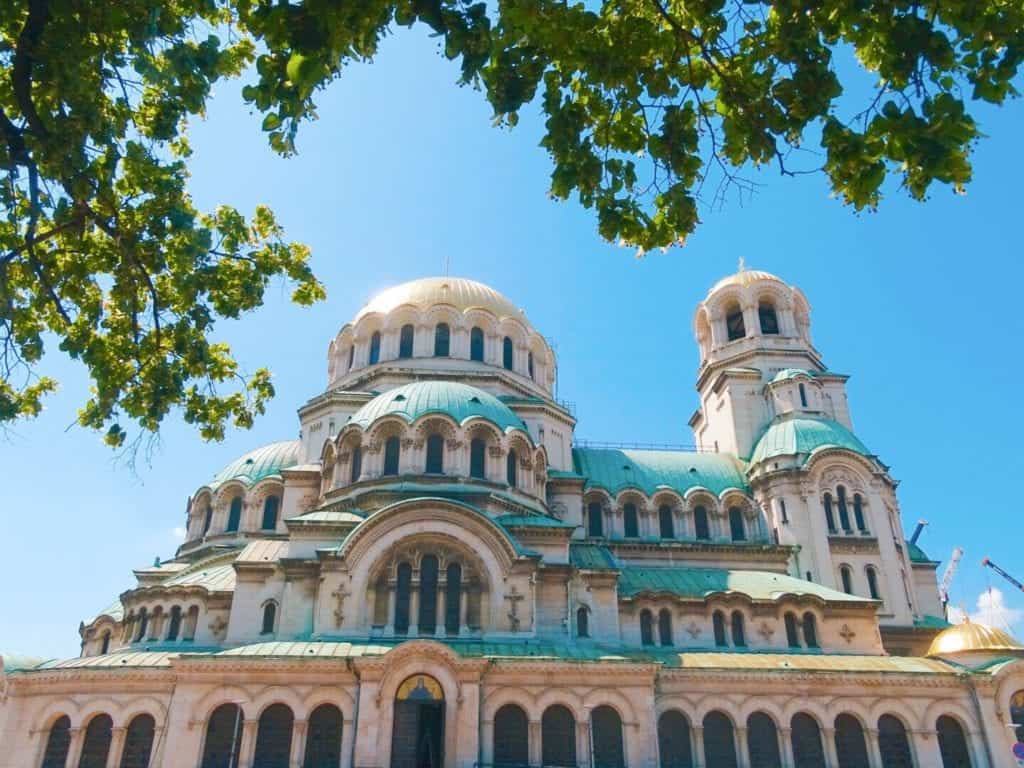
Table of Contents
This post may contain affiliate links to things like tours, hotels, Amazon associates and products. These help me earn a small commission at no additional charge to you.
I recently spent 2 days in Sofia, somewhere I didn’t have huge expectations for but totally blew me away. For that reason, I want to share my weekend in Sofia itinerary so you can enjoy it, too!
My main reason for visiting Sofia? The flight home at the end of my month backpacking Eastern Europe was £30 cheaper than it was Romania, where I’d been for 2 weeks previously. I’d been so excited for Romania and not thought much about Bulgaria but actually, I think I preferred Bulgaria. Sofia is a lovely underrated city and the sights in the surrounding countryside are absolutely stunning. There are plenty of hiking trails around Sofia , not to mention excellent cafes, restaurants, religious sites and museums. Throw in tasty food, affordable prices and friendly locals – what else could you need from your city break?
SOFIA ESSENTIALS Accommodation: Booking.com // Hostelworld Tours & activities: GetYourGuide // EatWith Getting there: Flight ( Skyscanner ), train ( RailEurope ), bus ( Flixbus ) Sofia airport to accommodation transfer
In this guide, I’ll sum up the best things to do in Sofia and share my 2 day Sofia itinerary. As a foodie, I’ll also share my favourite dishes, cafes and restaurants, too.
Check out my other Bulgaria blogs:
- How to visit 7 Rila Lakes from Sofia
- A trip to Rila Monastery from Sofia
Getting to Sofia
Sofia seems to be one of Europe’s most affordable cities to fly in and out of: my flight to London was only £25. I use Skyscanner to find the best flight deals. The journey from Sofia airport to the city centre is also a bargain at 1.60 lev , less than €1. If you’re arriving late or want the convenience, book a Sofia airport to accommodation transfer in advance.
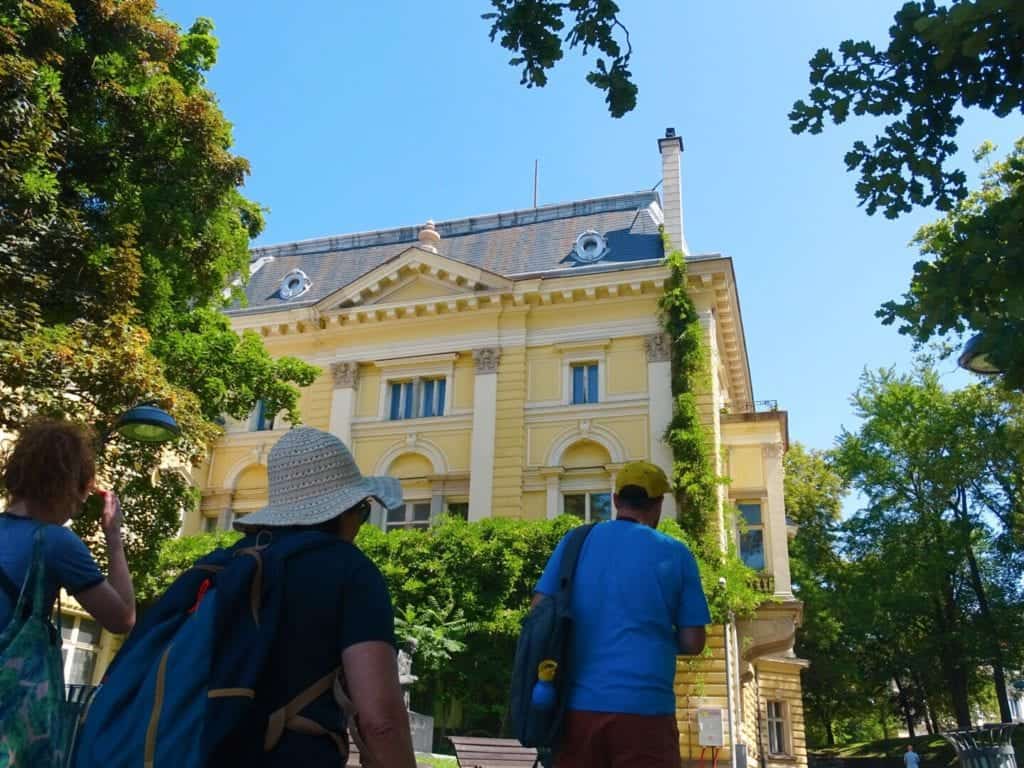
Bus: If you’re coming overland from Bucharest like I was, you can catch a seven-hour FlixBus for around €15. You can also catch a bus to Skopje , North Macedonia or Thessaloniki , Greece. Train: A train runs from Sofia to destinations including Istanbul and Belgrade. Use RailEurope to book train tickets in Europe. To Istanbul: You can travel between Sofia and Istanbul in 11 hours. Book your train at the station or your bus here . Europe transport tip – use Omio to compare the price and duration of flights, buses and trains between any two destinations.
Where to stay in Sofia
In Sofia I stayed in one of my favourite hostels ever, Hostel Mostel . Not only do you get a free all-you-can-eat breakfast , you also get a free dinner every night. Each evening there was a choice of three dishes: either a curry, pasta or an egg and potato dish, washed down with a beer. Bearing in mind that beds start from €9, it’s a major bargain.
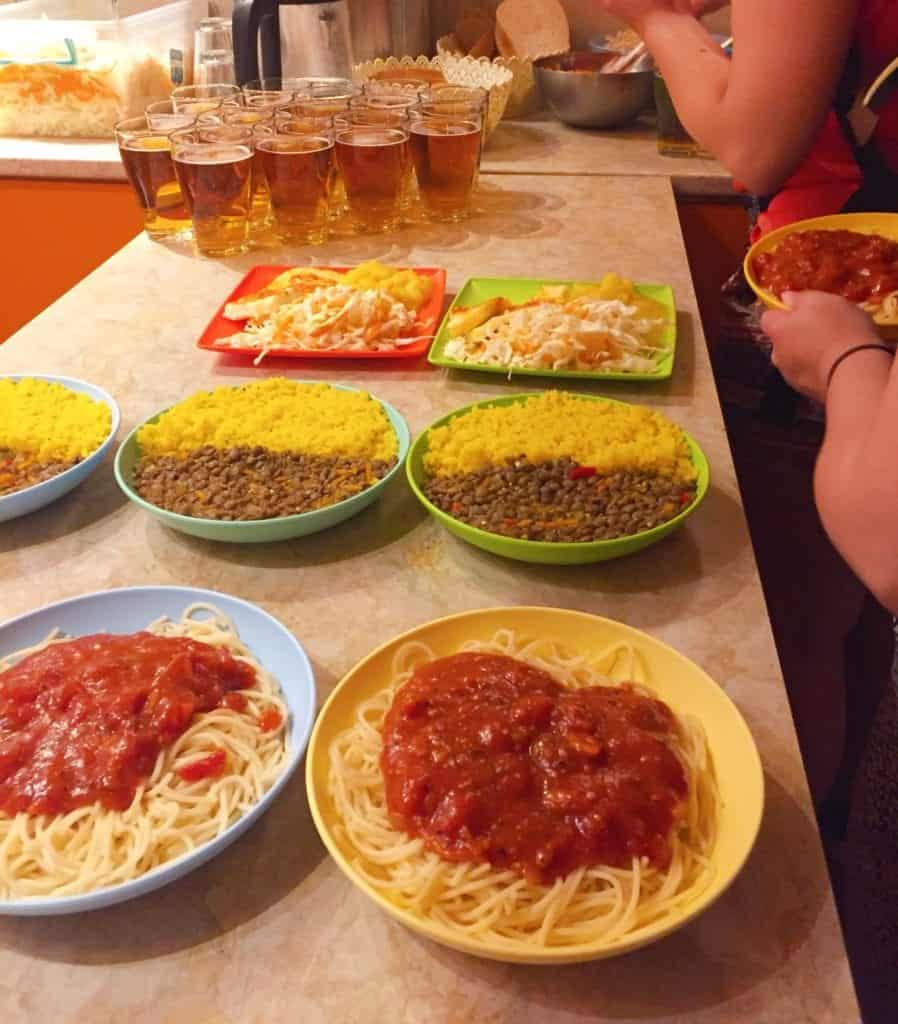
At Hostel Mostel, there are dorms, single and double rooms. All the dorm beds have their own privacy curtain, lamp and charger socket which I find makes such a difference to a hostel stay. The shared meals made it really easy to meet other travellers , plus there’s a pub crawl that runs every evening at 10pm . It’s a great place to stay if you’re looking to make friends while travelling solo .
Hotels in Sofia
I get it. Not everyone loves a hostel. Some of the best hotels and apartments in Sofia include: Central Hotel Sofia : a luxurious place to stay in the centre of the city, perfectly placed for walking between the main attractions. There are double and twin rooms, many with seating areas and mini kitchen areas, as well as ensuite bathrooms, a generous buffet breakfast, hot tubs and a spa. Check availability from €90 per night . Art ‘Otel : If you’d prefer a more of a quirky hotel in central Sofia, this converted period property has modern art everywhere, as well as a garden rooftop balcony where you can relax and look over the city. Breakfast is included. Check availability from €65 per night . Bohemian Lux Apartment: This private apartment in the heart of town has Wi-Fi, living area, balcony, breakfast, toiletries, security box and washing machine, all decorated in Bohemian grandeur style. Check availability from €60 USD night . Apartment Audrey by SofiaSpot : This modern apartment has a bedroom, living room, kitchen, dishwasher, bathroom, balcony and flat-screen TV, located just a short walk from Saint Alexandar Nevski Cathedral. Check availability from €60 per night .
Things to do in Sofia
I met a handful of travellers in Bucharest who said there wasn’t much to do in Sofia, but I disagree. Perhaps because of their comments, my expectations were fairly low. Sure, it’s a relatively small city and there aren’t hundreds of activities but I really enjoyed myself. There’s more than enough to do during a weekend in Sofia, plus so many cool cafes and places to hang out. These are my top things to do in Sofia. Keep reading for my 2 day Sofia itinerary.
Alexander Nevsky Cathedral
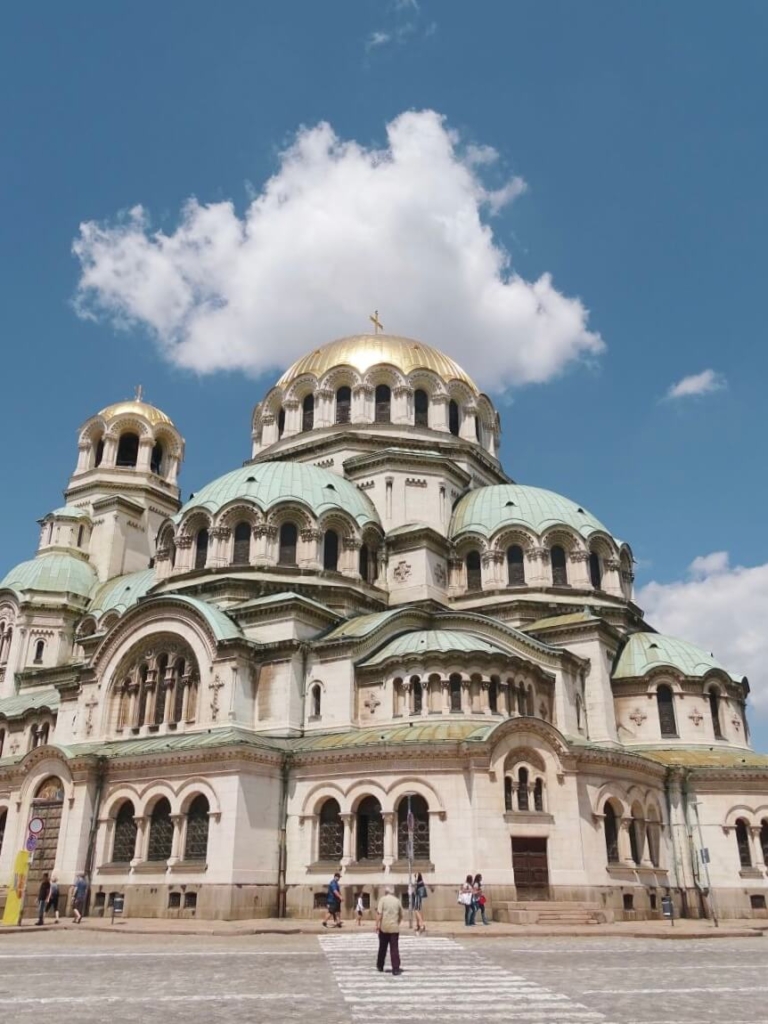
When you Google ‘Sofia’, the first image to come up is Alexander Nevsky Cathedral. It’s become a symbol for the city and I’ll admit I was very excited to see it myself. It was built to honour the Russian soldiers who helped liberate Bulgaria from the Ottomans who had ruled the city for 500 years. This must have been an incredible period of history but the Russians probably didn’t stay high in Bulgarian opinions once the communist era began. This enormous cathedral was pieced together with materials from everywhere: marble from Munich , metal from Berlin and mosaics from Venice. Word has it that the building can hold 10,000 people at one time. Entrance is free , thankfully because I didn’t find it nearly as impressive from the inside as the outside.
Free food tour with Balkan Bites
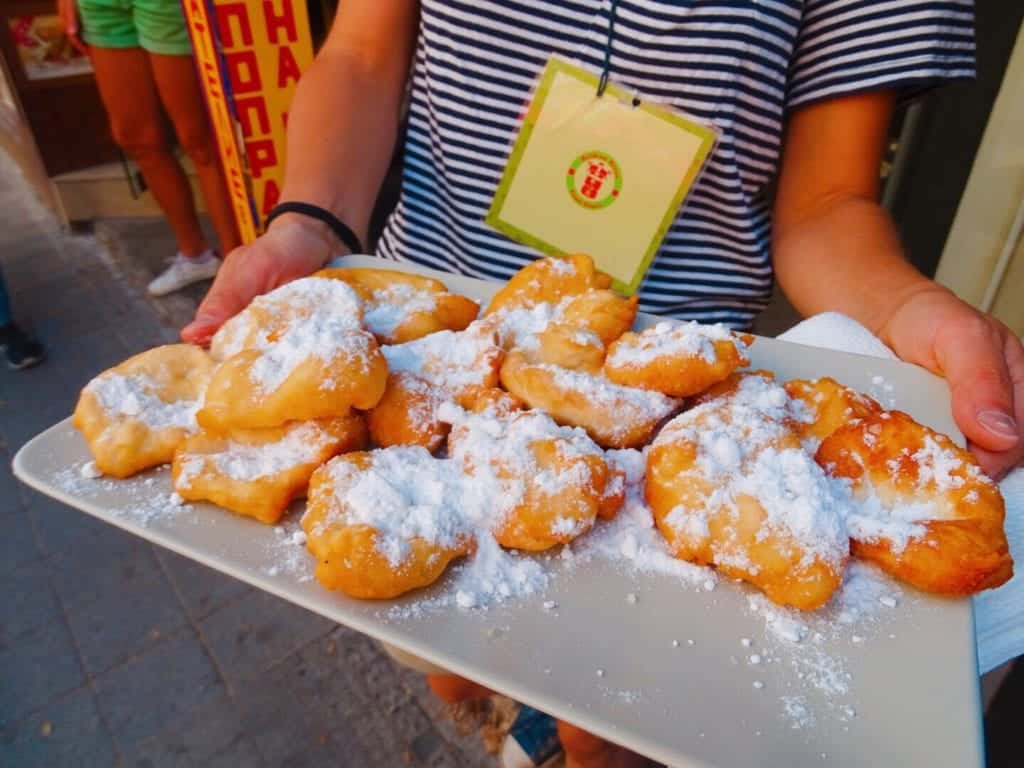
A must for a weekend in Sofia is the Balkan Bites free food tour. Yep, you heard that right, an actual free food tour with dishes included! How can this be? The Balkan Bites concept is an ingenious one: they provide the tour and share local knowledge while the cafes and restaurants provide free platters and tasters of their food as a method of advertising. It certainly works since I’ve been promoting them all over Instagram and via word of mouth. The tour lasts 2 hours and visits a gorgeous cafe, wine bar, sit-down Bulgarian restaurant and an authentic bakery. Our guide was fantastic, filling us in on the history of the dishes we were trying. While the tour is free, you’re encouraged to give a tip if you enjoy it.
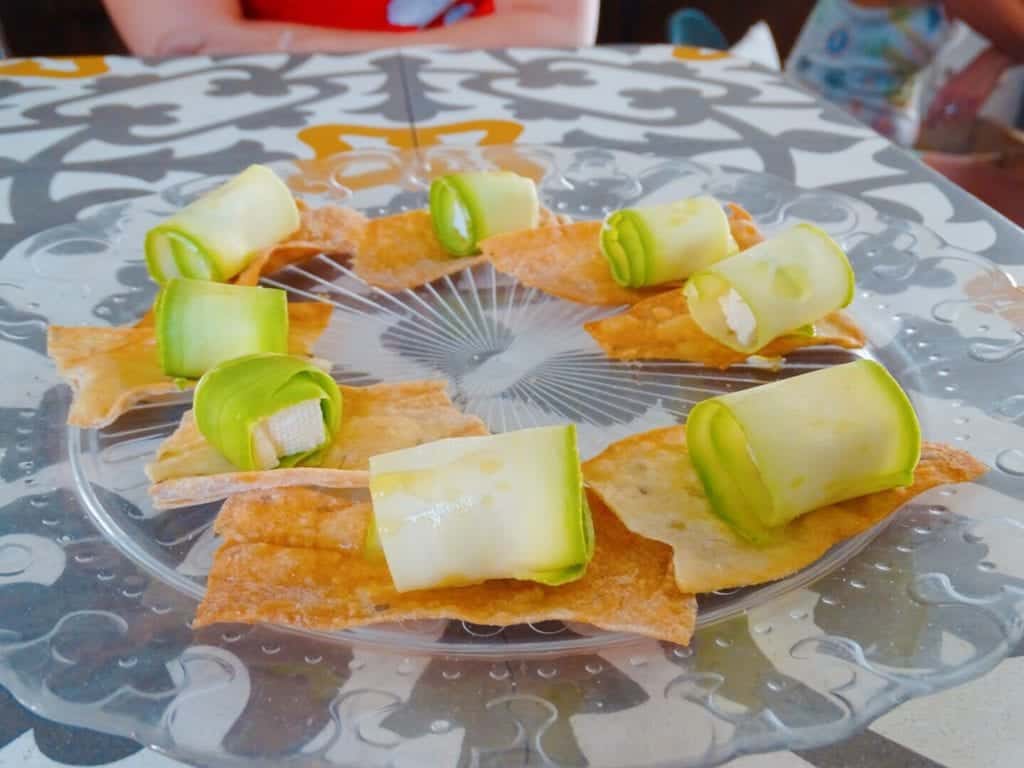
Tip – book a place online via Facebook or arrive 20 minutes early at the meeting point. Some people were arriving 5 minutes before and getting turned away as the tour was full which, quite frankly, would suck if you had a tight Sofia itinerary and couldn’t try again. The tour runs at 2pm daily, departing from the Crystal Garden beside the giant head statue.
The Central Mineral Baths
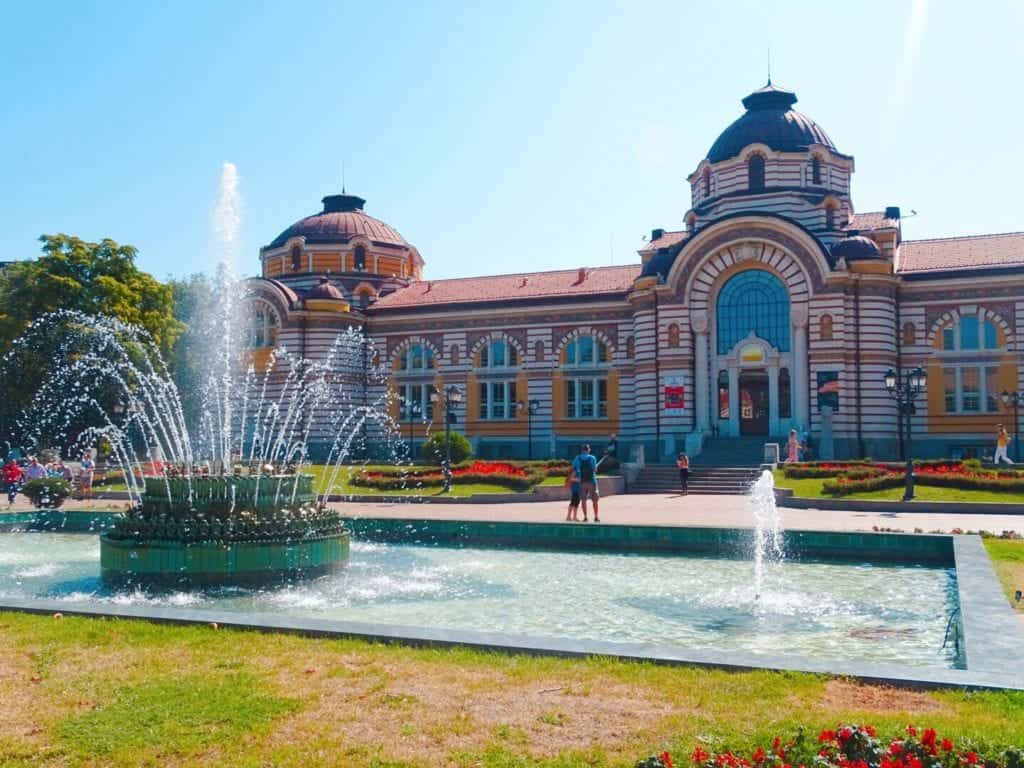
Bulgaria is a land of thermal activity and bubbling mineral springs, something I had no idea about before my 2 days in Sofia. These hot public baths were used for the locals for decades but sadly they’ve been closed for the past 40 years; a shame as I’d have loved a dip. However, a free thing to do in Sofia is stroll the colourful grounds of the Central Mineral Baths building and imagine how it would have been in the past. Don’t forget to…
Fill up your bottle with natural spring water
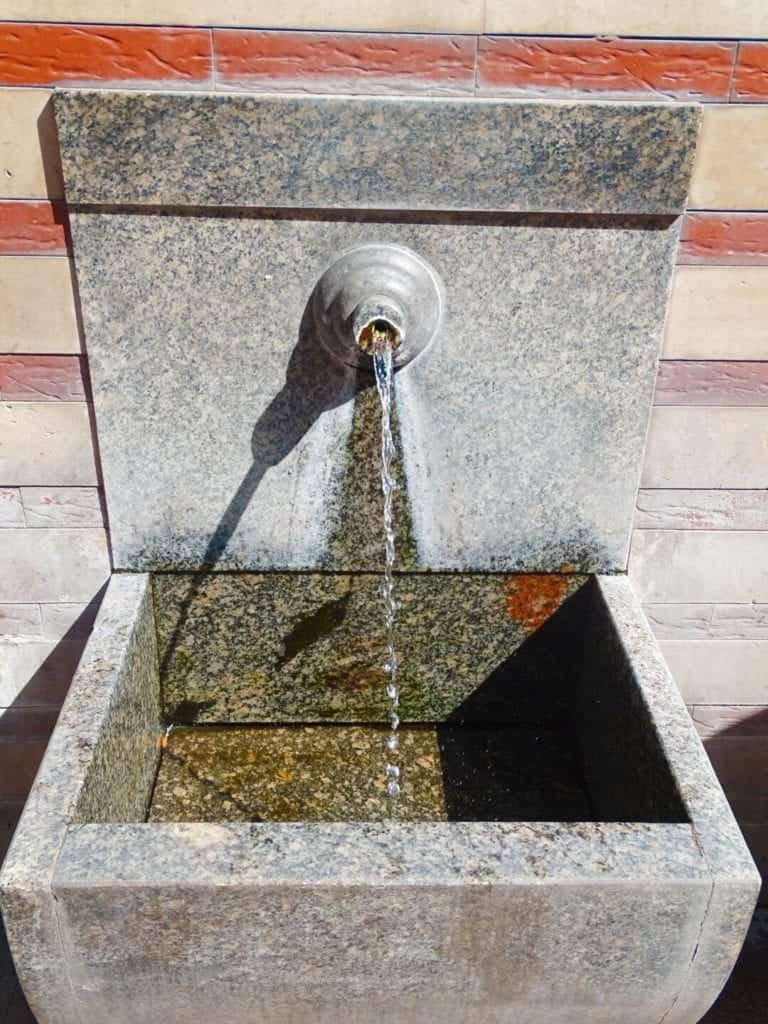
Cross the road from the Central Mineral Baths and you’ll find an open square full of fountains. You’ll notice an abundance of locals filling up large water bottles with warm mineral water straight from the natural springs. I wouldn’t recommend tipping away your drinking water, however – not only is the water lukewarm, but it tastes notably of egg . I took a gulp of the sulphur-ey goodness and decided not to again!
Journey up Vitosha Mountain
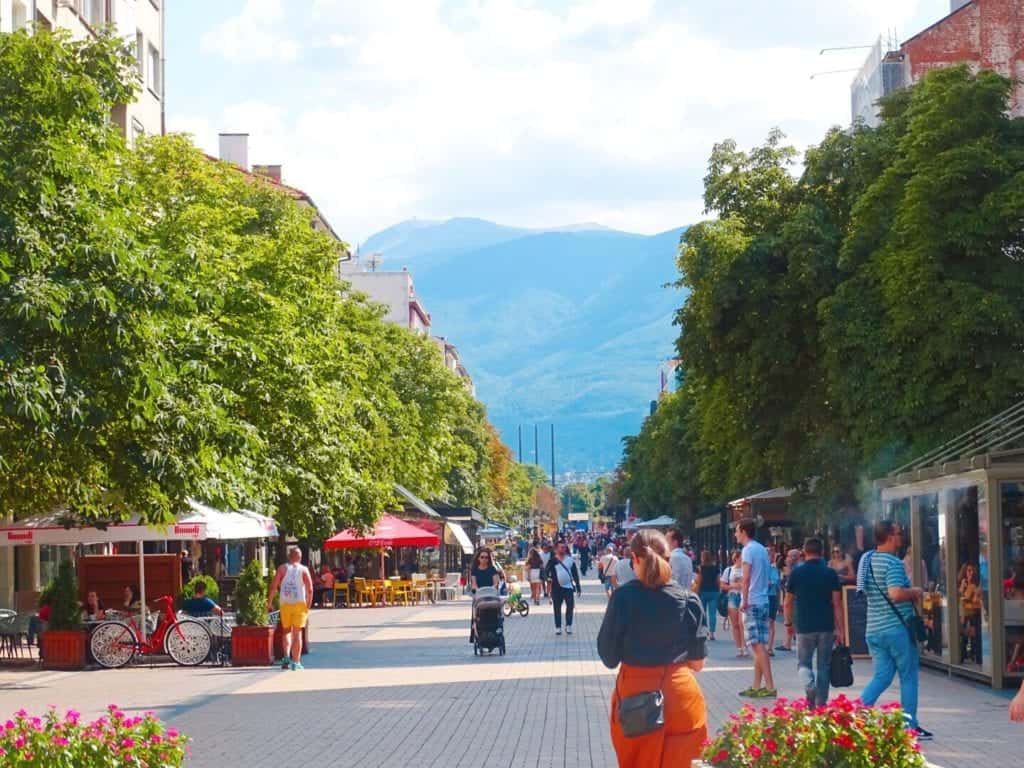
One thing I loved about Sofia was the mountain scenery that acted as a backdrop the whole time. Sitting with a coffee at an outdoor cafe while admiring the skyline was the perfect way to spend a summer afternoon. A popular thing to do in Sofia is take a trip up Vitosha, the best-known mountain in the area. Here you can hike or even go skiing in the winter. If you’re looking for an active Sofia itinerary, this could be the one. If you have a weekend in Sofia and you’re feeling sporty, there are several ways to get to Vitosha Mountain from Sofia. You can even hike there, starting from the dedicated stone at the National Theatre. Alternatively, buses 122 and 93 depart Hladilnika Station (opposite Paradise Mall) and journey up Vitosha, dropping at the start of a ski lift route to the very top.
Step back in time at the Red Flat
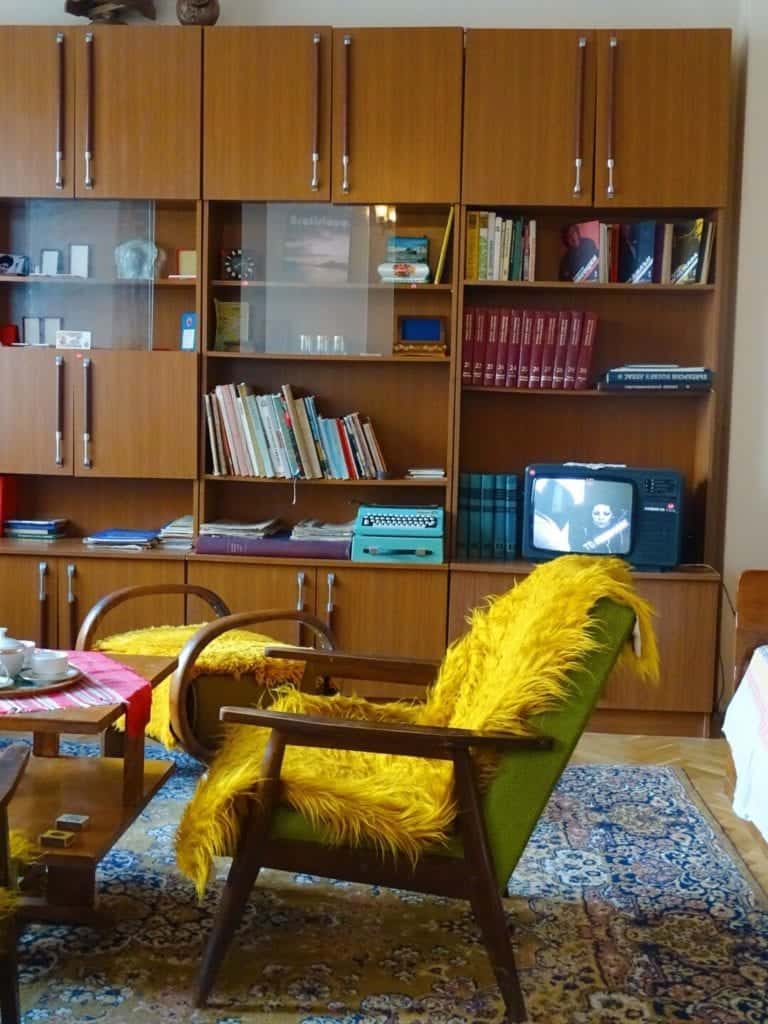
The Red Flat was by far the most interesting stop during my weekend in Sofia. Sure, the churches and religious buildings are nice but none of them offer an insight into authentic Bulgarian life. I find the communist period so fascinating because it was so recent and undoubtedly still affects life today. I ummed and ahhed because the Red Flat was 18 lev entry and I didn’t have much cash left before leaving Bulgaria the following morning. In the end, I was so glad I went inside.
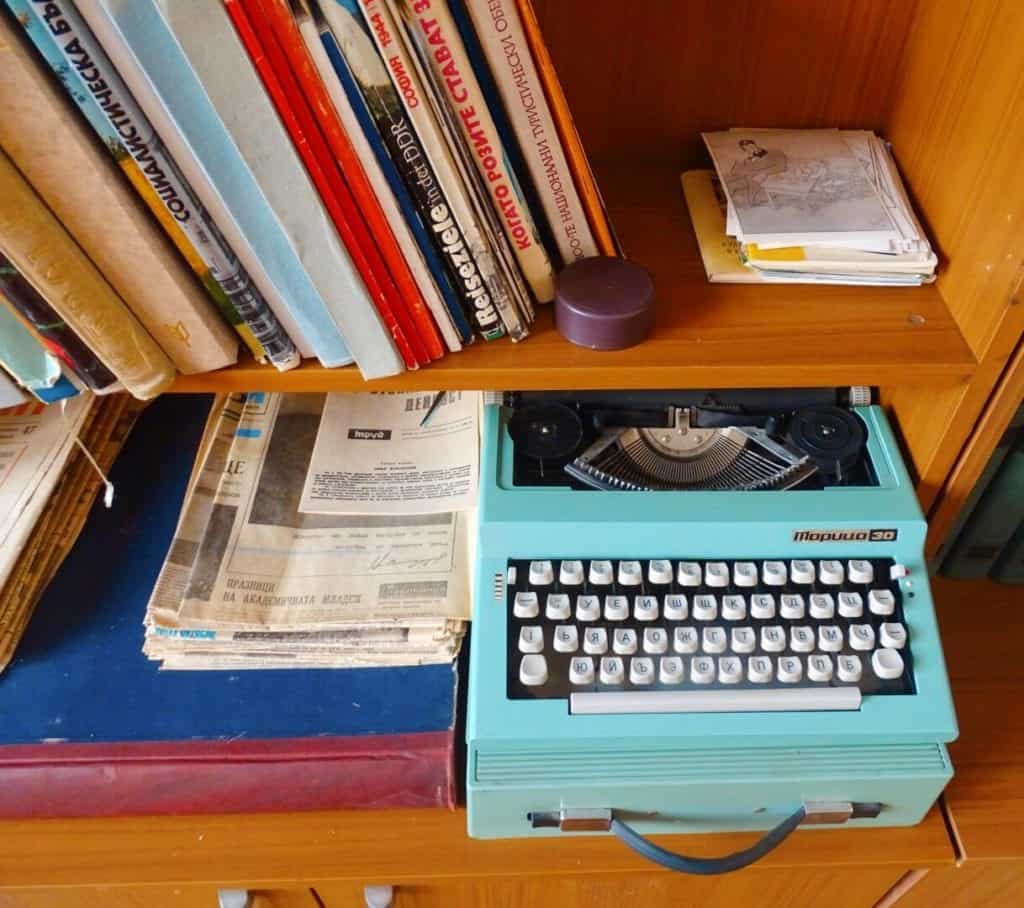
The Red Flat is designed to look like an average home in the communist era: no greater than 120 square feet and decked out with the foods, brands and home items that people would have owned. Each item in the house relates to an audio story on the headset you’re given on arrival. I loved listening to realistic stories about a fictional family who lived in the apartment. To visit the Red Flat, locate the Gifted store and purchase your ticket. If you’ve been on a Sofia Free Tour that day you’ll get 2 lev off the price. I’d highly recommend squeezing this gem into your Sofia itinerary!
Interested in Sofia’s history? Take a communist walking tour with a local guide for €10.
Seven Rila Lakes hike
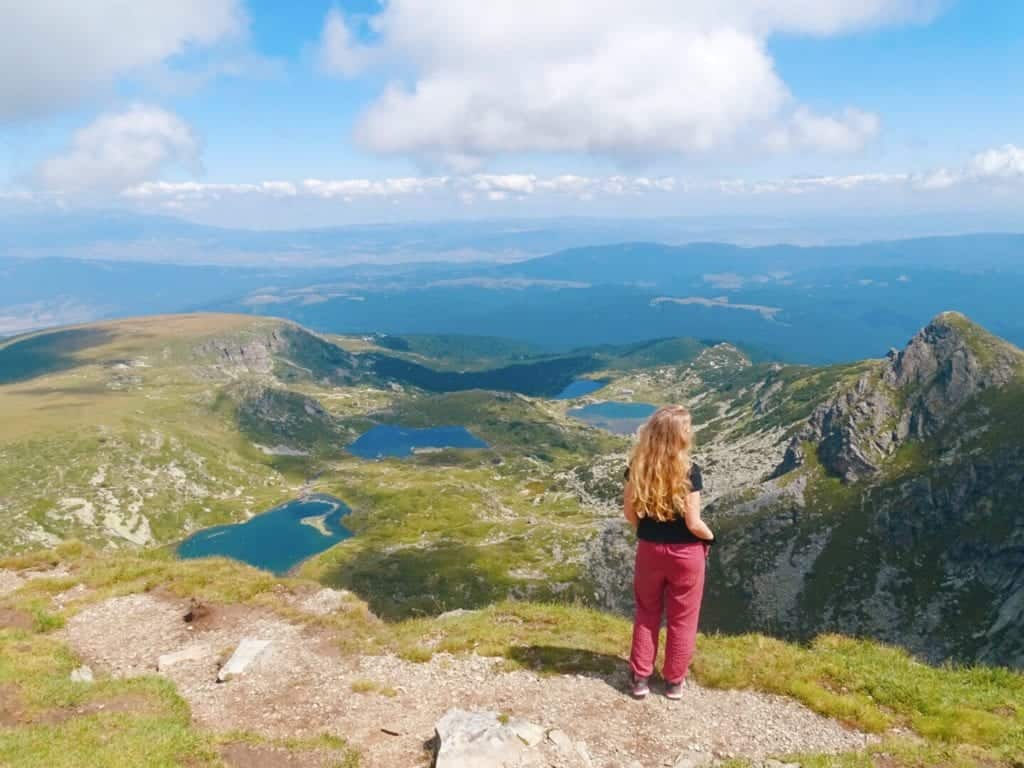
My favourite part of my recent trip to Sofia? Easily the Seven Rila Lakes hike!
Read next: Hiking Seven Rila Lakes
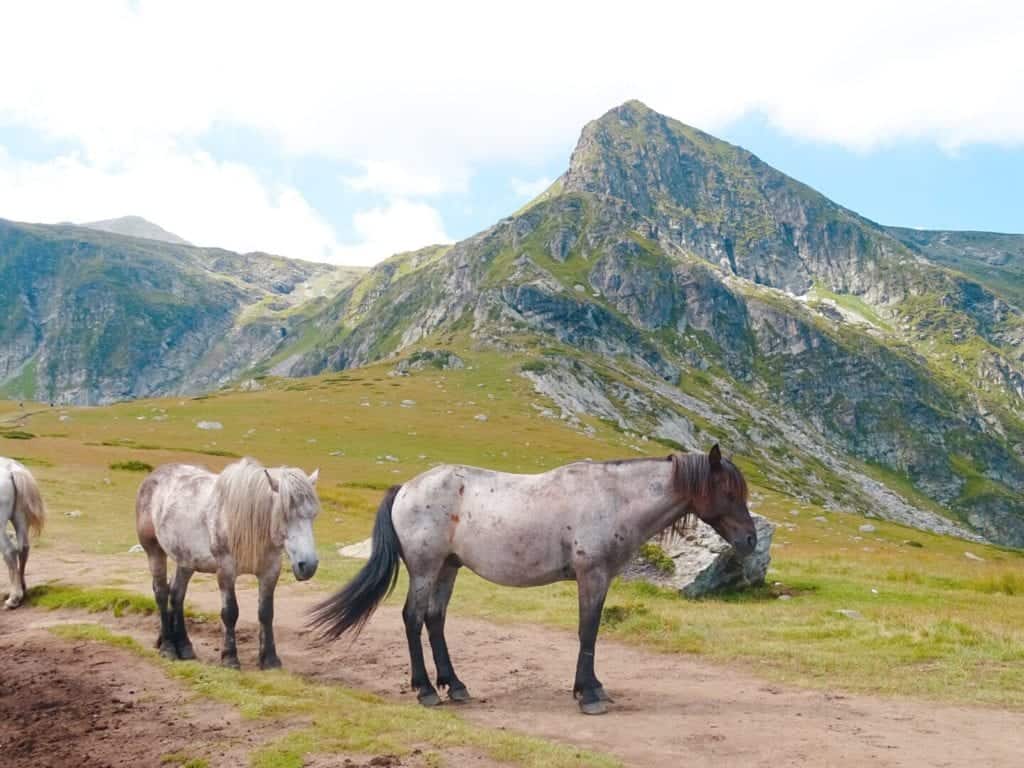
The Seven Lakes are a series of glacial lakes dating back over a million years. My step app informed me by the end of the hike that I’d climbed 130 flights of stairs though I’d say it wasn’t actually as hard as it looked. Perhaps the prospect of seeing all seven lakes in one panoramic view spurred me on! There’s a shorter and longer route you can hike; I did the shorter ‘red route’ which took 3 hours return. Scenery-wise, I can’t imagine anything better but it would have been nice to spend even more time in the country air. Whether you drive or take a tour to Seven Lakes, you’ll begin your day at the base of the cable car. This 20-minute ride costs 20 lev return but saves you an extra 2 hours of hiking. Book a Small group, full-day Rila Lakes hiking tour (€25) or a self-guided trip including Rila Monastery (€34). I took the latter and can highly recommend it.
Free walking tour with Sofia Free Tours
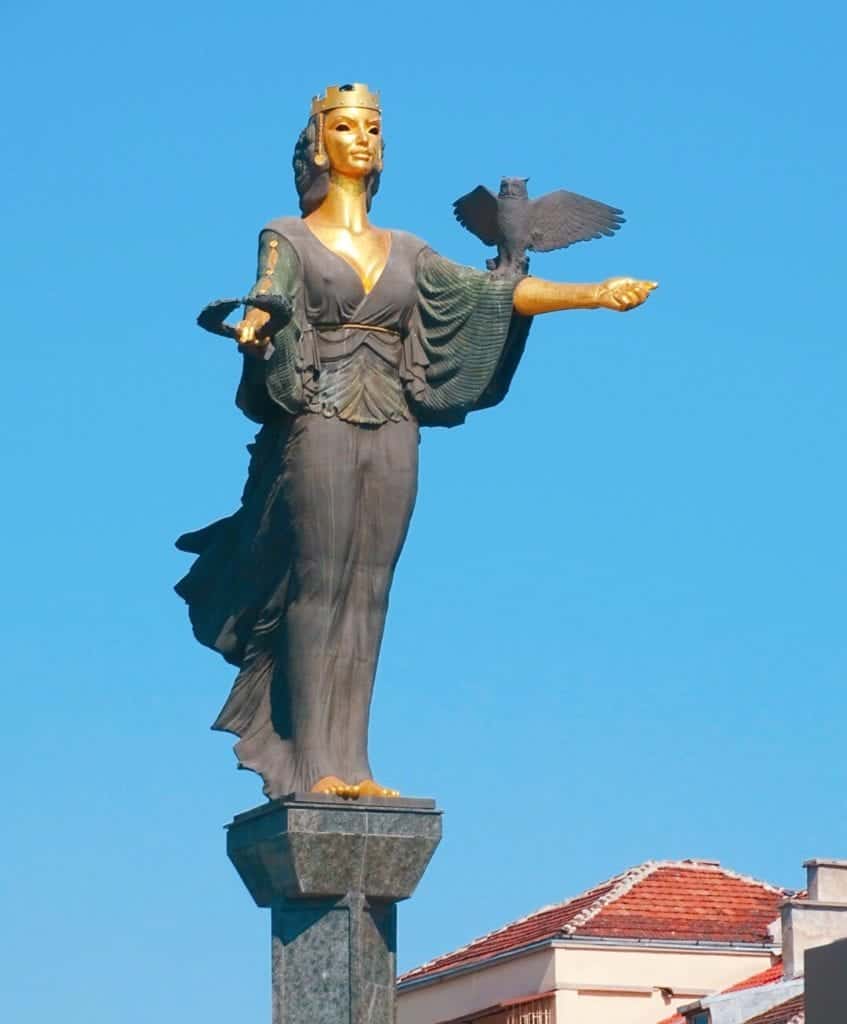
Read my Europe blogs and you’ll realise I love a free tour. What’s not to like? The best thing to do in Sofia in order to understand the history of the city is learn from a local. Tours depart daily at 10 am , 2pm and 6pm from the Palace of Justice. There’s no reservation needed so you can just rock up. The tours are free but you can give a donation, plus there are a couple of paid-for tours available including a Jewish history tour. Visit Sofia Free Tour for more info.
Rila Monastery
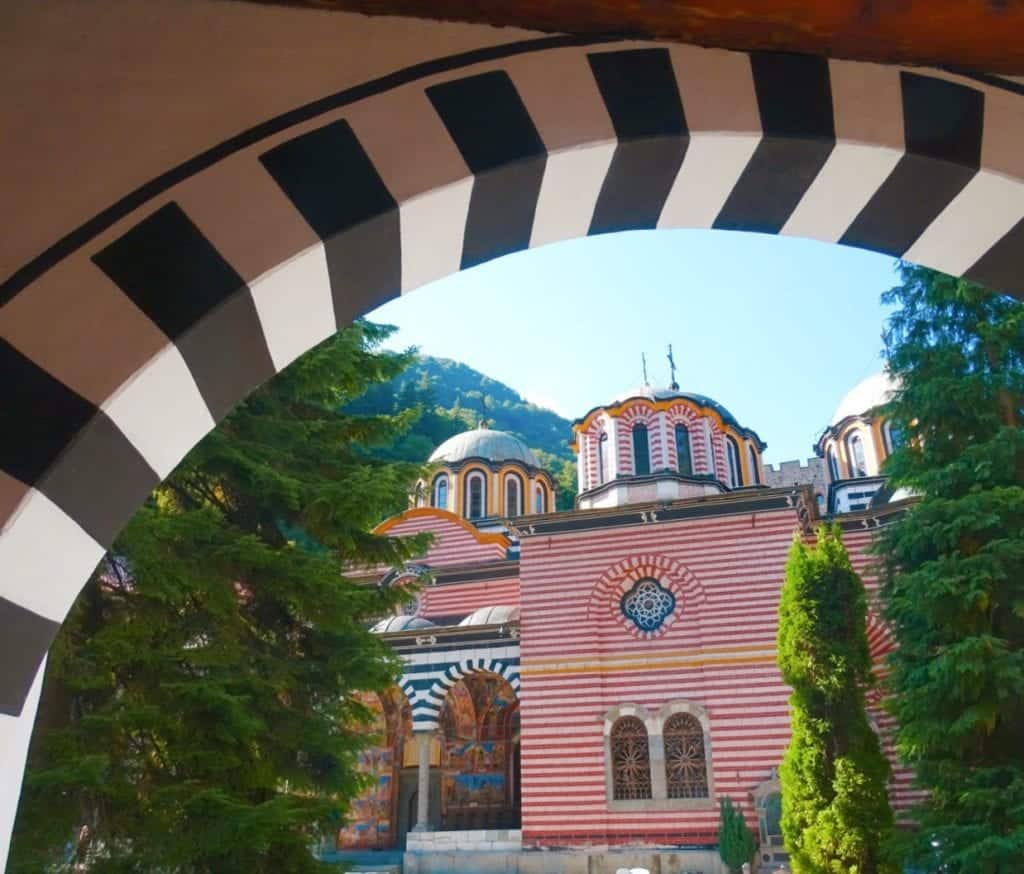
Rila Monastery is a trek from the city but I wanted to include it in this 2 day Sofia itinerary regardless. This impressive monastery surrounded by mountains is an important pilgrimage site for Bulgarians as it safeguarded Christianity throughout days of Ottoman rule.
Read next: how to take a day trip to Rila Monastery from Sofia
Founded by Saint Ivan of Rila, there are even some of his relics (bones) on-site today. These are thought to cure disease due to his ability to cause miracles.
Whether or not you’re a believer, Rila Monastery is a gorgeous place to visit. I headed there in the afternoon of my Seven Rila Lakes day tour but you can also catch a public bus at 10.20am from Ovcha Kupel bus station, returning to the city at 3pm.
For a quicker ride and guided tour, book a return Rila Monastery tour from €25 .
Check out the street art
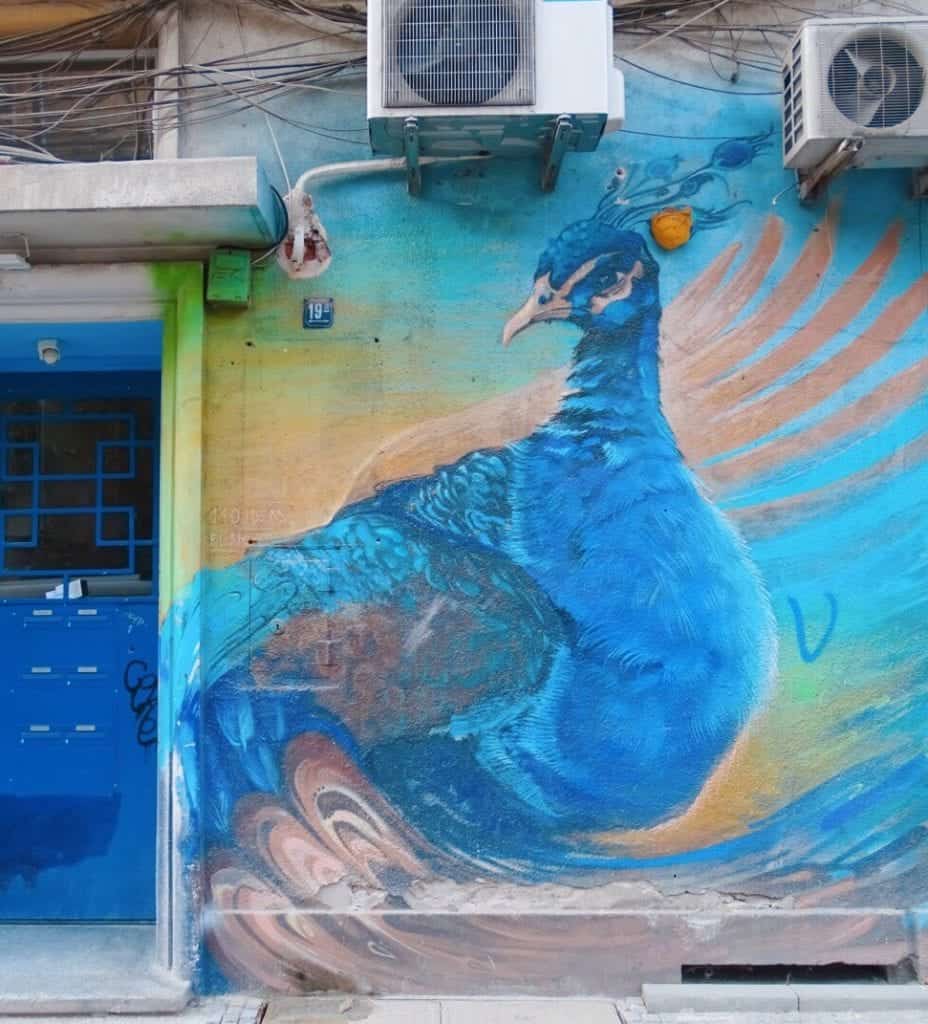
I didn’t have Sofia on my radar for street art but I was pleasantly surprised. There were plenty of creative, captivating pieces dotted around. If you head to Garafa Wine Shop or Skaptoburger (spoiler, you should) near Serdika Station, you’ll find these two blue pieces pictured above. Check their location here . To get shown all the best bits by the locals, take a 2.5-hour Sofia street art tour with a local guide .
Weekend in Sofia itinerary
If you’re unsure about how to squeeze in the above attractions, follow this itinerary below. For day two, you can just visit Rila Lakes or try to squeeze in Rila Monastery, too.
Day 1 Sofia itinerary
10am: take a walking tour with Sofia Free Tour. If you don’t fancy the structure of an organised walking tour, create your own and stop at Alexander Nevsky Cathedral and the Central Mineral Baths during the morning. 2pm: After a very light lunch, join the free food tour with Balkan Bites (remember to book a place on Facebook ). 4pm: Finally, visit the Red Flat before the closing time of 6pm . If you have any extra time in Sofia, you could visit the Red Flat a different day to ensure you have time to do it properly. 9pm: Explore the nightlife with a Sofia hidden bar crawl .
Day 2 Sofia itinerary
7am: Head on a day trip to The Seven Rila Lakes. Choose a tour that includes Rila Monastery if you’re keen to check it out, too. Otherwise, take a full-day guided tour to get immersed in the countryside surroundings. If you happen to have a third day in Sofia, you could visit Rila Monastery the following day. It depends how much time you want to dedicate to each location. 7pm: Reward yourself for your day hiking by eating dinner at Skaptoburger when you return to Sofia. I didn’t even feel guilty for the huge burger and cheesy patty (not that I ever do!) because I’d done so many steps during the day.
Best Bulgarian foods to try in Sofia
In my opinion, the Bulgarian cuisine is one of the tastiest in Eastern Europe. It’s a little lighter than Romanian and Czech food with influences coming from Turkey and Greece. It’s meat and dairy-heavy yet I think veggies will have better luck than in many places in Eastern Europe. Two days in Sofia wasn’t enough to try it all but I enjoyed sampling some of the most popular dishes.
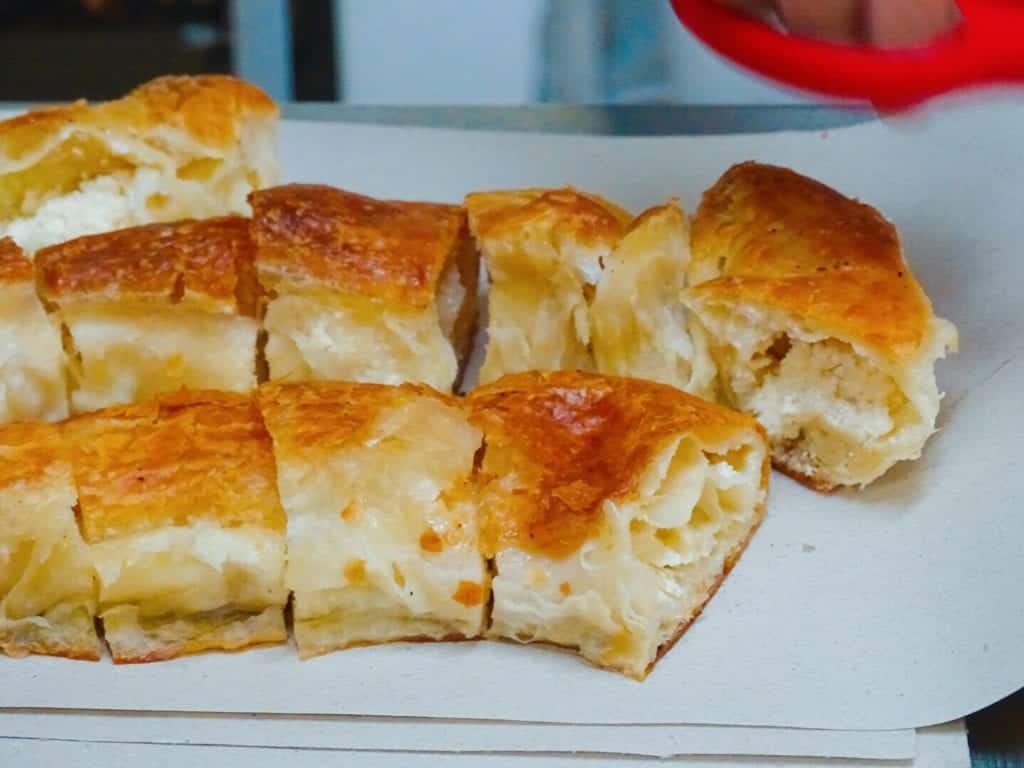
Some of the best foods to try during a weekend in Sofia include:
- Mekitsa – this fried dough dessert is warm, crispy and served with jam, honey, yoghurt or icing sugar. Those who’ve experienced the Budapest food scene might compare it to langos.
- Banitsa – the most famous baked good from Bulgaria is made with flaky, buttery pastry and filled with rich white cheese, a bit like feta. You might also find it made with bacon or spinach.
- Shopska salad – the most simple yet beloved Bulgarian dish is made with red peppers, cucumbers, onion, parsley and shaved white cheese.
- Moussaka – this dish layered with aubergine or mincemeat is popular in Middle Eastern countries as well as Bulgaria.
- Kebapche – grilled pork or beef is served as sausages and accompanied with fries or salad. Simple yet delicious.
- Tarator – a light and milky cucumber soup is eaten as a starter. It’s an acquired taste.
- Yoghurt and white cheese – the Bulgarians are big dairy eaters. Yoghurt might be their most prized national treasure, patented as a probiotic health supplement. White sheep’s cheese (similar to feta) is also popular.
Restaurants and cafes in Sofia
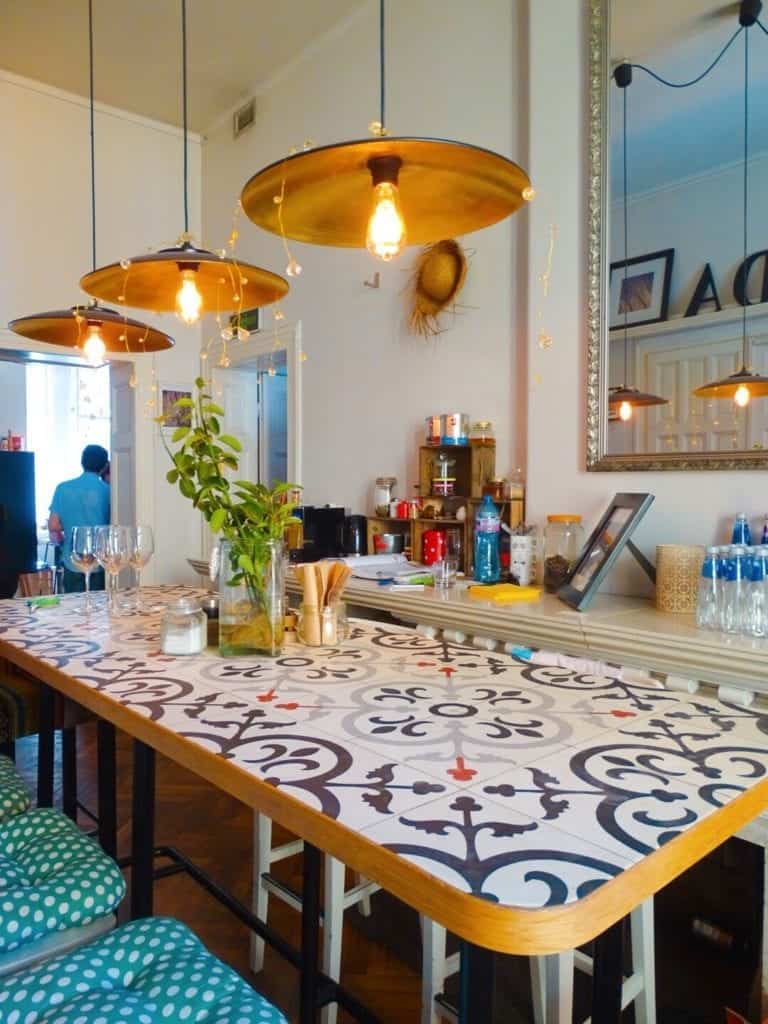
I loved the number of cool cafes, wine bars and hipster venues opening up in Sofia. But that doesn’t mean there’s any shortage of authentic Bulgarian food either; it’s really a city where you can have it all. Must-visit restaurants for the best food in Sofia include:
- Lavanda Restaurant – I’d have never known about this hidden cosy cafe without the Balkan Bites food tour. It was a local’s home known for its extravagant parties in the 1920s and shut down during the communist era. Now the decor has a homey feel as a throwback to its early days. The food was delicious with a focus on fresh ingredients.
- Garafa Wine Shop – This light and bright store on a bustling street is the perfect spot to sip wine and people-watch. Try wines from all over Bulgaria.
- Mekitsa and Coffee – Stop at this casual takeaway cafe for hot beverages and tasty local desserts. Here I tried mekitsa , fried dough sprinkled with icing sugar.
- Hadjidragana Tavern – For a hearty Bulgarian meal, this old-school restaurant serves all the traditional dishes, along with local plum wine and potent spirits. Live music plays most evenings.
- Sun Moon Alabin – This modern cafe serves fresh veggie food, endless desserts and good coffee. It’s a colourful place to hang out with an outdoor area.
- Magdanoz Restaurant – I had a lovely lunch in this leafy cafe garden. A little out of the city centre , it’s a place where you can rub shoulders with the locals and pay the same prices they do. There’s only one hand-written English menu which I had to wait to use, plus the food came out very slowly, but I quite liked the relaxed pace. There’s also a whole page of veggie dishes.
- Skaptoburger – hipster burgers complete with oozy cheese patties? SOLD. Pair them with tasty Bulgarian craft beers at this casual, noisy burger bar.
- Salted Cafe – a laptop-friendly cafe with proper coffee, smoothie bowls and fast Wi-Fi. Bring a Sofia Free Walking booklet and you’ll get a free energy ball.
Suggested activity – Sofia cheese & wine tour !
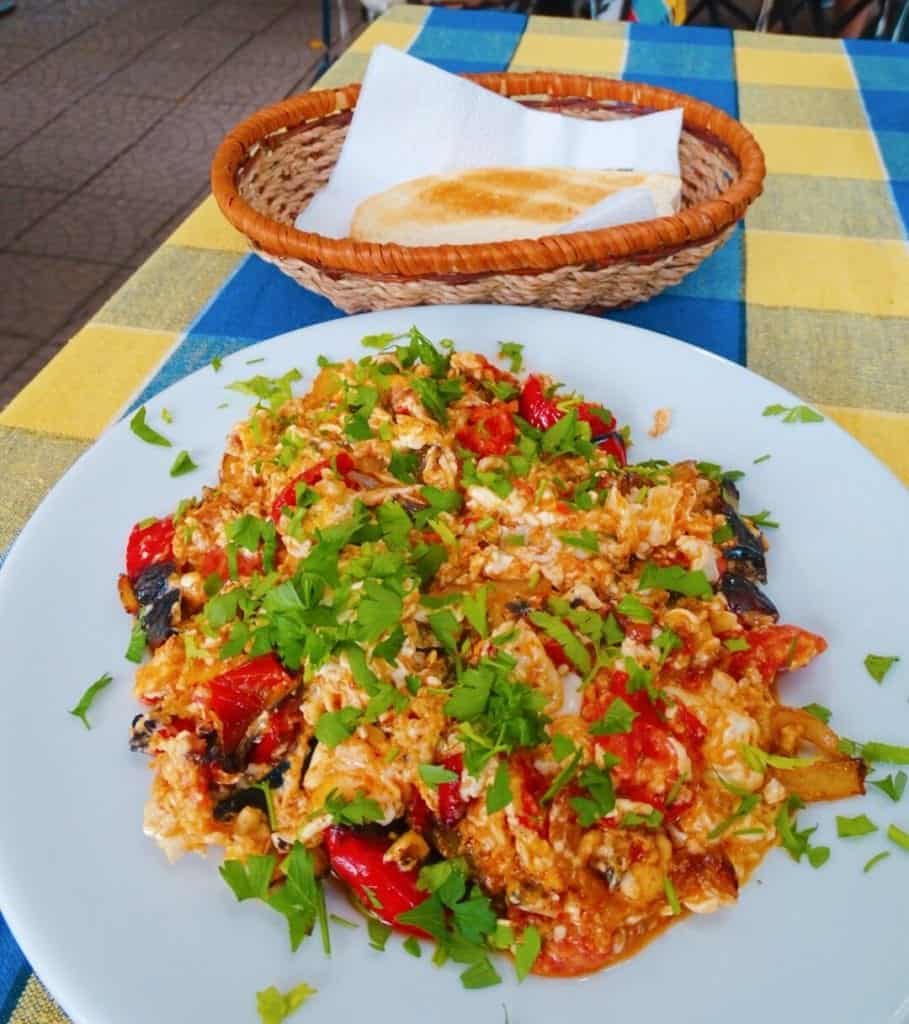
Bars in Sofia
Sofia has a lively nightlife that you can enjoy while spending a weekend in the capital. From quirky underground bars to upmarket bars and clubs, there are lots of places to go for drinks. I took a Sofia hidden bar crawl which took us to unusual places I’d never know known about otherwise. Highly recommended!
Thanks for reading!
Where next? Read my other Balkan blogs:
- 2 week itinerary for Albania
- What to do in Tirana, Albania
- 32 top places to visit in Pristina, Kosovo
- The top attractions in Belgrade, Serbia
- What to do and see in Skopje, North Macedonia
- Travel tips for Romania
- Two week Romania road trip itinerary
TRUSTED RESOURCES FOR VISITING BULGARIA Getting around by air – I use Skyscanner to find the best-value flights, using the ‘search by month’ tool to find the cheapest dates. You can also use the ‘to anywhere’ feature if you’re flexible on where you’re going. Driving in Europe – use Rentalcars.com to compare car rentals in European countries (and all around the world). For trains , I use RailEurope . The search feature allows you to compare prices, and they show live departure times on the website. For buses , I use FlixBus . Find journeys between European countries from €1! For hotels and self-catering apartments, I use Booking.com . You can filter by review score and price to find the best-rated budget places. For hostels, I use Hostelworld.com . To save money on accommodation, I use Trusted Housesitters , a website that connects homeowners going away and travellers who can sit their homes & pets. Browse tours and activities on GetYourGuide . For food tours pairing travellers with passionate local chefs and foodies, check out EatWith . Need travel insurance ? I use True Traveller (for UK & Europe residents) since it’s affordable but covers everything you’d need including various activities, valuables and pre-existing conditions. Unlike some companies, they insure you if you’re already travelling / don’t yet have your flight home booked. Get a quote . For travel insurance for other nationalities, I recommend Hey Mundo and for long-term digital nomad travellers, I suggest Safety Wing . Check out my resources page for more travel discounts and budget tips from my 10+ years on the road!
See you next time for more adventures,
For more travel content, follow me on Instagram , Facebook , Twitter and YouTube .
Ps. Liked my weekend in Sofia itinerary? Pin it for later!
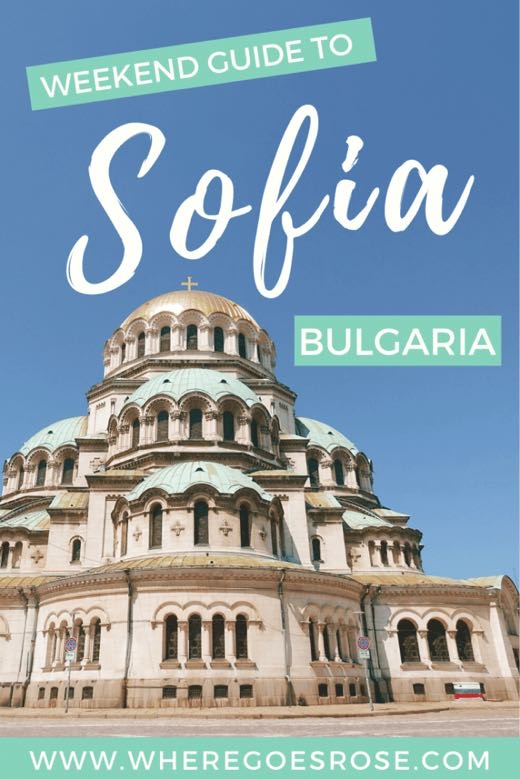
Rose is a solo traveller from the UK who has been on the road since 2015. She wants to show other women that solo travel isn't scary and doesn't have to be expensive! Rose has lived in Mexico, Canada and all over Asia, seeking out food, bubble tea and street art wherever she goes!
Leave a Reply Cancel reply
Your email address will not be published. Required fields are marked *
You can see how this popup was set up in our step-by-step guide: https://wppopupmaker.com/guides/auto-opening-announcement-popups/
40 Fun & Unusual Things to Do in Sofia, Bulgaria

Sofia is the capital city of Bulgaria, a country that forms part of the Balkan Peninsula, and dates back 7000 years.
Sofia’s deep history peeks its head often throughout the city in layers, through excavations and little museums dotted around the city exposing the Roman Ruins over which the city was built over.
Going unnoticed are the architectural styling transforming from neo-Byzantine and neo-Baroque to German Functionalism, Bauhaus, and communist-style buildings.
With its close proximity to nearby countries like Serbia and North Macedonia, travel plans expand with even more activities and day trips to take part in.
Not to mention its wealth in theaters, opera houses, and ballet, Sofia has made a name for itself on the southeastern European cultural map.
Let’s dive into what makes Serdica, the previous name of the city, and let’s read about the best things to do in Sofia .
1 – Visit the Neo-Byzantine designed St. Alexander Nevsky Cathedral

Considered to be one of the most emblematic sites in Sofia, and one of the most important Orthodox churches in Bulgaria, the St. Alexander Nevsky Cathedral is a sight to step in and see for yourself.
The cathedral was built as a symbol for those who perished during the Russian-Turkish War of 1878-1879, which helped to liberate Bulgaria from the Ottoman Empire.
Be amazed by the beautiful gold-covered domes, and take in the other lavish materials used to give the church its fine details, from Italian marble, Brazilian onyx, and Indian alabaster.
Adorned with so much beauty and fun facts to learn, make sure to step inside the small Christan art museum, showcasing more religious art from Bulgaria and other facts from the cathedral’s construction.
- walking tours in Sofia
2 – Spend the day at the markets of Sofia

Check out the incredible markets that dot the downtown area, and make it a true joy to experience local everyday life in Sofia.
Visit Zhenski Pazar Market , also known as the Women’s Market, known to be the oldest market in Sofia, dating back to the early 20th century.
Find stalls of fresh and local produce brought by local farmers, and smell and taste the authenticity of local dishes sold at the market. It’s a great foodie spot.
Near the famed, Alexander Nevsky Cathedral is the Alexander Nevsky Antiques Market, which is an open-air flea market where visitors can expect everything from soviet union memorabilia, to home goods, and other random yet intriguing second-hand goods.
Other markets to visit include the Sofia Central Market Hall and the Bitaka Flea Market.
- food tours in Sofia
3 – Check out Sofia’s largest museum, the National History Museum

With over 650,000 exhibits, the National History Museum welcomes visitors to learn more about the fascinating and deep history of Bulgaria, and the capital city Sofia.
From the Bronze Age, and the Middle Ages, all the way to showcasing war relics like uniforms, to everyday textiles, maps, pieces of furniture, and more – the museum will definitely keep all of its visitors for a while as they navigate the different eras of Bulgaria.
Those interested in archaeology will need to visit the archaeological and historical rooms to examine the incredible amount of items found during excavations throughout the country.
After learning about Bulgarian history, consider having lunch at the museum buffet, and stepping into the library, and souvenir shop.
The museum is open every day from 9:30 am – 6 pm.
- National History Museum tickets
4 – Visit the Sofia Zoo, the oldest zoo in the Balkans

Spend an afternoon learning about and observing the grand variety of animals that call the Sofia Zoo home, located 12 minutes south of Sofia city center.
With over 2,000 varieties of animals and around 280 represented species, both local and international, children and adult animal enthusiasts will enjoy learning more about each animal, its habitats, and what each animal eats.
Visitors can expect to see animals like otters, goats, lions, bears, lamas, birds of various varieties, and so much more.
Lately, the zoo has opened a new section to the zoo that showcases the study of trees and other wooded plants.
This fascinating section opens the world of botany even more to interested visitors who will learn about 40 different tree species from all over the world.
5 – Visit the UNESCO World Heritage Sites, Rila Monastery & Boyana Church

Surrounded by enchanting forested mountains is the largest and most well-known monastery in the Eastern Orthodox faith, Rila Monastery.
Step back in time, and walk through the grounds of the monastery that dates back to the 10th century, telling the history of the spiritual and social life of those who lived through the medieval era in Bulgaria.
Check out the museum, which is made up of 4 exhibits ranging from the history of the monastery, social and cultural practices, art pieces, and weapons and tools.
If you take a day trip from Sofia to the Rila Monastery, a stop at Boyana Church is included, where visitors can observe the delicate yet marvelous medieval frescoes dating back to the 13th century.
Those feeling extra adventurous can take a bike tour from Sofia to the monastery, surely guaranteed to be an experience to have at least once.
- Rila Monastery tours from Sofia
6 – Explore the National Palace of Culture

The National Palace of Culture (NDK) is the largest convention center not only in Bulgaria but in the whole of the southeastern region of Europe.
Built in 1981, the National Palace of Culture estimates that it hosts 300 events per year. It’s located in the heart of Sofia, making it very accessible to visitors.
Most famous for hosting a myriad of events from concerts, to conventions, conferences, exhibitions, festivals, and more, the National Palace of Culture covers approximately 123,000 square meters and towers around 8 stories high.
Check out their website to find more information on upcoming shows and events taking place inside. While visiting, make sure to check out the piece of the Berlin wall, located on the left side of the main entrance of the NDK.
7 – Visit the famous churches of Sofia

The Church of St. George Rotunda, also known as St. Georgi, is a church that went through waves of different uses based on religious influences, from a Christian church to a mosque and an Orthodox church.
Stop by on a Sunday morning to listen to the sound of church chants and singing.
The Church of St. Nicholas the Miracle-Maker is a Russian church situated in the heart of Sofia and offers beautiful 16th-century Russian architecture stylings, and stunning frescoes found inside. Stop by the crypt where the remains of Bishop Serafin lie.
A bus tour is a fast and easy way to see not only these churches but way more at once. Get informed, and appreciate the different architecture of each church, all retelling a piece of important Bulgarian history.
8 – Go back in time between 1944-1989 on a communism tour

Join a communism tour, and walk through the streets of Sofia, learning about life during the communist era, taking note of the specific architecture of the buildings such as the building that was the Former Bulgarian Communist Party Headquarters.
Walk past the Knyazheska Garden and Monument to the Soviet Army, and learn about the dedication behind the sculptures, and what it means to Bulgarians.
The Museum of Socialist Art shares images of a version of an ideal society, a variety of poster propaganda, a large 5-pointed star, films, and texts from the time.
Stop by for drinks later at the Raketa Rakia bar , known to be a communist-styled bar with art and other interesting decor. Take a Soviet Jeep Tour if you prefer taking a car over walking.
- communism tours in Sofia
9 – Dig more into the past at Sofia History Museum

Utilized as the city’s first public bath called the Central Mineral Bathhouse in the early 20th century, the Sofia History Museum is a space that shares with visitors Sofia’s history, from the beginnings of the city’s settlement to the more recent 20th century and current day progressions.
The museum counts with 8 exhibits, guiding the traveler through the different eras of Sofia, and offering visitors insight into the prized materials of the Kings that ruled Sofia at one point, the Turkish influence deep in the city, as well as showcasing what a Neolithic home six millennia BC was like.
Peek at the mineral springs beside the museum, although not in use anymore, share a visual of the abundance and common practice of mineral spring water fountains throughout the city.
10 – Test your critical thinking skills in an escape room

Beat the timer inside an escape room, where you and your group have to work together to think of creative ways to solve riddles and questions in order to escape the specified room you’re in.
Guaranteeing a fun and memorable time, bring your group of friends, or come solo and join a group to put your heads together and unlock the next round.
With various types of themed escape rooms, choose from robbery, murder mystery, toxic lab, an insane asylum, and many other types of themed escape rooms to test your luck and your skill.
Be sure to book your spot in advance online to skip the line and guarantee your slot with your party. Most escape rooms are located throughout the heart of Sofia, starting at $25 USD.
- escape rooms in Sofia
11 – Splish splash at Vazrajdane Aqua Park

Welcoming guests with a refreshing afternoon plan, Vazrajdane Aqua Park , located in the heart of the city, is easily accessed via public transportation on train or bus and it’s one of the best things to do in Sofia with kids.
Stretching over 6,600 square meters and situated inside the extensive Vazrajdane Park, this aqua park offers an incredible amount of relaxing opportunities, as well as exciting and entertaining options.
Fit for everyone in your group, enjoy a large indoor swimming pool and sauna park, as well as fun outdoor swimming pools with twisty slides.
Parents can enjoy the swim-up bar, as well as catching some sun rays on the sunbeds, and enjoy lunch at the restaurant on-site. Indulge further in relaxation with a massage, salt room, tangent baths, and so much more.
Tickets start at BGN 9.00 for pool access.
12 – Do double takes inside the Museum of Illusions

Enter a world unlike anywhere, where up means down and some double takes may be required.
The Museum of Illusions is jam-packed with incredible fantasies that feel so real, that you have to experience yourself completely to see that not everything is what it may seem.
Technology, riddles, art, and a strong sense of imagination all go together, where children and adults can draw with light, take pictures with interactive cameras, and learn how light and shadows truly work, amongst other fun things.
With a space of 400 square meters, prepare to spend 1-2 hours truly enjoying the exhibits.
Tickets start at BNG 21.00, and the museum opens daily from 10 am – 8 pm. Make sure to book your tickets and select the day you’d like to visit online.
- Museum of Illusions tickets
13 – Roam the streets of Plovdiv – Bulgaria’s second-largest city

Known as the cultural capital of Bulgaria, Plovdiv is the city famously built around the 7 hills and is recognized nationally and internationally as the oldest continually inhabited European city.
In 2019, Plovdiv received the title of European Capital of Culture.
Check out the picturesque Ancient Theater, delivering incredible views of the city, made out of marble. Walk through the artsy neighborhood of Kapana, and get a view of the city’s best art pieces inside the abundance of galleries.
Refer to their website to find local festivities happening year-round.
Be sure to visit these sights in Plovdiv as well as many others on a tour from Sofia, which oftentimes includes a stop in nearby Koprivshtitsa , another rich and historical known for its Bulgarian-style architecture dating to the 19th century.
- Plovdiv tours from Sofia
14 – Check out the art hot spots in Sofia’s art galleries

Art lovers rejoice with the incredible opportunities to encounter art galleries all over Sofia, sharing emotion, life, and experience from the perspective of the Bulgarians of Sofia.
Browse the 28 halls and over 42,000 art pieces inside The National Art Gallery . Some of the most prized Bulgarian art pieces range from mid-19th century Bulgaria, all the way to international pieces from the Americas and Africa.
Consider the Sofia City Art Gallery for a dose of Bulgarian contemporary art, and check out their 3 exhibits: Past, Present, and Future, showcasing the progression and expression of modern art throughout the times.
For street art lovers, there are plenty of great things to do in Sofia, a great destination to check out provocative and important socio-political murals, and images that will be understood no matter the language barrier. It’s worth stopping by Art Street Samuil (also known as Tzar Samuil) and visiting the many art galleries.
15 – Paraglide to get a bird’s eye view of Sofia

Glide through the Bulgarian skies, and take in sights unlike anywhere else on a paragliding adventure.
Fly with a professional, and be flown through the winds as you take in some of Sofia’s most famed sights including the St. Alexander Nevsky Cathedral, Church St. George Rotunda, and the Sofia History Museum.
The paragliding adventure usually lasts anywhere from 10-30 minutes depending on the weather conditions and can go up as high as a few thousand meters in the sky.
Ticket prices may vary, but some can start at around $100 USD.
Many of the take-off sites are located not too far from downtown Sofia, so a quick taxi ride or bus ride will be the easiest mode of transportation.
- paragliding in Sofia
16 – Take a look at war relics inside the National Museum of Military History

Learn about the intense and fascinating history of the Bulgarian military inside the National Museum of Military History , showcasing uniforms, tools, weaponry, photographs, flags, and many other pieces of military materials.
Opening its doors in 1916, the aim of the museum is to educate and inform Bulgarian citizens about the national defense, and build pride and respect for those who lost their lives fighting for their country.
Walk through the different exhibits showcasing different wars in which the Bulgarians were involved, and see as the stories and war strategies come alive through the imagery and education.
Guided tours are available and encouraged in order to make sense of the vast amounts of information, so make sure to inquire about it beforehand.
17 – Gaze at the beauty of the Seven Rila Lakes

Located north of Sofia is the sight of the Seven Rila Lakes, a series of lakes that were created due to glacial activity that today, give Bulgaria an undisputed level of natural beauty for all to enjoy.
Considered to be the most visited series of lakes in Bulgaria, it is surely a place to add to your list of things to do in Sofia and see the lakes distinctly for their unique shape.
Some of the names of the rivers range from The Tear (the most transparent lake), The Kidney (a crescent-shaped lake), The Eye (an oval-shaped lake), and a few more.
Bring your hiking shoes and trek the multiple trails, ranging from easy to challenging, and relax afterward with a therapeutic dip in a warm pool at the nearby thermal spas .
- Seven Rila Lakes tours from Sofia
18 – Go through Bulgaria’s well-preserved artifacts at the Bulgarian Archeological Museum

Visit the spectacular Bulgarian Archaeological Museum , housed inside what used to be the Ottoman Empire’s largest mosque, in the heart of Sofia.
Wander through the 4 exhibits, showcasing a timeline of the historical findings throughout the excavations in Bulgaria, from the prehistoric hall to the Late Bronze Age, and then the Middle Ages.
Be sure to check out the special collection of items in the unique Vault hall, where visitors can find some of the most precious and prized possessions belonging to Bulgaria’s rich heritage.
Sorted chronologically, visitors will observe old paintings dating back to Medieval times, see up close weaponry and other tools used every day in the Late Bronze Age, and much more.
The museum is open every day except Mondays, from 10 am – 5 pm.
19 – Learn about the turbulent past of the Sofia Synagogue

The Sofia Synagogue is one of the largest in Europe and makes up 1 of the 2 only functioning synagogues in Bulgaria.
Considering the challenges that the Sofia Synagogue faced throughout time, from wars to wanting to convert the religious space to a concert venue, the synagogue today is fully in function and serves the small yet present Jewish community of Sofia.
Visitors can enter the holy space, and take in the beautiful Spanish-Arab architecture while noticing the majestic hanging chandelier in the middle, as well as the intricate interior details.
If you’d like you can also hop over to the other religious spaces such as the Mosque and Catholic Cathedral, not too far away from the Synagogue.
Entrance is based on donations, and guides are available for a fee.
20 – Uncover the magnificent site of Belogradchik Rocks

Stunning natural phenomena are the Belogradchick Rocks, an interesting rock formation of sandstone located in the northwestern region of Bulgaria, and just under 3 hours away from Sofia.
The Belogradchik Rocks is a site that is intriguing based on its shape and height, reaching over 200 meters. However, it’s also the fortress nearby that draws the eyes and attention even wider.
Visit the fortress that makes the site look like a grand Bulgarian castle, on the Belogradchik Rocks. Walk around the 12-meter tall walls, and walk into the fortress yards, giving way to one of the best views of the dramatic rock formations.
Take one of the three different train journeys departing from the town of Oreshec, and take a taxi from the Belogradchick station to the rocks.
- Belogradchik Rocks tours from Sofia
21 – Relax and unwind in Sofia’s best parks

Check out some of the best parks in Sofia, whether to escape the busy city, plan a picnic, do a little people-watching, or all of the above.
Borisova Gradina Park is one of the oldest parks in Sofia and is located 7 minutes south of downtown Sofia. Offering walking trails, beautiful open spaces for a picnic, and historical sculptures plan to relax and unwind for a few hours here.
Located close to the National Art Gallery is the City Garden. Check out the beautiful gardens where the locals of all ages come out to socialize, meet with friends, and enjoy a coffee.
Take your young ones to the playground inside Park Zaimov, offering tennis courts, cafes, and even a theater. Admire the fountains, and the gardens, and disengage from city life for a while.
22 – Check out the local food scene on a food tour

Try some of Bulgaria’s emblematic dishes such as the cheesy pastry dish called Banitsa, cold, fresh, and creamy soup called Tarator, and the traditional shopska salad inside a food tour.
Book an exciting food tour that will grant you access to some of the best food markets, hole in the wall restaurants, and let your eyes and sense of scent take over as you feast your eyes and appetite on some of the freshest produce.
On the way to these different foodie places, you’ll also get a tour of the city, and all of the important sites in the city. Be led by a local food expert, and learn about the farm-to-table approach very present in Bulgaria, including Sofia.
23 – Go on a hiking expedition on Vitosha Mountain

A little under 1 hour from Sofia is the mountain peak Vitosha, known to be a great spot for hiking, alpinism, snowshoeing, and skiing.
Unofficially a symbol of Sofia, Vitosha Mountain is an adored spot for many Bulgarians seeking to get in touch with nature.
Enjoy a hike or a guided snowshoe trek around parts of the mountain. Another popular trek is the waterfall hike, as well as a mountain bike expedition. Sit on a chair lift, and get incredible unmatched views of the surroundings.
The mountain is easily accessible via public transportation, offering various stops throughout the journey.
Another mode of transportation is a tour from Sofia, stopping at Vitosha Mountain, as well as Dragalevtsi Monastery – a Bulgarian Orthodox monastery located near the slopes of Vitosha Mountain.
- Vitosha Mountain tours from Sofia
24 – Enjoy learning about Bulgaria’s collection of rare insects at the National Museum of Natural History

Originally organized in 1889 as a way to store the personal collection of the Royal Prince Ferdinand, the National Museum of Natural History opened its doors officially to the public in 1907 and is considered the oldest museum in Bulgaria.
Counting on 15 separate halls on 4 floors, each housing exhibits on mineralogy, birds, fishes, insects, and more, visitors will see remnants of unique animals such as the last pure-bred aurochs, the California condor which has now gone extinct, huge African tortoises, and so much more.
Located in the heart of downtown Sofia, the museum is very accessible and easy to get to no matter where you may be via public transport or on foot. The museum is open every day, from 10 am – 6 pm.
25 – Take your family to Kokolandia amusement park

Adventure calls at Kokolandia amusement park, offering families the opportunity to bond together over challenging obstacle courses and activities that involve rope climbing, trampolines, tree top obstacle courses, and so much more.
Aimed more for children, parents and young adults will also love challenging themselves with rock climbing and other slightly more advanced tree top adventures.
Children will love the newly opened Vozhelandia activity, combining swinging, jumping, hiding, and rolling around a wide, and colorful net.
The adventure park also prides itself on backing up its games and activities with insurance and safety nets everywhere, so children can fully enjoy themselves and parents can feel comfortable letting go.
The amusement park is located about 1 hour away from Sofia, and prices vary depending on how many rounds you’d like to purchase.
26 – Plan a day trip to North Macedonia or Serbia only a few hours away from Sofia

The advantage of visiting the Balkans is knowing that you’re never more than a few hours away from the next country, which means incredible day trips to neighboring cities.
Check out a day trip to the city of Skopje in North Macedonia, and wander through the country’s capital that dates back to 4,000 BC, and is only a few hours away from Sofia.
Visit some of the top sites in one day including the Old Bazaar, the Skopje Eye Bridge, and Karpos’s Rebellion Square.
Also not too far from Sofia is the city of Nis in Serbia, the 3rd largest city in Serbia, less than 3 hours away, where visitors can check out important sites like the Skull Tower, and the Nis Fortress, and enjoy Serbian cuisine.
27 – Create magical memories with your kids at Muzeiko Children’s Museum

Combining science, curiosity, and imagination, Muzeiko is a space where children of all ages are encouraged to play and have fun while learning about the world via science, culture, history, and art.
Science comes alive with 15 various exhibits showcasing natural sciences, creative inventions, the planetarium, child-size city and nature replicas, archaeology, and so much more.
Parents can grab lunch at the museum cafe, and browse through the souvenir shop while their children are enjoying themselves with the over 100 interactive games and activities.
The museum has information written in both English and Bulgarian, making it easy for more children to understand and integrate well.
Tickets can be purchased online starting at BGN 15 for adults and BGN 9 for children under 25 years old.
28 – Experience a deluxe wine tasting in the heart of Sofia

Enjoy a taste test of the wines local to Sofia on a wine-tasting tour, guided by a professional wine master.
Taste and learn about wines that span over the 5,000 years of wine-making tradition and history in Bulgaria.
Taste the sweet nectar of some of Bulgaria’s most local grapes: Miskets, Melnik, Mavrud, Guzma, and Rubin, and learn about the wine-making process that has deep roots in Bulgaria.
When wine comes to mind, Sofia is not always a region to think of, but passionate wine-makers will educate you on some lesser-known information about Bulgarian wine.
Often complimented well with a wine tasting is a cheese tasting , also offering visitors a taste of some of the best cheeses crafted in Bulgaria and in the Balkans as a whole.
- wine tastings in Sofia
29 – Visit the only functioning mosque in Sofia called Banya Bashi Mosque

After the Ottoman rule in Sofia that lasted almost 5 centuries, at its peak, Sofia was the home of up to 70 different mosques.
Today, however, the Banya Bashi Mosque is known to be the only functioning mosque in Sofia currently.
While the exterior of the mosque offers an architectural style very typical of the Ottoman Empire, the interior is said to be a spectacular constellation of incredible calligraphy, geometric shapes, Islamic art, and beautiful tile work.
The mosque can fit up to 700 people, and it is open for respectful visitors of all religious backgrounds to take in the stunning interiors.
Look beside the mosque to find remnants of an old Hamman, perhaps giving the name “many baths” to the mosque. The entrance is free to the mosque.
30 – Wander through the streets of Veliko Tarnovo

Located northwest of Sofia, is the town of Veliko Tarnovo, perched high in the mountains and offering incredible hiking opportunities, and nightlife due to being home to Bulgaria’s largest university while offering a small town, and a picturesque atmosphere.
Check out a free walking tour that will show you the must-see sites of the town, including the Tsarevets Fortress and other important monuments.
Don’t forget to step inside one of the many museums sharing archaeological finds, as well as an insider look into life in this small town in the early 19th century.
Take a tour bus from Sofia to Veliko Tarnovo, which oftentimes makes a stop in Arbanasi , another wonderful small town brimming with rich history, and unique sites like the Church of Nativity and the 17th-century house Konstantsalieva.
- Veliko Tarnovo tours from Sofia
31 – Walk throughout Sofia’s Vitosha Boulevard

Vitosha Boulevard is Sofia’s main shopping avenue, boasting some of the most luxurious shopping brands known globally, as well as a few local high-end fashion brands, from Bulgari to Max Mara.
The 1.678-mile stretch of lush shopping is located in downtown Sofia and is often an attraction that many people flock to, as it intersects with sites like Sveta Nedelya Orthodox Church and the Sofia Court of Justice.
Take a stroll on the famed avenue, and check out a few restaurants and bars on the same path, many recognized for Bulgarian delicacies like moussaka and gyuvetch as well as serving other cuisines like Italian and Russian foods.
Due to its central location, many free walking tours meet here, so it’s a good street to use as a focal point.
32 – Check out one of the biggest mineralogy museums in the world at Earth and People National Museum

Opening its doors to the world of mineralogy in 1987, the Earth and People National Museum is a one-of-a-kind museum that keeps more than 20,000 items inside its walls from ceramics made from naturally occurring minerals to collections of precious stones from all over the world.
Explore the different hallways showcasing the process of mineral production, the use of minerals, the different types of minerals, and so much more.
Check out the Pete Tranteev collection of rarely seen minerals discovered throughout 45 years of cave expeditions. The most famous piece in the collection is the cave pearls which are small dots made of concentrated calcite.
The museum will open visitors’ awareness of minerals, inside one of the biggest mineral museums in the world.
33 – Enjoy dinner and a Bulgarian folklore show

Catch dinner and a show at one of the best Bulgarian food restaurants located throughout the city, while enjoying a cultural presentation in the form of dance.
Folkloric dances in Bulgaria are slow and fast and are one of the best and most memorable ways to experience local culture. So, when making dinner plans, make sure to check if a folklore show is included.
Enjoy a delicious 3-course meal, as your attention moves to the Bulgarian dancers taking center stage at the restaurant, performing cultural dances such as Horo, a combination of hands and feet movement, and other dances like Dunavsko and Sitno Vlashko.
Make dinner plans at Site Balgari Zaedno offering Mediterranean, Bulgarian, and vegetarian options, along with a presentation of local dance, located in the city center.
- dinners in Sofia
34 – Check out the unique Amphitheatre of Serdica and Ancient Serdica Complex inside a hotel

A truly magnificent sight for the eyes is the Amphitheater of Serdica – an amphitheater that was discovered during the construction of the Arena di Serdica Hotel of FPI Hotels & Resorts in 2004. Serdica used to be the name of Sofia, thus giving the name to the amphitheater.
The uniqueness of the amphitheater lies perhaps in the theater that was excavated underneath the amphitheater as well, which scholars today name these two findings as an Ancient Serdica Complex dating back to the 3rd-4th century.
Coins, pottery, and ceramics were found and today, visitors can check out the ruins along with the findings themselves inside the Arena di Serdica Hotel, located in downtown Sofia, for free.
35 – Jump in on the fun at Park Boby & Kelly amusement park

Take your little ones to an amusement park fit for their size, guaranteed to give your family a grand time making memories together.
Park Boby & Kelly is an amusement park situated 16 minutes southeast of downtown Sofia, the park includes a variety of games ranging from trampolines to child-size roller coasters, arcade games, airplane simulators and so much more.
Access to the actual park is free, however, to ride the games there is a small fee to pay, and tickets are purchased in person at the park.
Parents may purchase a ticket for a single ride or purchase tickets in bulk and use them on multiple rides. A parent with a child between 0-3 years of age may be able to get on the rides for free with the child.
36 – Squat down and purchase from a Klek Shop

Klek shops (Klek meaning squat in Bulgarian) are little shops located in the basement of homes and usually have one window that is used to interact with the customer.
These shops came to be during the communist era, when homeowners started to convert their basements into shops, concealing their business activities during a time when it wasn’t allowed to privately own your own shop.
Today, visitors flock in crowds to the many Klek shops around Sofia, looking a little lower than normal to catch sight of the little square windows.
Some of these shops sell everything from snacks, water, candy, and ice cream, to bread, groceries, and wine. Some of the underground spaces have been converted into speakeasies, so make sure to check them out while in Sofia.
37 – Experience an opera show at the Sofia Opera and Ballet

The renowned capital of culture in Sofia is the Sofia Opera and Ballet theater , situated in the heart of the city, and hosting a wide variety of cultural and theatrical shows and performances all year long.
Jam-packed with shows including ballet performances, theater, musicals, concerts, and opera, rest assured that visitors will find something to their liking, at a very accessible price point.
With opera season typically running from September – June, check out the opera’s website to pick a show you’d like to attend. Tickets can be purchased ahead of time at the ticket booth beside the theater, or online.
When attending the Sofia Opera and Ballet theater, make sure to check the dress code. The website states that formal attire is recommended, so pack accordingly.
38 – Join a fun pub crawl

Prepare for a fun night out on a pub crawl, where you’ll be guided by a local and be taken to some of the hottest spots in Sofia for a pint of local beer, fun bar trivia activities, and a grand time.
Meet new people, try local beers, and sample other local alcoholic beverages, sing karaoke, as you interact with Sofia’s entertaining nightlife, located in the heart of the city.
Enjoy visiting the locations around the city where locals hang out and go out, as you explore the city’s other side, completely different from the daytime vibe.
Visit some of Sofia’s hidden and unique bars, and explore Sofia’s party neighborhoods where the parties last well into the next day.
Pub crawls start at $16 USD.
- pub-crawls in Sofia
39 – Attend a show at a Bulgarian theater

Check out the other amazing theaters throughout the city, each offering different styles of art, performances, and genres that caters to every traveler.
Visit Ivan Vazov National Theater , known as one of the main landmarks of Sofia, as well as one of the oldest theaters in Bulgaria, located downtown. Be sure to check out the stunning gardens in front of the theater.
The Bulgarian Army Theater puts on a variety of multi-genre shows from musicals, comedy performances, classic and contemporary dramas, and improv. Its name comes from the nearby Military Club, a building owned by the Bulgarian Army.
For those traveling with young ones, it’s worth checking what’s on at the Sofia Puppet Theatre .
Make sure to take a stroll down Rakovska street, known by many locals as Theater street, where most of Sofia’s theaters can be found, which are a few more than the ones we listed here.
40 – Wind down the evening at one of Bulgaria’s best rooftop bars and restaurants

Enjoy the evening at a lovely restaurant or bar, relishing the gorgeous views of the city and nature in one of Europe’s oldest cities.
Enjoy stunning views of the Alexander Nevsky Cathedral through the windows of the rooftop bar at Sense Sofia Hotel . Offering a complete menu of gastronomic delights and craft cocktails to accompany your views, make sure to reserve your spot ahead of time.
Get panoramic views of Sofia’s cultural charm at the National Theatre Restaurant, located inside the beloved Ivan Vazov National Theatre, making this choice a great dinner option if you have plans to attend the theater that evening.
The Scene Rooftop Bar & Terrace is one of the most recently opened rooftop bars serving stunning mountain views, locally inspired cocktails along with Mediterranean-inspired dishes.
How to get to Sofia?
The main international airport in Sofia is called Sofia Airport, and its situated only 10 kilometers outside of the city center of Sofia.
Some of the common methods used by travelers to get to and from the airport and the city center are via the metro and a private airport transfer.
The metro stop is located inside Terminal 2 and will get you to the city center in 26 minutes with stops along the way.
An airport transfer will be the most comfortable option, as well as quickest, arriving in Sofia city center in 15 minutes or less depending on traffic. An airport transfer can better guarantee a reliable, easy, and comfortable journey to your hotel.
Where to stay in Sofia?
Stay in the historical Art ‘Otel , housed inside a 1930s house, in the heart of the historic district of Sofia. Take advantage of the closeness to Vitosha Street, the Palace of Culture, and the excellent breakfast buffet included in the rate price.
Consider the Hyatt Regency as your home away from home in Sofia, boasting 5-star quality amenities such as abundant dining options, a rooftop terrace with views of the Alexander Nevsky Cathedral, and an incredible spa.
Rosslyn Central Park Hotel offers beautiful park and city views in the heart of downtown Sofia, as well as access to some of the city’s best cafes, restaurants, bars, and pedestrian-only zones nearby. Enjoy panoramic views as you indulge in your breakfast and morning coffee on the rooftop terrace.
- best hotels in Sofia
Visiting Sofia on a budget?
Check out the different free walking tours waiting to greet you and take you around this magnificent city.
Walking tours are some of the best activities to do while traveling to a new city, in order to get acquainted with your new surroundings, as well as gain an appreciation for the local culture, history, and architecture.
Meet other travelers, befriend the guide, and learn where the best restaurants and museums to check out are.
Where to go next?
To get the most out of your trip to Sofia, make sure to check out multi-day trips , prepared by local guides strategically to get you to the important sites, no matter how long or short your stay in Sofia is.
Offering various tours throughout the days and seasons, go over some of the tours that include stops at Plovdiv and Bachkovo Monastery or the Plovdiv and Rose Valley experience. Take advantage of the multi-day trips to get to some of the remote locations like the Belogradchick Rocks, and don’t worry about train or bus schedules or planning anything on your own.
And if you wish to explore even further, Bulgaria’s neighbors are all worth exploring. A few hours from Sofia, you’ll find the charming city of Bucharest , showcasing beautiful architecture, interesting cultural sites, and lively nightlife, the capital of Romania is packed with fun activities and surely won’t disappoint.
A little further west of Sofia, you’ll find the charming capital of Serbia, Belgrade , with a vibrant energy and rich history, which will captivate you at first sight. Explore the impressive Kalemegdan Fort, perched on a hill with panoramic views of where the Sava and Danube rivers meet.
South of Bulgaria, located in the northern region of Greece, is the city of Thessaloniki , with incredible Mediterranean food markets, fascinating Byzantine culture, abundant art exhibits, and historic ruins at the turn of every corner.
Final thoughts
From incredible natural phenomena like the Belogradchick Rocks and the Seven Rila Lakes to the charming and historic streets of nearby cities like Plovdiv and Veliko Tarnovo, Sofia, Bulgaria offers an abundance of things to do from its city center, while offering outstanding day trip opportunities not too far from the city.
With its incredible sites and history spanning millennia back in time, Sofia offers curious travelers plenty of activities to engage in, learn from, and admire no matter the travel style or plan.
We hope you enjoyed our list of fun and unusual things to do in Sofia.
Happy travels!
Reasons You Should Visit Bulgaria's Capital Sofia

Bulgaria’s capital Sofia is a vibrant canvas portraying the past, present and future of its people, land and culture. The architecture, cuisine and lifestyle of the Sofians reflects the Roman, Greek and Ottoman impact on this Balkan foothold. Green spaces stand alongside dazzling museums and galleries, century-old cuisine is given a modern twist – and even the drinking water is worth writing home about. Here are the reasons why a Bulgarian itinerary isn’t complete without a long stop in Sofia.
Did you know – Culture Trip now does bookable, small-group trips? Pick from authentic, immersive Epic Trips , compact and action-packed Mini Trips and sparkling, expansive Sailing Trips .
To Eat Your Way Through History
Sofia might feel like a youthful, modern city, but remnants of its 7,000 year-old history can be found in nearly every item on a restaurant’s menu. These hearty Balkan dishes feature a dash of Mediterranean influence, thanks to the Greeks and Romans who once laid claim to the land. Two dishes to keep an eye out for are banitsa and tarator ; the former is a baked pastry filled with eggs and feta cheese, while the latter is a Balkan version of the Greek tzatziki. Both can be found in every corner of the city.

With so many cultures calling Sofia home over thousands of years, it’s no surprise that multiple religions have taken root in the city. Though the Eastern Orthodox church is the most prevalent, the Catholic, Muslim and Jewish faiths also have ample places of worship. There is no better example of Sofia’s polytheistic culture than the Square of Religious Tolerance , where four temples (Saint Nedelya, Banya Bashi, Saint Joseph and Sofia Synagogue) border the space. Standing here you’ll see how harmoniously Sofia has embraced religious diversity.

Become a Culture Tripper!
Sign up to our newsletter to save up to 500$ on our unique trips..
See privacy policy .
To Discover Where Bulgarian Culture and History Converge

Sofia has dozens of museums and galleries where visitors can learn more about the past and present of Bulgaria’s people. Start as far back as possible with stops at the National Archaeological Museum and the National Museum of Natural History . Come a little closer to the present with a journey through the National History Museum and Sofia History Museum . Finally, see the history, culture, and soul of the country on display at the National Art Gallery , Sofia City Art Gallery , the Museum of Contemporary Art , and the Socialist Art Museum .
To Savour the City From the Outside
Even hard-to-please travellers could spend days dashing in and out of Sofia’s many museums and galleries. To devote so much time to the indoors, however, means missing out on all of the action happening in Sofia’s parks. The warmer months bring festivals, performances, films, music and more to outdoor spaces like Crystal Garden, Yuzhen Park, the National Theater’s Garden, and Zapaden Park. On the off-chance those places aren’t playing host to a formal event, each of Sofia’s parks still provides plenty of entertainment: as a spot for picnicking, playing, and partaking in a bit of rest and relaxation with the locals.
To Add Mountain Climbing to a City Break

In Sofia visitors don’t need to choose between enjoying a city break or an outdoor adventure. A quick 30-minute cab from the city centre is all it takes to get acquainted with Sofia’s surrounding forest. Vitosha Mountain looms over the city’s outskirts, inviting intrepid climbers to summit its snowy Cherni Vrah Peak. The reward for an afternoon spent hiking the trail? A lovely cuppa at the teahouse that sits atop the mountain.
To Support Sofia’s Performing Arts

Theatre-goers and concert lovers will find a haven for performing arts on the eastern side of the city. The Sofia Opera and Ballet , Sofia Philharmonic , Ivan Vazov National Theatre , Teatar Vazrajdane and several other theatres are within a few blocks of Sofia University, while the Park Zaimov is home to two more theatres. If you’re hoping to catch some concerts on an extended Sofia vacation, spend an evening at the Sofia Opera House; these famous Bulgarian singers can also be found performing in outdoor spaces around the city during the summer months.
To Raise a Glass of Rakia to Bulgarian Culture
Russia has vodka, Greece has ouzo, Bulgaria has rakia. The national alcohol of Bulgaria is typically distilled from fruits like apricots, plums and grapes. A light yellow or transparent colour, this aperitif’s taste is similar to a Japanese sake. Rakia can be found on most restaurant menus and in many shops, but lucky travellers may get a chance to try homemade rakia if you hit it off with the locals. When toasting with rakia (or indeed any alcoholic beverage in Bulgaria) remember to say nazdrave (pronounced naz-drah-veh) which means both “cheers” and “bless you”.
To Drink in the Splendour of Sofia’s Streets
Strolling through Sofia’s neighbourhoods is an attraction in itself. From the immaculately manicured gardens in Ivan Vazov to the non-stop party town of Studentski grad, there’s always something to see and do just by simply walking around. Another perk of Sofia is that the drinking water is fresh and free. Mineral springs throughout the city have been equipped with drinking fountains where anyone can wet their whistle. One hot spring to visit is right behind the Banya Bashi mosque in the Square of Religious Tolerance – just be sure to bring your own bottle.

KEEN TO EXPLORE THE WORLD?
Connect with like-minded people on our premium trips curated by local insiders and with care for the world
Since you are here, we would like to share our vision for the future of travel - and the direction Culture Trip is moving in.
Culture Trip launched in 2011 with a simple yet passionate mission: to inspire people to go beyond their boundaries and experience what makes a place, its people and its culture special and meaningful — and this is still in our DNA today. We are proud that, for more than a decade, millions like you have trusted our award-winning recommendations by people who deeply understand what makes certain places and communities so special.
Increasingly we believe the world needs more meaningful, real-life connections between curious travellers keen to explore the world in a more responsible way. That is why we have intensively curated a collection of premium small-group trips as an invitation to meet and connect with new, like-minded people for once-in-a-lifetime experiences in three categories: Culture Trips, Rail Trips and Private Trips. Our Trips are suitable for both solo travelers, couples and friends who want to explore the world together.
Culture Trips are deeply immersive 5 to 16 days itineraries, that combine authentic local experiences, exciting activities and 4-5* accommodation to look forward to at the end of each day. Our Rail Trips are our most planet-friendly itineraries that invite you to take the scenic route, relax whilst getting under the skin of a destination. Our Private Trips are fully tailored itineraries, curated by our Travel Experts specifically for you, your friends or your family.
We know that many of you worry about the environmental impact of travel and are looking for ways of expanding horizons in ways that do minimal harm - and may even bring benefits. We are committed to go as far as possible in curating our trips with care for the planet. That is why all of our trips are flightless in destination, fully carbon offset - and we have ambitious plans to be net zero in the very near future.

Guides & Tips
The best free things to do in sofia.

Food & Drink
A wine lover's guide to sofia.

Unusual Things to Do in Sofia

Film & TV
7 outdoor cinemas and open-air summer venues in sofia.

The Best Nightclubs in Sofia that You'll Never Forget

The Coolest Independent Shops in Sofia

7 Picnic Spots in Sofia, Bulgaria

The Best Places to Try Bulgaria's Most Famous Delicacies in Sofia

An Art Lover's Guide to Sofia in 24 Hours

The 8 Best Co-Working Spaces in Sofia

The Most Unusual Date Ideas to Try in Sofia

12 Moments in History That Shaped Sofia, Bulgaria
Winter sale offers on our trips, incredible savings.

- Post ID: 1278045
- Sponsored? No
- View Payload

The Perfect Bulgaria Itinerary: 5 to 10 Days (or More!)
Last Updated on February 14, 2024
by Maggie Turansky
Disclaimer: This article contains affiliate links. That means if you click a link and make a purchase, we may make a small commission. As an Amazon Associate we earn from qualifying purchases. For more information, see our privacy policy.
The Balkan country of Bulgaria has long been overlooked on standard European travel routes, where traditional tourists rarely travel farther east than Hungary or Croatia. However, for those more intrepid visitors keen to see the delights that southeastern Europe has to offer, planning a 5 to 10 days in Bulgaria itinerary is a fantastic idea.
Though relatively small in size, Bulgaria has a lot to offer visitors and really can appeal to almost every personality. Bulgaria boasts cosmopolitan cities and ancient metropolises, rugged mountains and pristine beaches, world-class skiing and incredible wine country — it can seem that wherever your interests may lie, Bulgaria will have it.
Table of Contents
When to Visit Bulgaria
You are likely going to want to know when is the best time of year to visit this European nation. Well, luckily for travellers, Bulgaria has its merits no matter what time of year you choose to visit so it all depends on what you’re after on your trip.
While it is located in southeastern Europe, don’t expect Bulgaria to have the same kind of climate as other southern European countries like Croatia , Portugal, Italy or Spain. Contrary to these countries, Bulgaria experiences a much more continental climate with very cold and snowy winters and hot, muggy summers. With this kind of climate, you can best bet to enjoy all of the seasonal activities that come throughout the year.
Winter in Bulgaria sees high temperatures averaging around freezing throughout most of the country, though it can certainly be colder high in the mountains or warmer in the coastal areas along the Black Sea.
With the winter freezes come a lot of skiing opportunities at some of the most affordable prices in all of Europe. Destinations like Bansko are incredibly popular in the wintertime, however, you can also easily combine a skiing holiday with a cosmopolitan city break without leaving Sofia by visiting Vitosha Mountain.
Summers, on the other hand, can get incredibly hot, with average temperatures soaring to well over 30°C (86°F) and humidity can be quite high, as well. The inland cities in the summer can be sweltering, however, the coast becomes a bustling mecca for sun worshippers and party seekers alike.
The mountains can also be a pleasant escape with ample hiking opportunities and mild temperatures in the high altitude. Summer is also, not surprisingly, when tourist crowds are at their peak, as are accommodation prices.
If you’re sensitive to either the cold or heat and want to avoid tourists as much as possible, then probably the best time to visit Bulgaria would be in the shoulder seasons.
The months ranging from March-May and September-October see some of the mildest temperatures, though you should be prepared for the occasional cold snap or frequent rains (especially in Spring). However, in the shoulder seasons, you are just as likely to have beautiful warm temperatures and sunny skies that steadfastly cling to summer.
No matter which time of year you choose to embark on your trip to Bulgaria, you are sure to be met with a beautiful country eager to welcome your exploration!

Getting To & Around Bulgaria
Now that you’ve figured out which season to travel to Bulgaria, we need to discuss how you plan to get around once you’re there.
First things first, it is likely that you will begin your Bulgaria itinerary by flying into Sofia airport, which has frequent connections from budget airlines like Ryanair and Wizzair to a number of cities throughout Europe. The affordability of reaching Bulgaria has made it an attractive option for travellers looking to explore a lesser-visited corner of Europe.
There are other international airports in the country besides Sofia, however, and you can just as easily begin your trip from any of these. The highest-trafficked airports after the capital include Burgas and Varna on the Black Sea and Plovdiv airport, which serves a couple of flights per week from destinations like Tel Aviv, Belfast, Manchester and Dublin.

If you’re visiting Bulgaria as part of a longer Balkans itinerary you will be happy to know that a few of the country’s major cities are fairly well connected with neighbouring countries. Travellers can easily reach Sofia from Thessaloniki in Greece, Belgrade or Nis, Serbia and also from Skopje , North Macedonia and Istanbul , Turkey, the latter of which will transit through Plovdiv.
You can also reach Sofia by overnight bus or train from Bucharest , Romania. It is also possible to find a direct connection to the northern city of Veliko Tarnovo to Bucharest as well.
Once you’ve arrived in Bulgaria, you need to know how you plan to get from point A to point B. Like elsewhere in the Balkans, if you’re relying on public transport for your Bulgaria trip, then your best option is going to be the bus.
While there is a train network in Bulgaria, it largely hasn’t been updated since the 1960s and can be incredibly slow, uncomfortable, and inefficient. The only time I would generally recommend using the train network in Bulgaria is if you have an affinity for communist-era railways.
In contrast, the bus system is quite comfortable and well-developed and they also tend to be much faster than the trains.
If you are only travelling between major cities, you will find that connections between transport hubs tend to be frequent and the system is easy enough to navigate, even if you have a language barrier. It can be helpful to know what the city you’re travelling to looks like spelt in the Cyrillic alphabet so you know which booth to buy your tickets from.
Most smaller city centres are easily navigable by foot, including cities like Plovdiv and Veliko Tarnovo, however, in Sofia, it might be necessary to use the public transportation system. The metro in Sofia is efficient and user-friendly, with everything written in both Bulgarian and English.
If you need to take a taxi in Bulgaria, make sure to practice the general precautions you would with taxis throughout the world as, unfortunately, Bulgaria is not immune to taxi scams. However, there are a number of taxi apps in various cities where you can call a reliable cab.
If you do hail one off the street, make sure to do some research on reliable taxi companies beforehand and ensure that the meter is running. Taxi rides are incredibly affordable in Bulgaria, especially when compared to some Western European countries.

5 to 10-Day Bulgaria Itinerary
Bulgaria has a lot to offer visitors and, therefore, travellers can easily spend a number of weeks or even months within the country and always find something new to explore. However, if you only can spend 5 days in Bulgaria, then the first five days of this itinerary is outlined to be a complete trip.
If you have a week, the same concept applies if you have 7 days in Bulgaria. And if you’re fortunate enough to have 10 full days to spend in this Balkan nation, then you can enjoy the entirety of the outlined route.
Days 1-3: Sofia
It is likely that you will begin your Bulgaria itinerary in the capital city of Sofia. Though Sofia may not have to best reputation among Balkan cities (when we first planned to visit, we were told to skip it by numerous people), we’ve found that it has a lot to offer visitors with great energy and many interesting things to do.
Though you could easily spend a week or more exploring Sofia , we recommend spending 3 of those days in the capital. Start off with a free walking tour of the city to get your bearings, a great way to get some context to the incredible history you’re going to see in the Bulgarian capital.
There are a number of things to occupy yourself during these three days in Sofia including visiting the top monuments like the ancient city of Serdika and the Alexander Nevsky Cathedral.
You can also take the time to visit some of Sofia’s many museums, enjoy its thriving culinary scene, and learn more about its communist history.
Though it may not be the most beautiful of cities, there is a very cool edge that Sofia holds and it can be worth also learning about its burgeoning street art scene.
If you only have three days, we do recommend that you spend all of them in Sofia as it will allow you to really get to know the city. However, if you want to see more of the countryside, it is possible to go on a day trip.
Rila Monastery – a UNESCO World Heritage Site – is one of the most popular day trips from Sofia, as is the nearby Vitosha Mountain, which you can reach by Sofia’s own public transport.
Where to Stay in Sofia
Art ‘Otel – This hotel is a great option if you’re after some luxury. They are well located within easy reach of all the major city sights and have a range of clean and comfortable rooms available. They also have a great breakfast included in the room rate.
Hostel Mostel – This hostel is your best bet if you’re travelling solo or on a tight budget. As one of the most popular and well-rated hostels in Sofia, they have a range of dorm and private rooms available, a friendly staff, and great common areas for you to meet other travellers.
Not quite what you’re looking for? Click here to browse more Sofia hotels!

Days 4-5: Plovdiv
After exploring Sofia, the final step on a 5-day Bulgaria itinerary should be the second-largest city of Plovdiv. As one of the European Capitals of Culture in 2019, Plovdiv is probably the most tourist-friendly city in Bulgaria and it has a lot to offer visitors.
Plovdiv is thought to be the oldest continuously inhabited city in Europe, with a history dating back over 6,000 years. Though Plovdiv is most famous for its incredible ancient amphitheatre. there is a lot more that the city has to offer, which is why we recommend spending two days in Plovdiv to really get to know the city.
Spend your first day in the city exploring its ancient monuments and Roman ruins like the aforementioned amphitheatre and the ancient stadium. Wander through the picturesque old town and enjoy the view of the city from the ruined fortress on Nebet Tepe.

You can also head into the trendy neighbourhood known as Kapana, which means “The Trap” in Bulgarian.
These windy, pedestrian streets have recently been refurbished by a lot of government investment and are now full of great restaurants, cafes, bars, and independent shops and have become a haven for local artists. If you’re interested in hipster culture or street art, this is the neighbourhood to visit.
You can also use Plovdiv as a base to go wine tasting in the Thracian Valley. The nearby town of Brestovitsa is home to several wineries and is only 20 kilometres from the centre of Plovdiv.
Though Bulgaria may not be the first country that comes to mind when it comes to wine tourism, it has one of the oldest viticultures in the world and produces some truly fine vintages.
Where to Stay in Plovdiv
Hotel Evmolpia – Situated in the Old Town, this charming boutique hotel is within easy walking distance of everything to see and do in Plovdiv, including the amphitheatre, Kapana district, and main pedestrian street. They have a number of clean and comfortable rooms available and a good breakfast.
Hostel Old Plovdiv – Located in the heart of the Old Town, this hostel is located in a traditional revival house and is one of the best places to stay in Plovdiv. They have a very welcoming a helpful staff, a range of comfortable dorm and private rooms available, and a great breakfast included in the room rate.
Not quite what you’re looking for? Click here to browse more Plovdiv hotels!

Days 6-7: Black Sea Coast
After spending the first five days in Sofia and Plovdiv, it’s time to head to the coast and enjoy the gorgeous Black Sea.
There are a number of great places to visit on the long coastline of Bulgaria and it really depends on what kind of experience you’re after. If you want a smaller, more sleepy seaside town, then head to lovely Sozopol. This town boasts a couple of fine sand beaches, beautiful cobbled streets, and a laid-back atmosphere.
If you want some more western amenities, a party scene, or a high-end beach resort, the head to Sunny Beach or Nessebar which are significantly more touristy and developed than Sozopol.
If you want a big city vibe but still some great beach time, then head to Varna or Burgas, the biggest cities on Bulgaria’s coast. No matter where you choose, you are sure to enjoy a couple of days enjoying the charms of the Black Sea.
Where to Stay on the Black Sea
Hotel Diamanti – If you’re looking for a more subdued seaside holiday on the Black Sea, then the perfect place to stay in Sozopol would be this hotel. They have a number of affordable rooms available, some with sea views, a restaurant on site, and a great breakfast included in the nightly rate. They are also located within walking distance of everything in Sozopol.
Nomado Hostel – As one of Varna’s highest-rated hostels, this is a great place to visit if you’re looking to see the Black Sea on a backpacker’s budget or as a solo traveller. They are centrally located, have a friendly and helpful staff, an included breakfast, and both dorm and private rooms available.
Not quite what you’re looking for? Click here to browse more Black Sea hotels!

Days 8-10: Veliko Tarnovo
If you’re fortunate enough to have 10 days to spend exploring Bulgaria, then heading to Veliko Tarnovo for the last two days is an excellent ending point.
Veliko Tarnovo, located to the north of Bulgaria, is a lively university town that once acted as the capital of Bulgaria. Today, it is famous for its mountain scenery and impressive fortress that commands spectacular views over the city and mountains surrounding.
Veliko Tarnovo is incredibly picturesque and well worth taking a day or two to explore on foot. It is also located very close to a number of great mountains, so it is possible to use the city as a base to go for a great day hike. As the former capital of Bulgaria and another ancient city, there is also a long and fascinating history here that is worth learning about.
As the home of one of Bulgaria’s best universities, there is also a lively, youthful energy which makes for a lot of good eateries, bars, and cafes along with some trendy shops and things to do.
Where To Stay in Veliko Tarnovo
Augusta Spa Hotel – This boutique hotel is centrally located and is a great option if you have a bit of a higher budget when visiting Veliko Tarnovo. They have a range of clean, comfortable, and air-conditioned rooms available, some commanding great views of the medieval fortress, and a great breakfast included in the nightly rate.
Hostel Mostel – This hostel, owned by the same people who run the branch in Sofia, is an excellent option for budget and solo travellers. They have both dorm and private rooms available, breakfast and dinner included, and great common areas to meet other travellers.
Not quite what you’re looking for? Click here to browse more Veliko Tarnovo hotels

Have More Time?
If you have more than ten days to spend in Bulgaria, or fancy getting a bit further off the beaten path, there are a few options you could take.
First, if you like nature, small towns, and wine, then heading to the lovely town of Melnik is a fantastic option. This tiny town is relatively easy to reach by public transport from Sofia and is an excellent stopping off point if you’re heading south to Greece after travelling in Bulgaria.
If you want to experience some of the best and most affordable skiing in Europe in the winter or visit a pristine hiking mecca in the summer, then the town of Bansko is also a great option to add to you Bulgaria itinerary.
Finally, the northwestern town of Belogradchik close to the Serbian border is a great offbeat destination in Bulgaria. Famous for its unique rock formations and imposing fortress, spending a day or two here will show you a different side to the country.
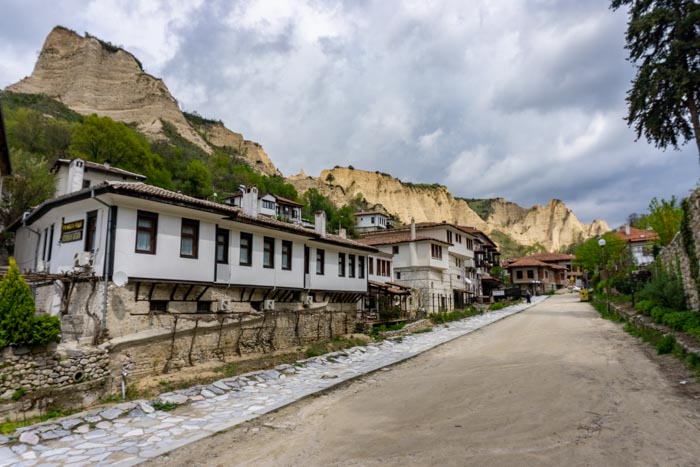
No matter how many days you have to devote to a Bulgaria travel itinerary, there is no denying that there are countless things to see and do in this underrated European nation.
Are you planning to visit Bulgaria? Have any questions? Let us know in the comments!

Related Posts:

What To Do in Plovdiv: A 1 or 2 Day Itinerary

12 Things to Do in Veliko Tarnovo: A One-Day Itinerary

How to Get From Sofia to Thessaloniki by Bus, Train or Car

About Maggie Turansky
Maggie is a co-founder and writer for The World Was Here First. Originally from the US, she has lived in five different countries and has travelled to dozens more, both solo and with her partner, Michael. She particularly loves exploring Spain and spending time in the Caucasus and the Baltics. Read more about Maggie
great itinerary, lots of useful tips too. many thanks. marilyn
Thanks, Marilyn! Hope you have a great trip.
Hi. This looks like a very useful itinerary. Plan to visit next early June after an extended Turkey, Azerbaijan, Armenia trip. Was planning 5 days but I think 10+ will afford a much better flavor of Bulgaria. Thanks!
Hello, What is the best way to travel from Plovdiv to Varna? Bus? Return to Sofia and take a flight to Varna?
Best regards, Oliveira
You can take a bus directly from Plovdiv to Varna 🙂
How affordable and practical would it be to rent a car for places outside Sofia? Or is bus a better option than driving?
Renting a car can be a great option if you want a lot of flexibility and not to be beholden to bus timetables. Prices can vary depending on a number of factors.
How would you recommend getting to Plovdiv from Sofia? Could we take the local bus?
Yes, the bus is the best way if you’re using public transport 🙂
If I want to do a Bulgaria Greece trip. Start in Sofia then to Plovdiv. Can I fly into Greece next from Plovdiv? Or do I need to go back to Sofia to catch a flight?
Hi Dee Dee, Plovdiv airport is quite limited in its routes so I think your best bet would be to go to Sofia if you want to fly to Greece. Alternatively, I would recommend looking at taking the bus and going overland!
Another interesting old town is Koprivshtiza, on the road from Sofia to Black Sea, in high mountains and very picturesque. Also, there are many caves, waterfalls, natural wonders, and spa options to choose from.
Thanks for the tip, Lil!
Thanks a lot for this wonderful guide. I find it quite helpful.
Thanks, Gali! Hope you’re able to plan a great trip 🙂
Leave a Comment Cancel reply

The Sofia Globe
Bulgaria’s independent English-language news and features website.

Tourism Ministry expects tourist visits to Bulgaria this past winter to have risen 5%
Between December 1 2023 and March 25 2024, there were 1.8 million tourist registrations in Bulgaria, and the country’s Tourism Ministry expects that tourist visits will come in at five per cent higher than in the 2022/23 winter season.
In a statement on April 4, citing data from the Unified System for Tourist Information, the ministry said that in the December 2023 – March 25 2024 period, the largest number of tourist registrations were Bulgarians, 1.3 million.
This was followed by tourists from Romania, more than 62 000, from Greece, close to 57 000, from Türkiye, more than 53 000 and from the United Kingdom, 53 000.
The ministry said that 28 000 Italian tourists visited Bulgaria during that time, from North Macedonia more than 26 000, from Germany 23 000, from Israel nearly 21 000 and Serbia 19 000.
From the beginning of December 2023 until March 25, the preferred destination was the municipality of Sofia, which reported 323 000 tourists, followed by the municipalities of Bansko, Velingrad, Samokov, Smolyan, Chepelare and Varna.
Among municipalities with ski destinations, Bansko was the most visited, followed by Samokov (including Borovets), Smolyan and Chepelare.
The largest number of tourists were in the 30-44 age group, the ministry said.
Separately, on April 3 Tourism Minister Zaritsa Dinkova said that tour operators were seeing a 70 per cent increase in early bookings of tourists from the UK for the upcoming summer season, and an increase of 20 per cent in early bookings from German tourists.
(Photo: Lance Nelson of Bansko App )
Please support The Sofia Globe’s independent journalism by becoming a subscriber to our page on Patreon :
Share this:
- ← Eurostat: Unemployment in Bulgaria in February 2024 was 4.4%
- Bulgaria’s outgoing government provides 268.8M leva for state administration pay hikes →
The Sofia Globe staff
The Sofia Globe - the Sofia-based fully independent English-language news and features website, covering Bulgaria, the Balkans and the EU. Sign up to subscribe to sofiaglobe.com's daily bulletin through the form on our homepage. https://www.patreon.com/user?u=32709292
You May Also Like

Bulgaria releases ‘Tears Getting Sober’ for 2020 Eurovision song contest in Rotterdam: Video

Bulgaria blocks North Macedonia’s EU negotiations

Covid-19 in Bulgaria: State IT firm admits ‘inaccuracy’ in reported vaccination figures
- DoctorOnline
- News in English

- · Hotels 5* · Hotels 4* · Hotels 3* · Apartment Houses · Bar&Restaurants · Rent-a-car · Casino · Sport · Mountain resorts · Sea resorts · Education · Entertainment · Shopping · Health Clinics · Beauty Zone · Public Safety · Business Finance Best in BG
- Novinite Insider
- · Radisson Blu · 4 Seasons · Energy Survey --> · French Survey · Turkish Week --> · Investors Survey · Austrian Survey · Italian Survey · US Survey · Greek Survey · Dutch Survey Special Topics
HOT: » Bulgaria in Air and Sea Schengen: Questions and Answers
Record Winter Tourism in Bulgaria: Sofia Leads Preferred Destinations

Bulgaria experienced a remarkable surge in winter tourism from December 1, 2023, to March 25, 2024, with a total of 1.8 million tourist check-ins recorded across the country. Among these, Bulgarian tourists dominated the scene, comprising 1.3 million of the total arrivals. Particularly, visitors from neighboring countries and beyond contributed significantly to the influx, with Romanian tourists numbering over 62,000, Greek tourists nearly reaching 57,000, and visitors from Turkiye exceeding 53,000. Furthermore, Great Britain made a substantial contribution, with 53,000 visitors exploring Bulgaria 's offerings.
Throughout this period, the Municipality of Sofia emerged as the top destination, welcoming 323,000 tourists. Following closely behind were Bansko, Velingrad, Samokov, Smolyan, Chepelare, and Varna, each offering a unique appeal to visitors. Bansko, renowned for its developed ski tourism, attracted the highest number of tourists , followed by Samokov (including Borovets), Smolyan, and Chepelare.
Looking ahead, Bulgaria 's winter tourism sector is expected to witness a 5% increase in visits compared to the previous winter season, with notable growth anticipated from key markets such as Turkiye, Italy, and Serbia. The Unified Tourist Information System (UTIS) shows that the largest share of tourists fell within the age group of 30 to 44, indicating a broad demographic appeal for Bulgaria 's offerings.
We need your support so Novinite.com can keep delivering news and information about Bulgaria! Thank you!

Bulgaria Defies UN Push for Arms Ban on Israel Amid Gaza Conflict Fallout
Bulgaria has stirred controversy by casting a dissenting vote against a resolution proposed in the UN Human Rights Council, which sought to impose a ban on arms sales to Israel in light of the ongoing conflict in the Gaza Strip

Bulgarian Teens Arrested for Homeless Man's Murder in Germany
In a shocking turn of events, a group of Bulgarian teenagers has been apprehended in connection with the brutal murder of a homeless man at the main train station in Dortmund, Germany

Bulgaria's Railway Upgrade: 7 Double-Decker Trains from Polish Company
In a major step to update Bulgaria's railway system, Transport and Communications Minister Georgi Gvozdeikov has approved the purchase of seven double-decker trains for Bulgarian State Railways (BDZ)

Bulgaria to Hold 'Two-in-One' Elections on June 9, President Radev Announces
In a move to streamline the electoral process and increase voter participation, President Rumen Radev declared that Bulgaria will witness a unique amalgamation of extraordinary parliamentary elections and European Parliament elections on June 9

Bulgaria Ranks Second in EU for Housing Price Growth: Eurostat Report
According to the European statistical office Eurostat, housing prices, measured by the House Price Index, increased by 0.2 % in the EU during the fourth quarter of 2023 compared to the same quarter of the previous year

Bulgaria: Chief Secretary Zhivko Kotsev Explains Departure from Ministry of Internal Affairs
Zhivko Kotsev, the Chief Secretary of Bulgaria's Ministry of Internal Affairs, has clarified the reasons behind his decision to step down from his position

Bulgaria Air Resumes Flights to Milan for the Summer Season of 2024
In March 2024, the national carrier commenced operations on flights to Malpensa Airport via the restored regular route to Milan – a beloved and popular destination for all Bulgarians

Advanced AI Cameras to Monitor Crime in Sunny Beach
In preparation for the upcoming summer season, authorities in Sunny Beach have unveiled a state-of-the-art video surveillance system comprising nearly 100 cameras, with four equipped for facial and license plate recognition

Burgas City Railway to Connect Airport by 2024
A transformative project is underway in Burgas, Bulgaria, as plans for a city railway to link the Central Railway Station with Burgas Airport are on track for completion by the end of 2024

Change of Gates for Domestic Flights of 'Bulgaria Air' at Sofia Airport
As a result of the accession of Bulgaria to the Schengen area from the end of March 2024, a change is also required at Sofia airport regarding the exit used by passengers for domestic routes in the country operated by the national carrier

Schengen Launch at Burgas Airport: Revolutionizing Travel Efficiency
A landmark moment unfolds at Burgas Airport as the first Schengen flight touches down, signaling a new era of travel efficiency and convenience for passengers

Ready for Takeoff: Burgas Airport's Summer Flight Schedule Unveiled
The concessionaire company Fraport Twin Star Airport Management announced that Burgas Airport will kick off the active flight season with its first flight since Bulgaria's entry into the Schengen area by air, scheduled for the end of March.

The Chief Secretary Zhivko Kotsev Withdraws His Resignation

Forbes Recognizes Two Bulgarians Among World's Richest Individuals Yet Again

Analysis: Is there a possibility of ending the Russo-Ukrainian War before 2025?
Bulgarians you should know about.

- Rayna Knyaginya: The Embodiment of Bulgarian Courage and Defiance
- History in Paintings: 125 Years Since the Birth of Dechko Uzunov (GALLERY)
Our Readers Have Spoken

- Do Migrants Pose a Threat in Bulgaria? Our Readers Have Spoken
- Euro or Lev? Our Readers Have Spoken
Daily Dose Of Culture

Ups & Downs

UN Happiness Report: Bulgaria's Astonishing Leap in Rankings

Bulgaria: 3 Regions With Lowest Life Expectancy - EU Report 2022
- WHAT’S ON
- SPECIAL REPORT
- DESTINATIONS
- LATEST NEWS
- GREEK EDITION
Passport checks for air travelers lifted as Bulgaria and Romania join EU’s Schengen
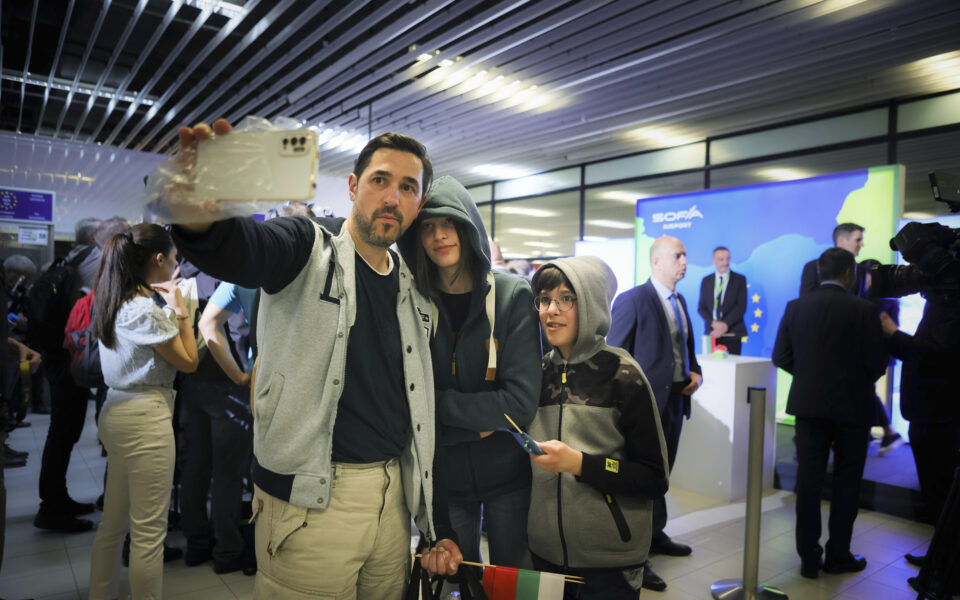
Airports in Sofia and Bucharest on Sunday removed passport check points for those departing to or arriving from most European Union member states as Bulgaria and Romania partially joined the Schengen open-travel zone.
The two countries reached an agreement late last year to join Europe’s free-travel area by air and sea after Austria opposed full membership, including land crossings, saying Romania and Bulgaria needed to do more to prevent illegal immigration.
“Of course this is a very beautiful achievement for Bulgaria which makes things easier for us, as Bulgarians,” said Mincho Yurukov, who arrived to Sofia airport from Berlin.
“Also, we feel like Europeans, that is a very important thing, the flight is much nicer, no checks.”
The Interior minister in the outgoing government, Kalin Stoyanov, told journalists on Sunday that Bulgaria should become a full member of the Schengen zone by the end of this year, meaning border check points will be removed for people and goods traveling by road and by rail.
The Romanian prime minister has also said the country expects to finish negotiations on land borders this year.
“I welcome the lifting of internal air and sea border checks. This is a great success for both countries,” European Commission President Ursula von der Leyen in a statement.
“Together, we are building a stronger, more united Europe for all our citizens,” she said.
Bulgaria and Romania have joined a regional police initiative with Austria, Greece and Slovakia to counter the flow of migrants.
The European Union’s border agency Frontex said last month it would triple the number of its officers in Bulgaria to help stem the amount of people crossing into the bloc from Turkey. [Reuters]
Subscribe to our Newsletters
Enter your information below to receive our weekly newsletters with the latest insights, opinion pieces and current events straight to your inbox.
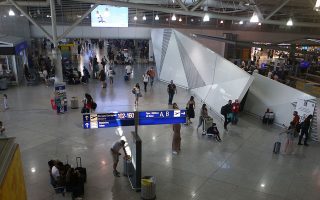
Romanians, Bulgarians to fly, sail passport-free to EU from end-March 2024
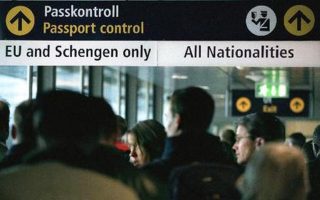
Hungary ready to lift objection to Bulgaria’s Schengen entry

EU plans to fast-track some financial aid to Egypt

SYRIZA unveils initial candidates for European elections

European regulators close in on Big Tobacco’s new tea sticks
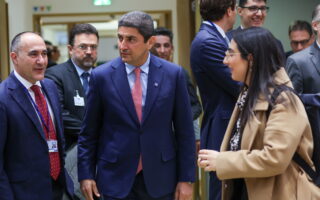
Avgenakis: Decision on EU agriculture policy positive, but not enough

Romania and Bulgaria partially join Europe’s Schengen travel zone, but checks at land borders remain
S OFIA, Bulgaria (AP) — Romania and Bulgaria partially joined Europe’s ID-check-free travel zone on Sunday, marking a new step in the two countries’ integration with the European Union.
After years of negotiations to join the Schengen area, there is now free access for travelers arriving by air or sea from both countries. However, land border checks will remain in place due to opposition primarily from Austria which has long blocked their bid over illegal migration concerns.
EU Commission President Ursula von der Leyen hailed the change as a “huge success for both countries” and a “historic moment” for what is the world’s largest free travel zone.
The Schengen Area was established in 1985. Before Bulgaria and Romania’s admission, it was comprised of 23 of the 27 EU member countries, along with Switzerland, Norway, Iceland and Liechtenstein. Around 3.5 million people cross an internal border each day.
Austria vetoed Romania and Bulgaria’s admission into the Schengen zone at the end of 2022 but allowed Croatia full accession. Bulgaria and Romania joined the EU in 2007 and Croatia in 2013.
Siegfried Muresan, a Romanian Member of the European Parliament, told The Associated Press that it is “an important first step” that will benefit millions of travelers annually.
“Bulgaria and Romania have been fulfilling all criteria for joining the Schengen area for years — we are entitled to join with the terrestrial border as well,” he said, adding that it “will offer additional arguments to the last EU member state that has been vetoing the full accession.”
Romanian Prime Minister Marcel Ciolacu called it a “well-deserved achievement” for Romania that he said will benefit citizens who can travel more easily and will bolster the economy.
“We have a clear and firmly assumed government plan for full accession to the Schengen Area by the end of the year,” he said.
The EU’s executive branch, the European Commission, has said for more than a decade that Romania and Bulgaria both meet the technical criteria for full accession, which requires unanimous support from their partners. Both countries have agreed to implement random security screening at airports and maritime borders to combat illegal migration and cross-border crime.
“Bulgaria’s full accession to Schengen will happen by the end of 2024,” Kalin Stoyanov, Bulgaria's interior minister, told reporters on Sunday. “We showed and continue to show to illegal migrants that they should not take the road to Europe through Bulgaria."
The lifting of border control is expected to facilitate operations at Bulgaria’s four international airports, which in 2023 saw nearly 11 million passengers, according to official data.
The airport in the capital, Sofia, serves as the biggest hub for Schengen flights which constitute 70% of all flights, airport representatives said.
While the eased regulations are expected to positively impact the tourism sector, members of the European Parliament have voiced concerns about long queues at the EU’s land borders and the impact it can have on trade in the bloc’s single market, as well as the health and safety of drivers.
Truck drivers are frequently stuck in kilometers-long queues at the borders of both Romania and Bulgaria. The Union of International Carriers in Bulgaria estimates delays cost the sector tens of millions of euros each year.
McGrath reported from Sighisoara, Romania.

What to know about Schengen zone, Europe’s ‘border-free’ travel system
Schengen countries allow international travelers to move freely across borders without additional passport checks.

Europe’s “border-free” Schengen zone has added travel protections for two more countries, making it easier for more people to explore the southeastern region of the continent.
Romania and Bulgaria partially joined the Schengen area on Sunday, which means visitors who arrive by air or sea from other countries in the zone can cross their borders without an ID check. Land borders will remain subject to ID checks because of opposition led by Austria, which has long cited irregular migration as a concern when it comes to welcoming the two Eastern European states into the Schengen agreement. The move comes more than a decade after Romania and Bulgaria joined the European Union.
The European Commission had previously recommended that Bulgaria and Romania be admitted to join the Schengen zone, starting in 2011 and most recently in 2023. A combination of internal problems in the two countries and opposition from other countries citing irregular migration concerns — especially after the so-called “migrant crisis” of 2015 — meant they were caught in “Schengen purgatory” until now, according to Leon Züllig, a researcher and Schengen expert at Germany’s Justus Liebig University Giessen.
Where to go
Our favorite destinations: These 12 destinations are at the top of our wish list for where to go this year, without crowds. In 2023, we explored an Alaskan bear paradise, Brooklyn’s famous pizzerias and a hidden gem in Italy, among other highlights ..
Travel like a local: Residents share their favorite places in our top city guides: New Orleans , Rome , Tokyo and Mexico City .
National parks: This comprehensive guide has details on all 63 U.S. national parks. For a deep dive into five of the most well-known, you can listen to the Field Trip podcast . Then explore tips from locals for visiting Yosemite , Glacier and Everglades .
Tales from the road: Dolly Parton has opened a new resort at her theme park complex in Tennessee, while “Fixer Upper” stars Chip and Joanna Gaines have a new hotel in Waco . Road-trippers may be just as excited to see the cartoon beaver at Buc-ee’s , and bargain-hunters should consider a stop at the Unclaimed Baggage store in Scottsboro, Ala.
- What to know about Schengen zone, Europe’s ‘border-free’ travel system April 3, 2024 What to know about Schengen zone, Europe’s ‘border-free’ travel system April 3, 2024
- At Europe’s sauna marathon, schvitzing is a sport February 27, 2024 At Europe’s sauna marathon, schvitzing is a sport February 27, 2024
- 18 courses, no murder: A floating restaurant right out of ‘The Menu’ September 30, 2023 18 courses, no murder: A floating restaurant right out of ‘The Menu’ September 30, 2023

- Personal Finance
- Today's Paper
- Partner Content
- Entertainment
- Social Viral
- Pro Kabaddi League
Sponsored Content
Synechron Acquires Dreamix, a Digital Product Development and Software Engineering Firm Headquartered in Sofia, Bulgaria

Disclaimer: No Business Standard Journalist was involved in creation of this content
Don't miss the most important news and views of the day. Get them on our Telegram channel
First Published: Apr 04 2024 | 4:50 PM IST
Explore News
- Suzlon Energy Share Price Adani Enterprises Share Price Adani Power Share Price IRFC Share Price Tata Motors Share Price Tata Steel Share Price Yes Bank Share Price Infosys Share Price SBI Share Price Tata Power Share Price HDFC Bank Share Price
- Latest News Company News Market News India News Politics News Cricket News Personal Finance Technology News World News Industry News Education News Opinion Shows Economy News Lifestyle News Health News
- Today's Paper About Us T&C Privacy Policy Cookie Policy Disclaimer Investor Communication GST registration number List Compliance Contact Us Advertise with Us Sitemap Subscribe Careers BS Apps
- Budget 2024 Lok Sabha Election 2024 IPL 2024 Pro Kabaddi League IPL Points Table 2024

IMAGES
VIDEO
COMMENTS
Sofia. Bulgaria's pleasingly laid-back capital is often overlooked by visitors heading to the coast or the ski resorts, but they're missing something special. Sofia is no grand metropolis, but it's a modern, youthful city, with a scattering of onion-domed churches, Ottoman mosques and stubborn Red Army monuments that lend an eclectic, exotic feel.
Here are the best things to do in Sofia: 1. St. Alexander Nevski Cathedral. Source: flickr. St. Alexander Nevski Cathedral. The scale of this building will blow you away. Inside St. Alexander Nevski has room for 10,000 people and it's the second largest cathedral in the Balkan region.
Located on an area of 3500 sq.m. Here everyone can find a breathtaking combination of an ice rink with real ice, an inflatable playground, a maze, RopeLand playground , a rope, a climbing wall, a train, pushchairs and much more. The park offers its young visitors a completely different and colorful atmosphere, where the imagination dictates the ...
Things to Do in Sofia, Bulgaria: See Tripadvisor's 183,851 traveler reviews and photos of Sofia tourist attractions. Find what to do today, this weekend, or in April. ... With focus on the 1300 years history of the Bulgarian state, the museum is a must-see attraction to visit while in Sofia. Closed on national holidays - 1 Jan, 24, 25 Dec.
When European city-hopping is mentioned, most travellers imagine the alluring charms of Paris, Rome or London. But go off the beaten track and explore Bulgaria's vibrant and youthful capital Sofia, and you'll be surprised by its rocking cultural scene, heartwarming food and chilled-out vibe. Whether you want to marvel at historic sights, trek on mountain slopes or enjoy a glass of world ...
Lucy is clearly the best co-worker in Bulgaria. If you plan to visit Sofia as a digital nomad as many travelers do, there are a lot of great coworking spots that cater to the digital nomad crowd. Here are a few we know, but haven't tested personally. Catcotheque / Коткотека: Cowork with cats! From 8 BGN for the first hour and 2 BGN ...
Mapping out the ideal Sofia itinerary is a highlight of visiting Bulgaria and spending 1, 2 or 3 days in Sofia is an unbeatable experience. Sofia is a city that is often overlooked, too frequently shunted and added to "skip it" lists without a second thought. And, to be honest, it might be understandable at first sight of Bulgaria's ...
Best things to do in Sofia, Bulgaria. With all those travel tips out of the way, let's take a look at some of the best things you can do in Sofia on your trip! 1. Take the free walking tour. An excellent way to start your time in Sofia is by taking one of the free 2-hour walking tours offered by Free Sofia Walking Tour. In the Summer, Free ...
Explore Sofia. Sofia is Bulgaria's capital since April 3, 1879. The city is located atop Serdica, a historic Roman city, and they are finding more and more interesting ruins. As a European capital, it has lots to do and see. The Vitosha mountain to the south makes the sunsets spectacular in this valley. The folks are lovely and polite, but we ...
Discover the best attractions in Sofia including Aleksander Nevski Cathedral, Sveta Sofia Church, and Boyana Church. Lonely Planet. Destinations. Planning. Inspiration. Shop. Search. Saves. Open main menu. ... Shopping; Hotels; Show/Hide Map. Aleksander Nevski Cathedral. Sofia. One of the symbols not just of Sofia but of Bulgaria itself, this ...
Best Time to Visit Sofia, Bulgaria. The best time for travelers to visit Sofia, Bulgaria is during the spring or fall seasons. In the spring, which spans from April to June, the city comes alive with blooming flowers and temperate weather. Travelers can explore the sprawling parks and vibrant outdoor cafes while enjoying the pleasant temperatures.
Exzarh Iosif. Borisova Gradina. Down bul. Tsar Osvoboditel, past Sofia University, is Borisova Gradina, named after Bulgaria's interwar monarch, Boris III. The park - the largest in Sofia - has a rich variety of flowers and trees, outdoor bars, two football stadiums and two huge Communist monuments. The City Art Gallery.
Sofia Travel Costs. Hostel prices - A bed in a hostel dorm with 4-6 beds costs between 12-25 BGN per night. For a private room in a hostel, expect to pay between 35-75 BGN per night. Free Wi-Fi is standard and most hostels also have self-catering facilities.
Sofia. Sofia (София) is the capital of Bulgaria. It is also the biggest city in the country with about 2 million citizens (including suburbs). Today, Sofia is a dynamic European capital, distinguished by its unique combination of European and communist-style architecture as well as many beautiful Orthodox churches.
With a past rooted in Ottoman tradition and Socialist struggle, the narrative of Bulgaria tells a colorful story of conflict, fortitude and perseverance, where the capital city Sofia emerges as a sparkling center of energy and cultural richness. Offering a plethora of compelling galleries, museums, parks and night spots, there has never been a better time to visit the city, which today stands ...
Why Visit Sofia Bulgaria? There are a lot of great reasons to visit Sofia, but here are the best of the best! : Sofia is affordable; Sofia has great food; Experience Sofia's unique culture and atmosphere; Sofia has an amazing history; Sofia is Affordable. For a major city in Europe, Sofia is ridiculously inexpensive across the board.
12. Climb a Mountain in Sofia - Visit Mount Vitosha. Vitosha Mountain, with its highest peak Cherni Vrah (2290m), is Bulgaria's fourth highest mountain, and is located near Sofia. Almost every point in the city has a view of the mountain and it's easy to get here. Vitosha is the Balkans' oldest national park.
Free food tour with Balkan Bites. The Central Mineral Baths. Fill up your bottle with natural spring water. Journey up Vitosha Mountain. Step back in time at the Red Flat. Seven Rila Lakes hike. Free walking tour with Sofia Free Tours. Rila Monastery. Check out the street art.
Plan your next travel and visit Bulgaria. Discover Bulgaria's rich history, stunning landscapes, and vibrant culture. Start your journey today! ... Sofia Summer Fest. 30.06.2023 - 24.09.2023. CULTURAL EVENINGS TRADITIONS & ART. 28.06.2023 - 02.07.2023 ... Make your trip to Bulgaria an unforgettable experience.. all.
Other markets to visit include the Sofia Central Market Hall and the Bitaka Flea Market. food tours in Sofia; 3 - Check out Sofia's largest museum, the National History Museum. With over 650,000 exhibits, the National History Museum welcomes visitors to learn more about the fascinating and deep history of Bulgaria, and the capital city Sofia.
Nick Dauk 01 August 2023. Bulgaria's capital Sofia is a vibrant canvas portraying the past, present and future of its people, land and culture. The architecture, cuisine and lifestyle of the Sofians reflects the Roman, Greek and Ottoman impact on this Balkan foothold. Green spaces stand alongside dazzling museums and galleries, century-old ...
Days 4-5: Plovdiv. After exploring Sofia, the final step on a 5-day Bulgaria itinerary should be the second-largest city of Plovdiv. As one of the European Capitals of Culture in 2019, Plovdiv is probably the most tourist-friendly city in Bulgaria and it has a lot to offer visitors.
Visit Bulgaria, Sofia, Bulgaria. 179,498 likes · 547 talking about this. Welcome to the travel guide for Bulgaria
Between December 1 2023 and March 25 2024, there were 1.8 million tourist registrations in Bulgaria, and the country's Tourism Ministry expects that tourist visits will come in at five per cent higher than in the 2022/23 winter season. In a statement on April 4, citing data from the Unified System ...
Bulgaria experienced a remarkable surge in winter tourism from December 1, 2023, to March 25, 2024, with a total of 1.8 million tourist check-ins recorded across the country.
Passengers make a selfie as they at Sofia airport, Bulgaria, Sunday. Romania and Bulgaria partially joined Europe's ID-check-free travel zone on Sunday, marking a new step in the two countries' integration with the European Union.
SOFIA, Bulgaria (AP) — Romania and Bulgaria partially joined Europe's ID-check-free travel zone on Sunday, marking a new step in the two countries' integration with the European Union. After ...
April 3, 2024 at 2:07 p.m. EDT. (Washington Post Illustration; iStock) 7 min. Europe's "border-free" Schengen zone has added travel protections for two more countries, making it easier for ...
New York [US]/ London [UK]/ Pune (Maharashtra) [India]/ Sofia [Bulgaria], April 4: Synechron, a leading global digital transformation consulting firm focused on financial services and technology organizations, announced its acquisition of Dreamix, a custom software development company founded in 2006. Dreamix, headquartered in Sofia, Bulgaria, is a bespoke end-to-end software engineering and ...